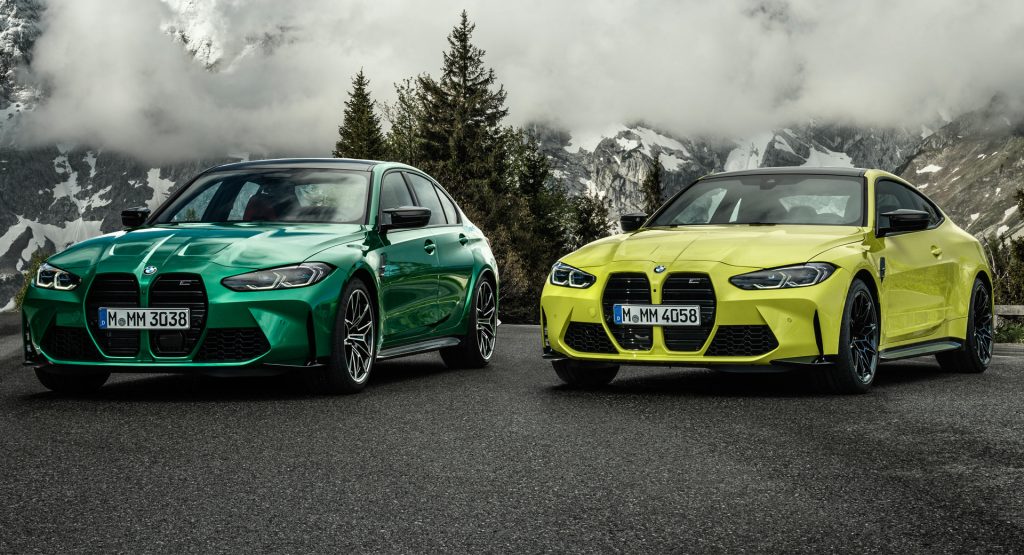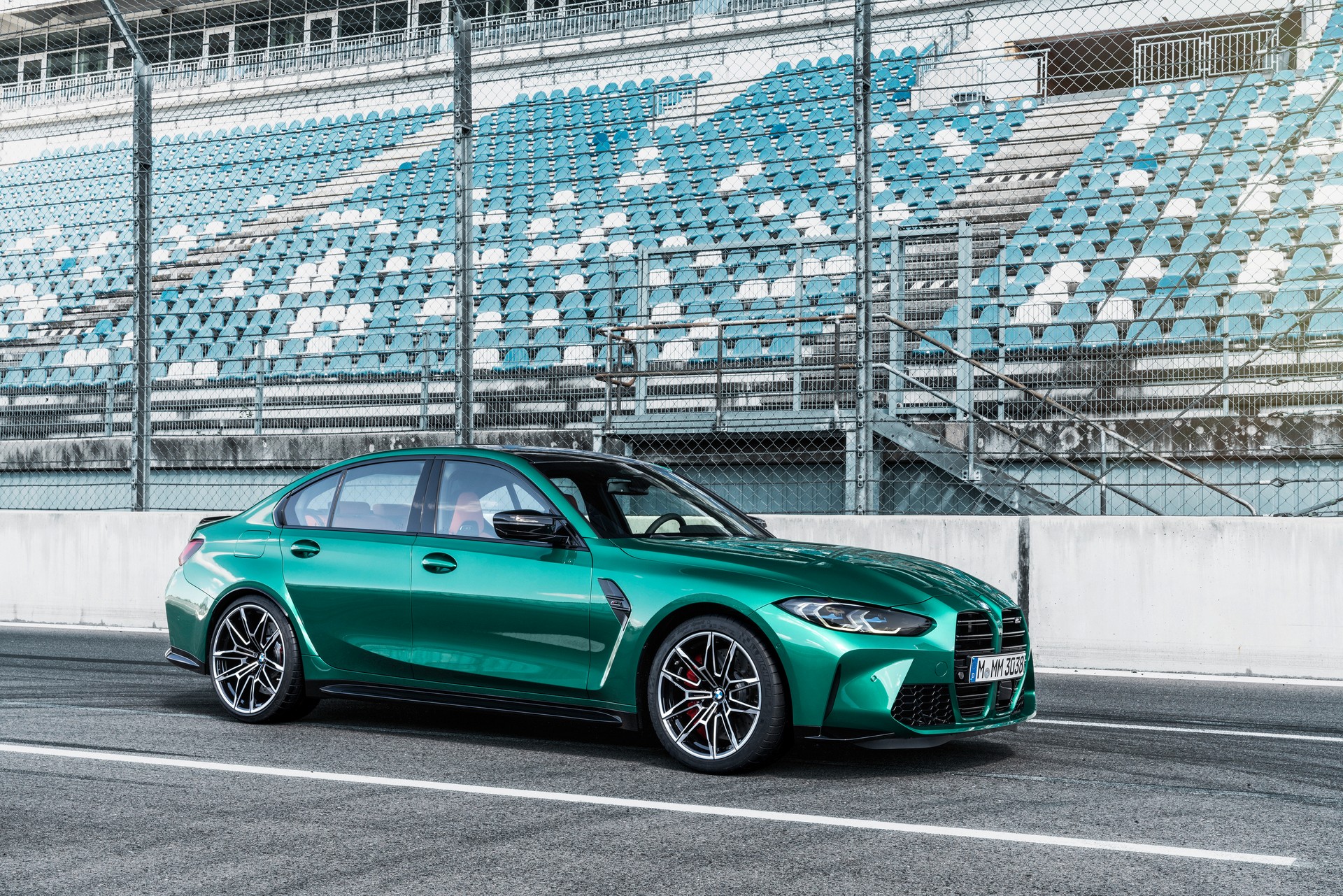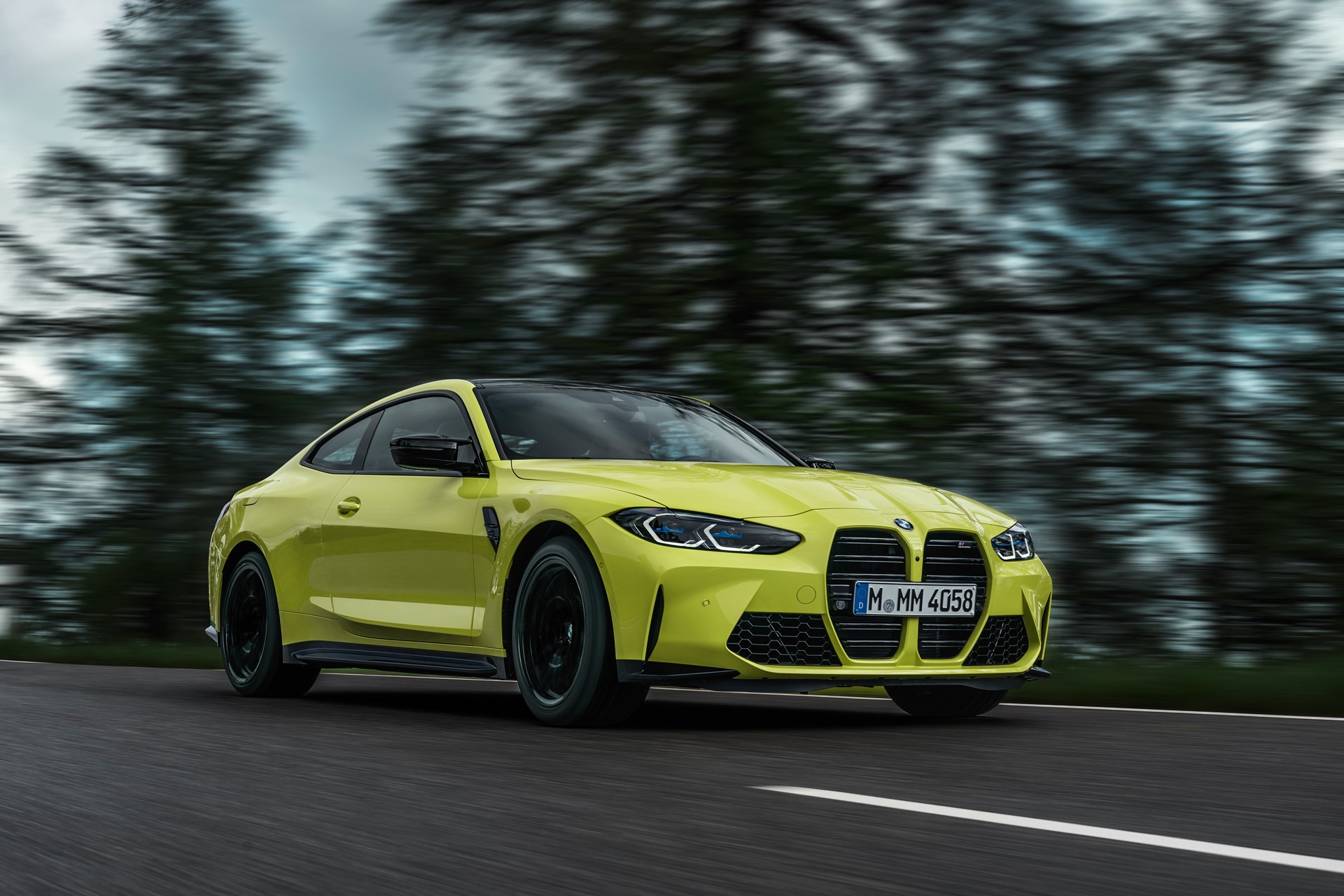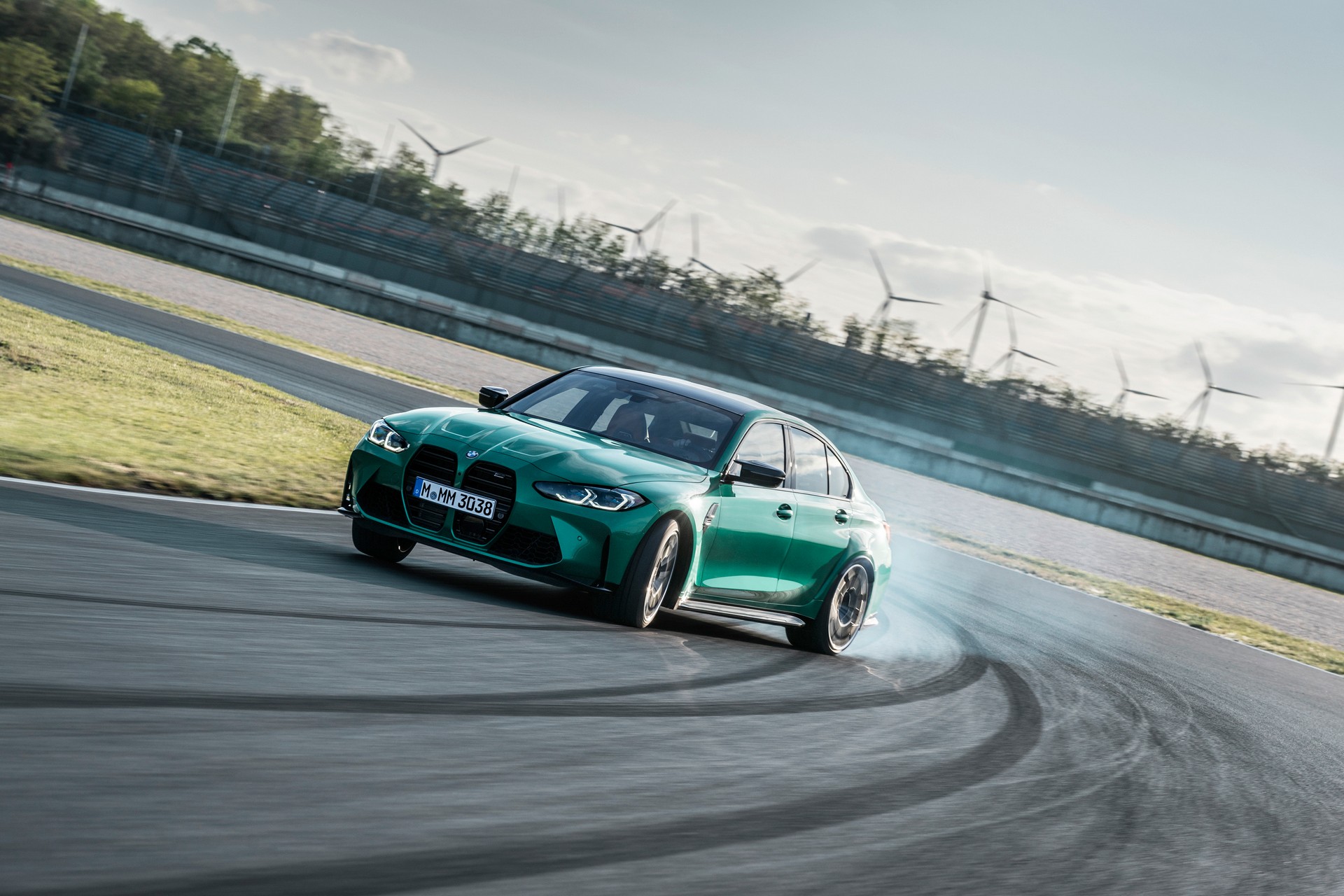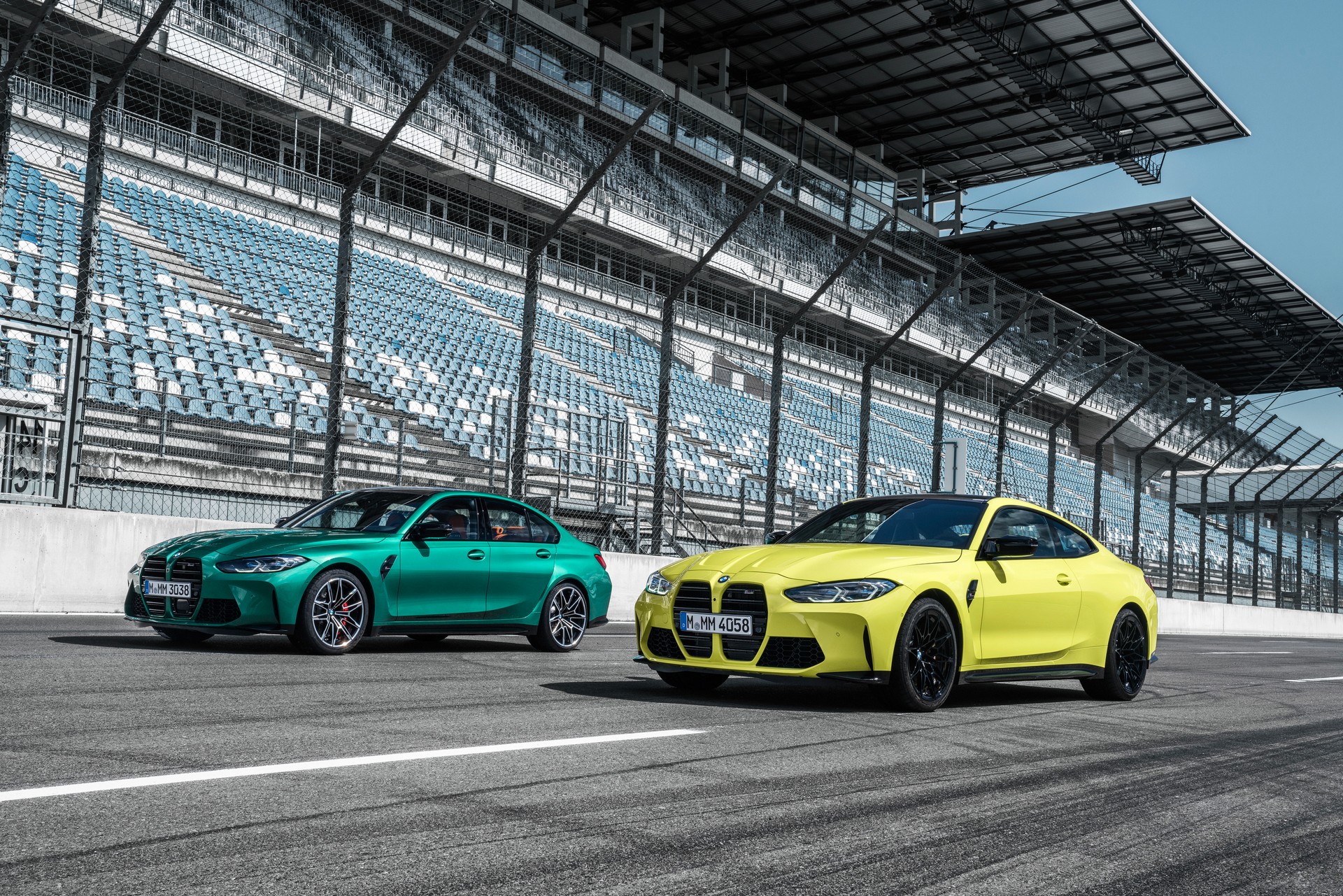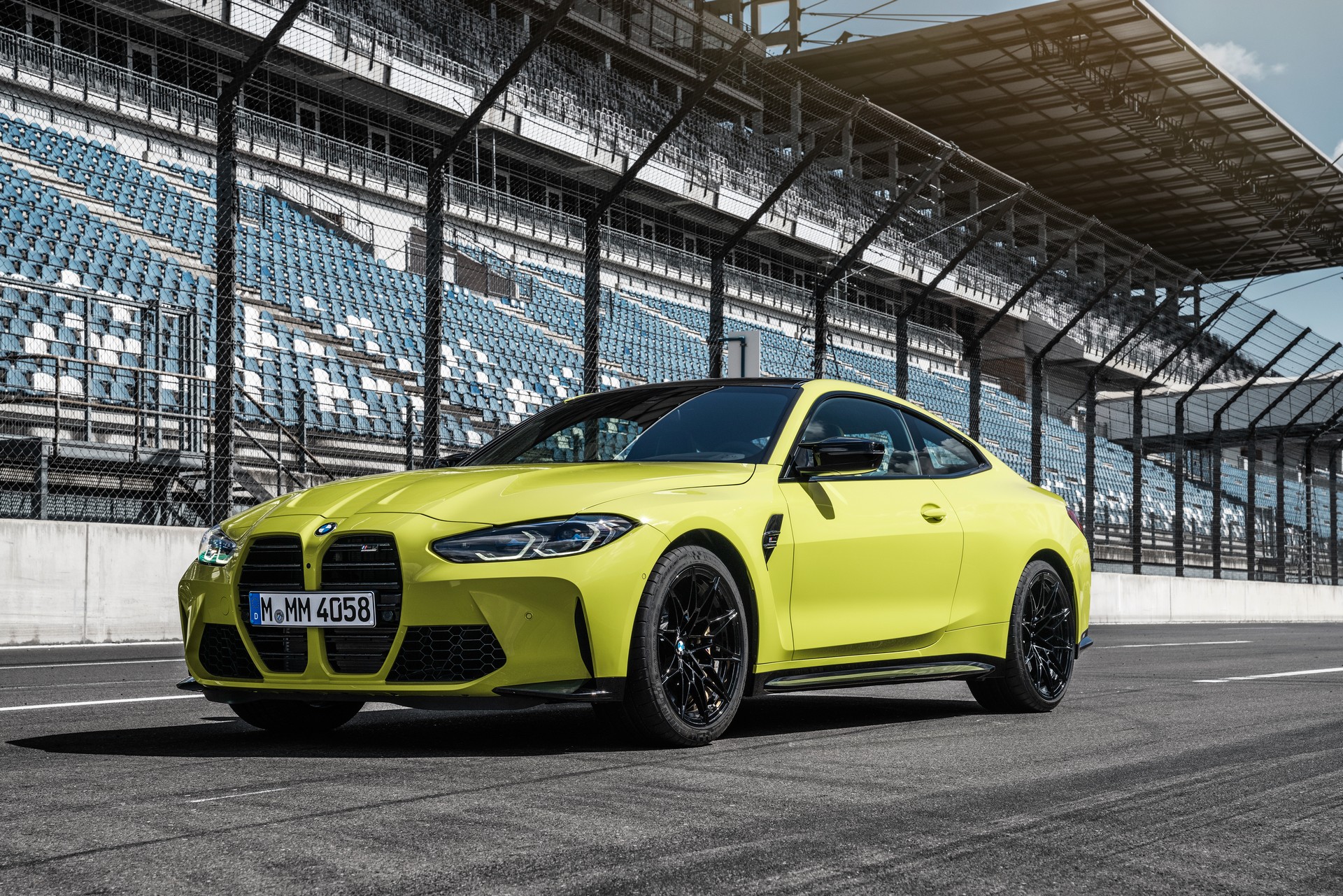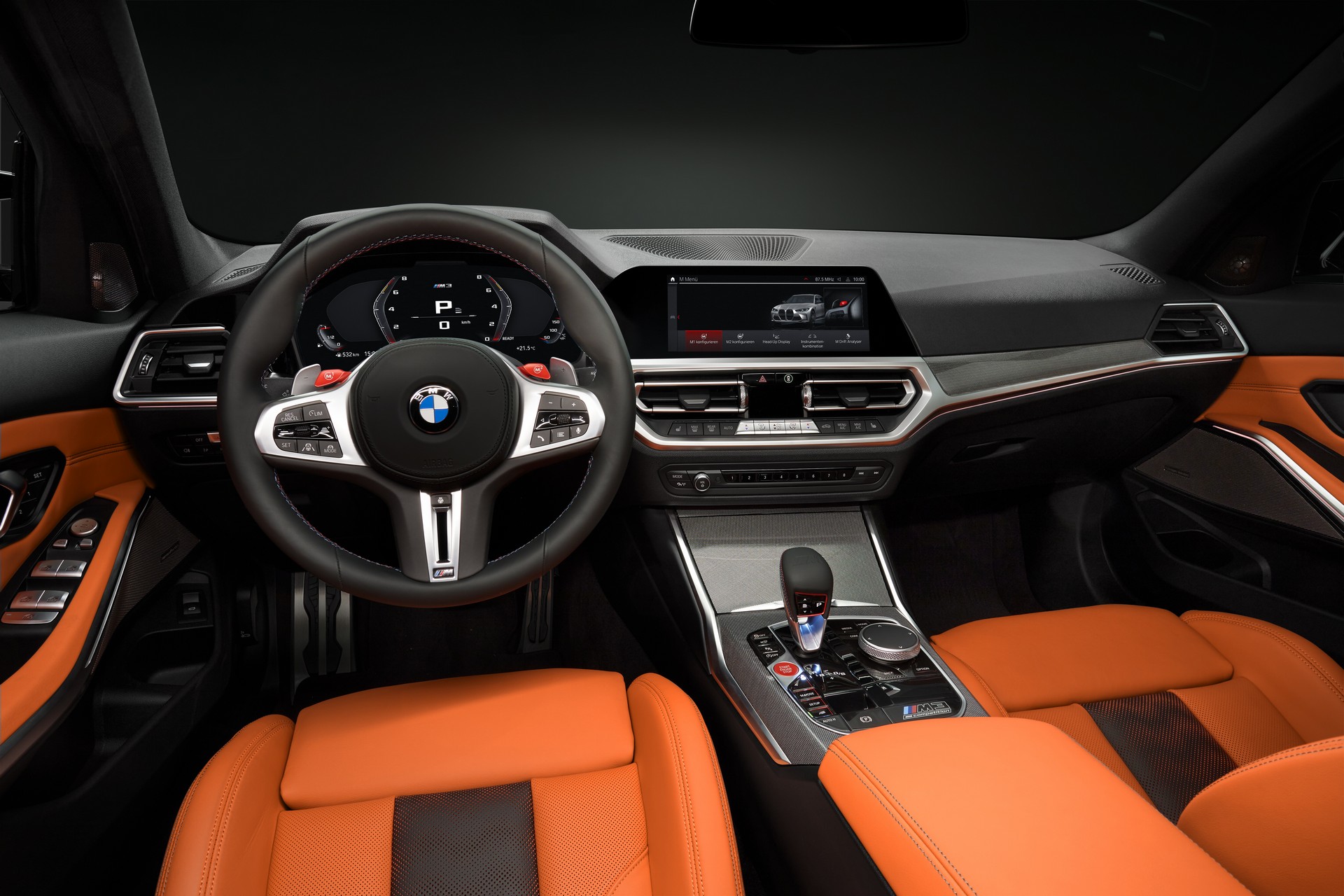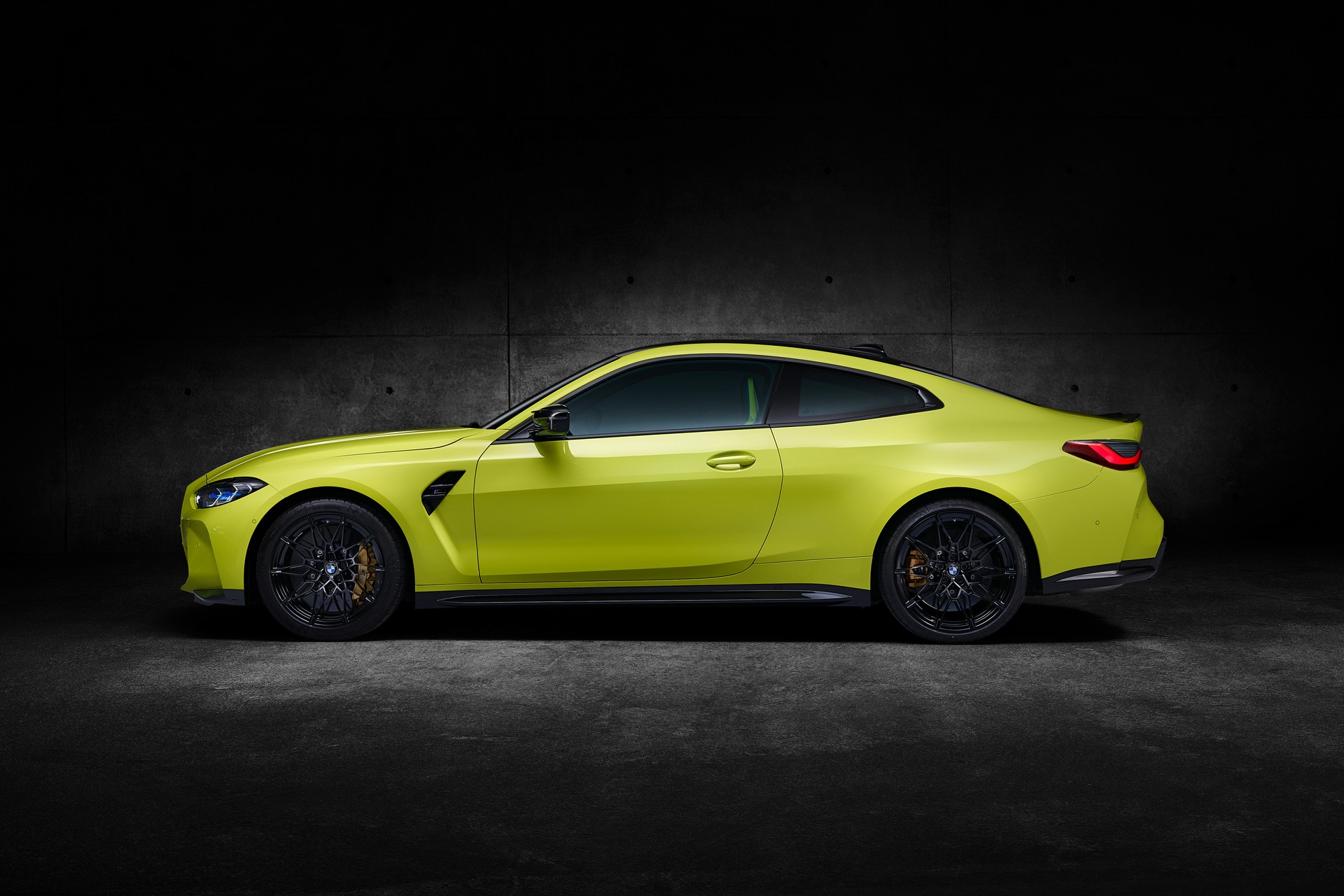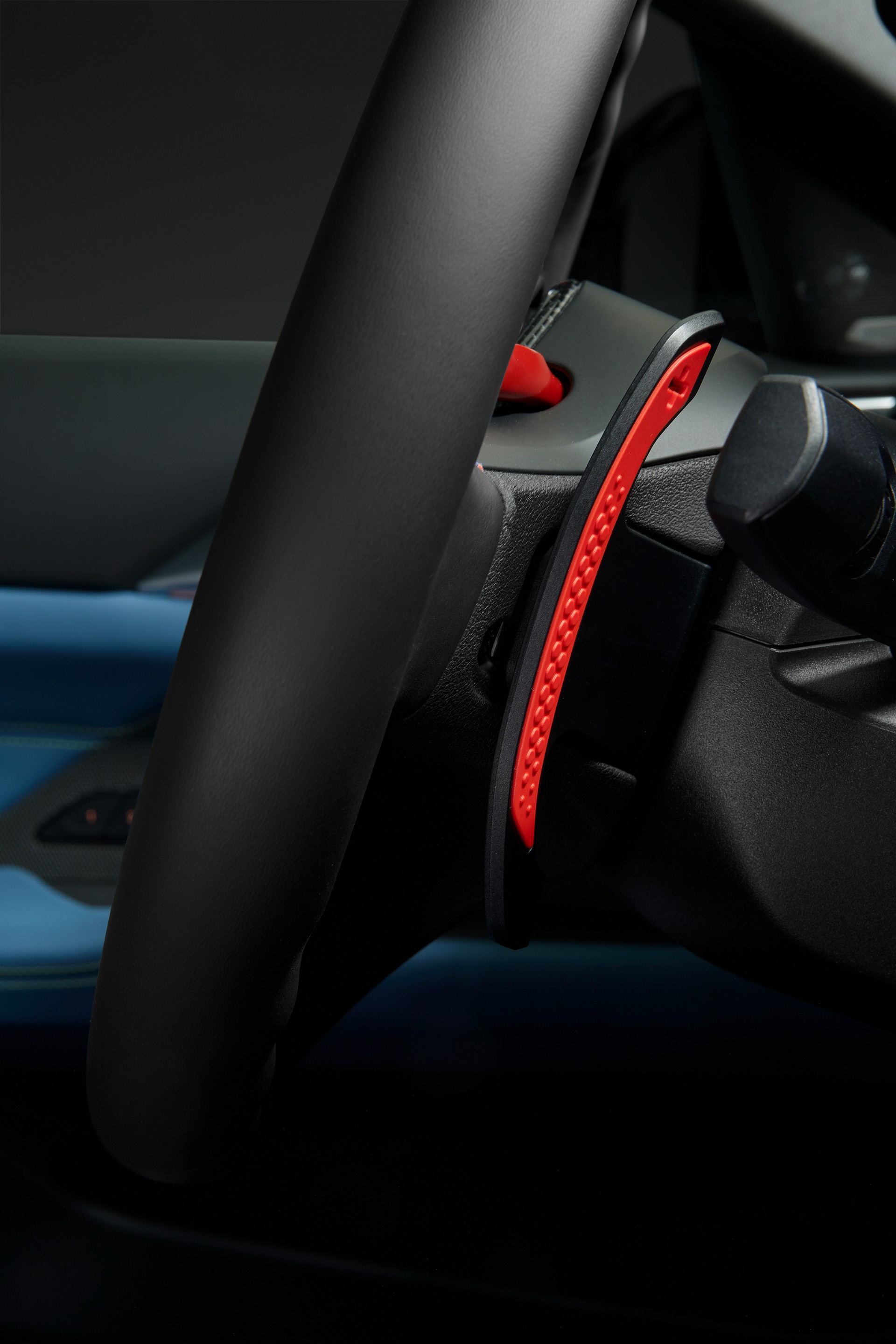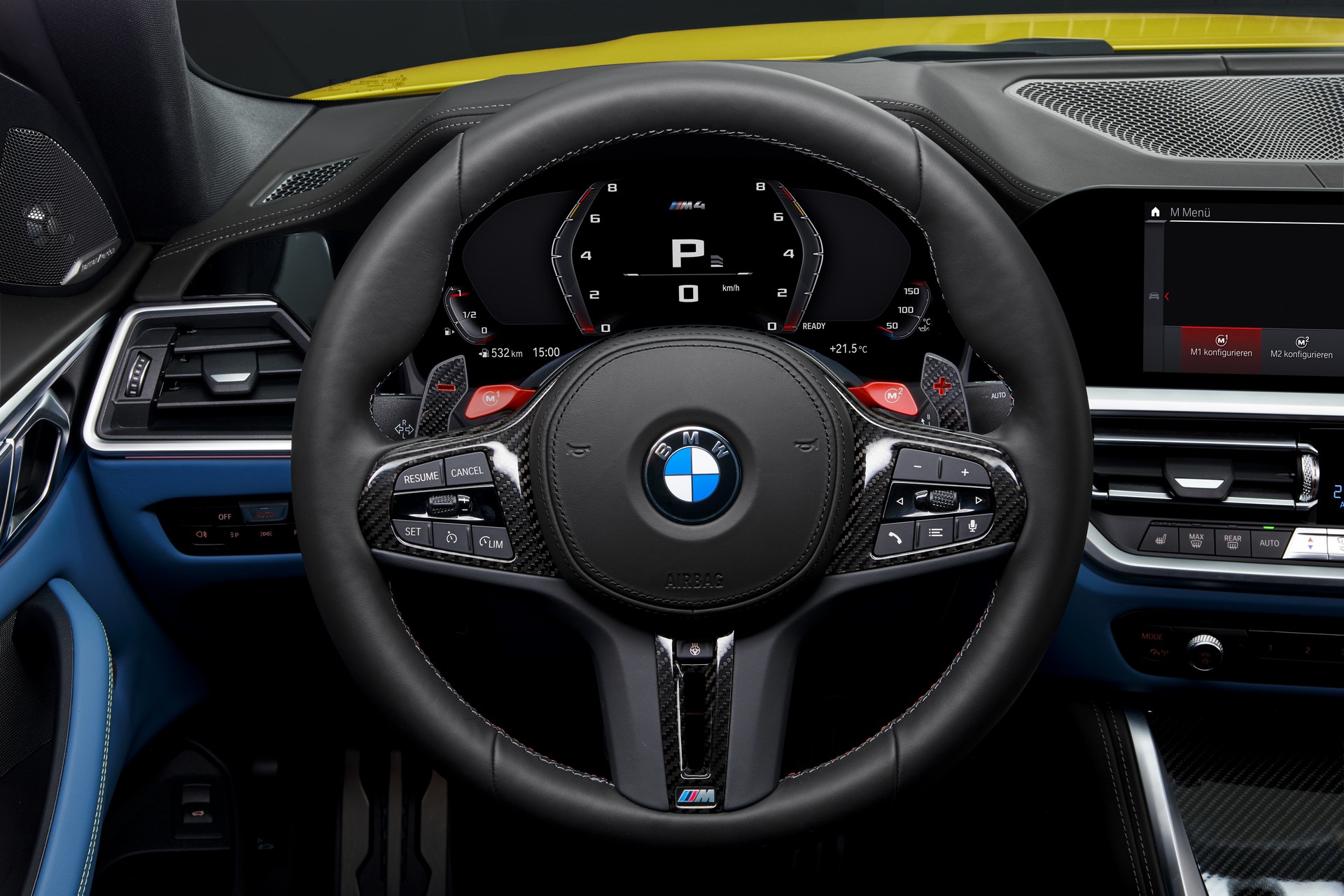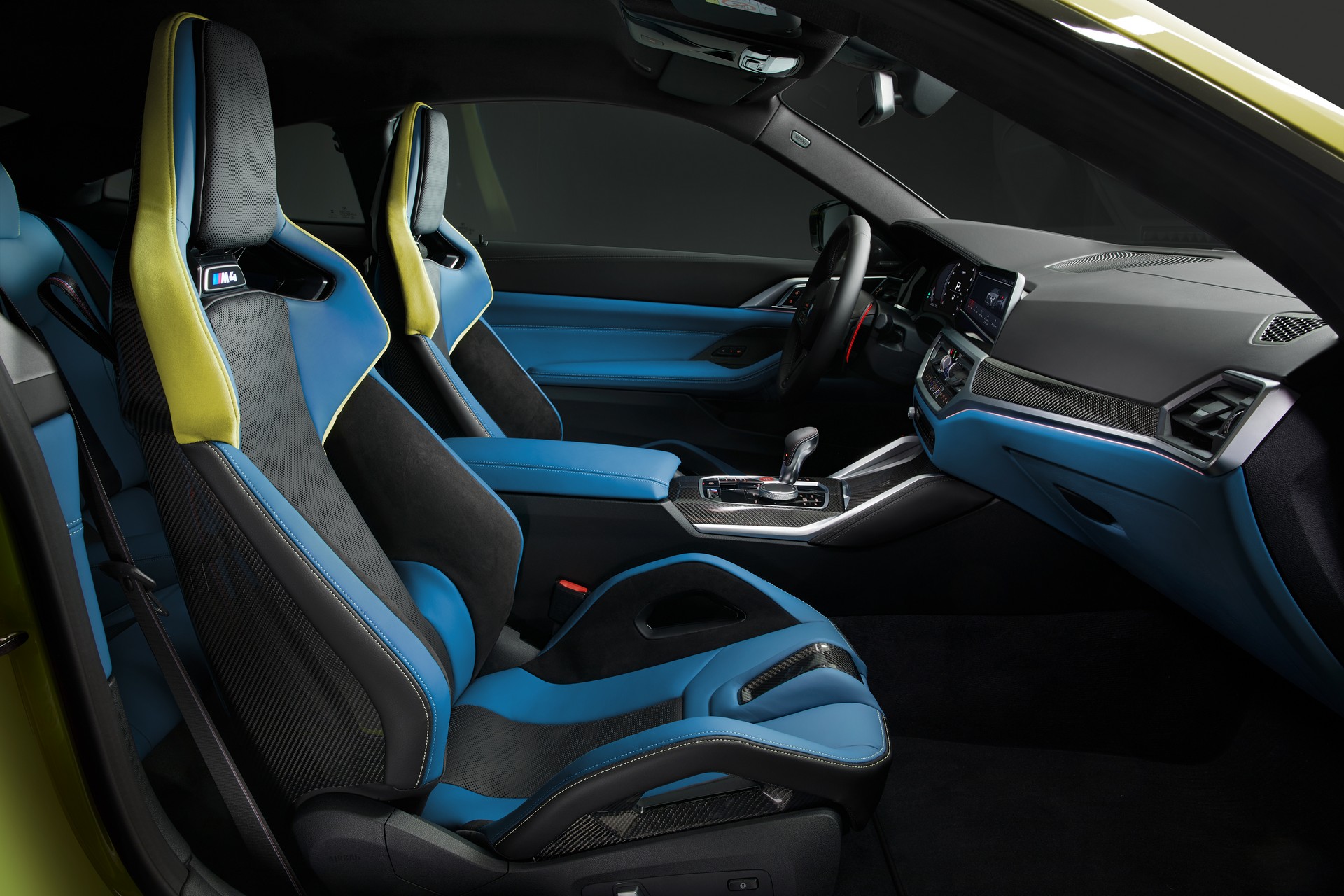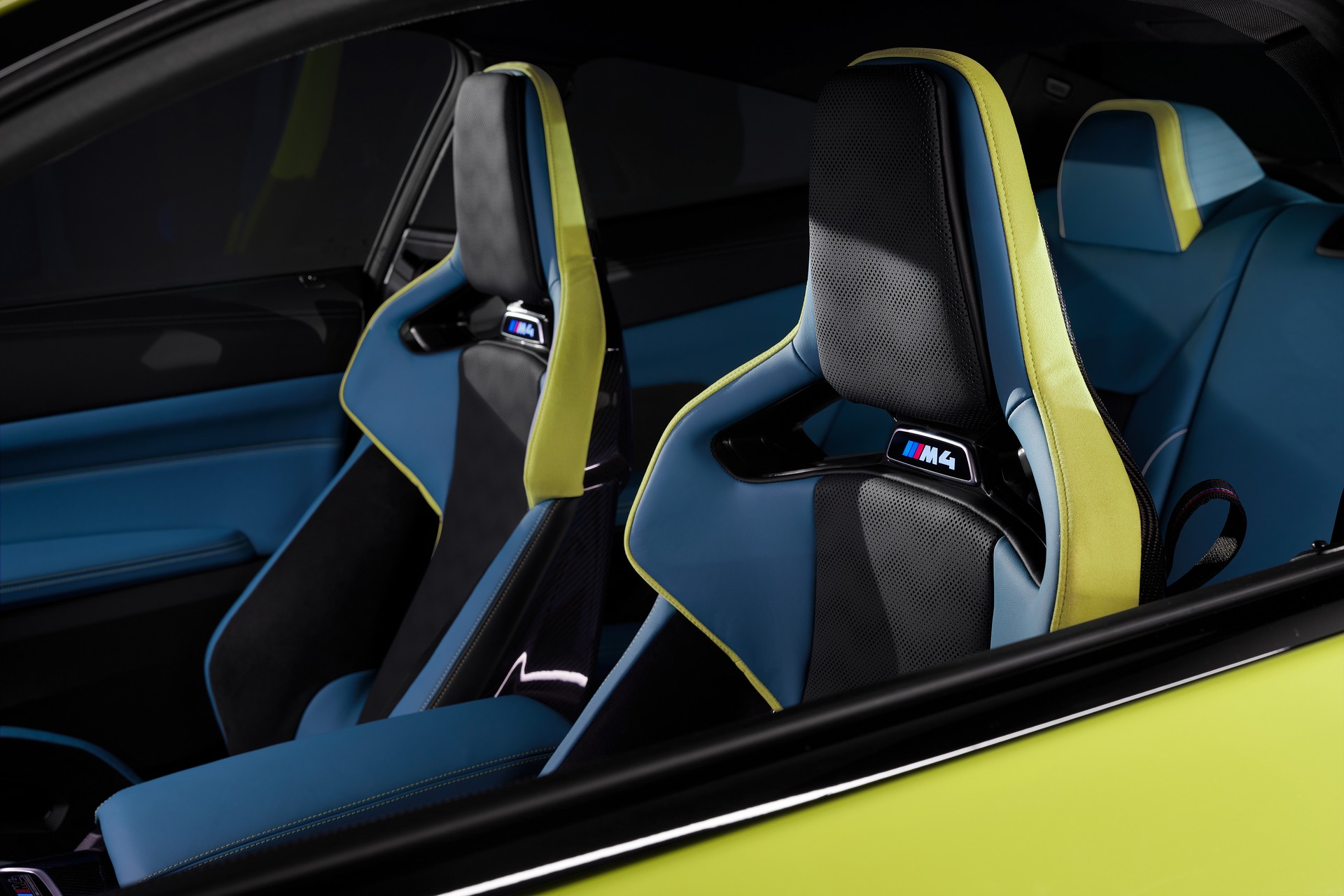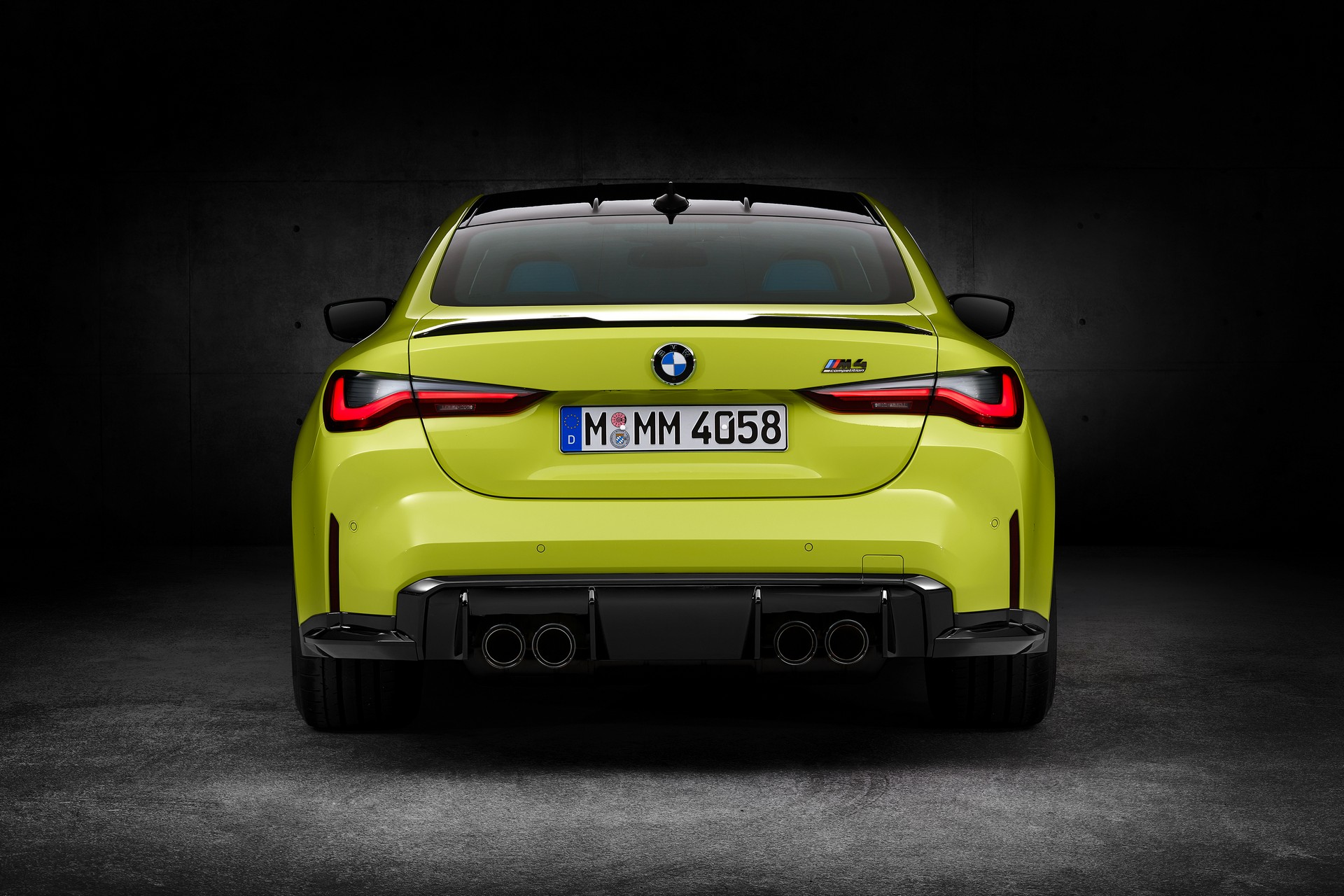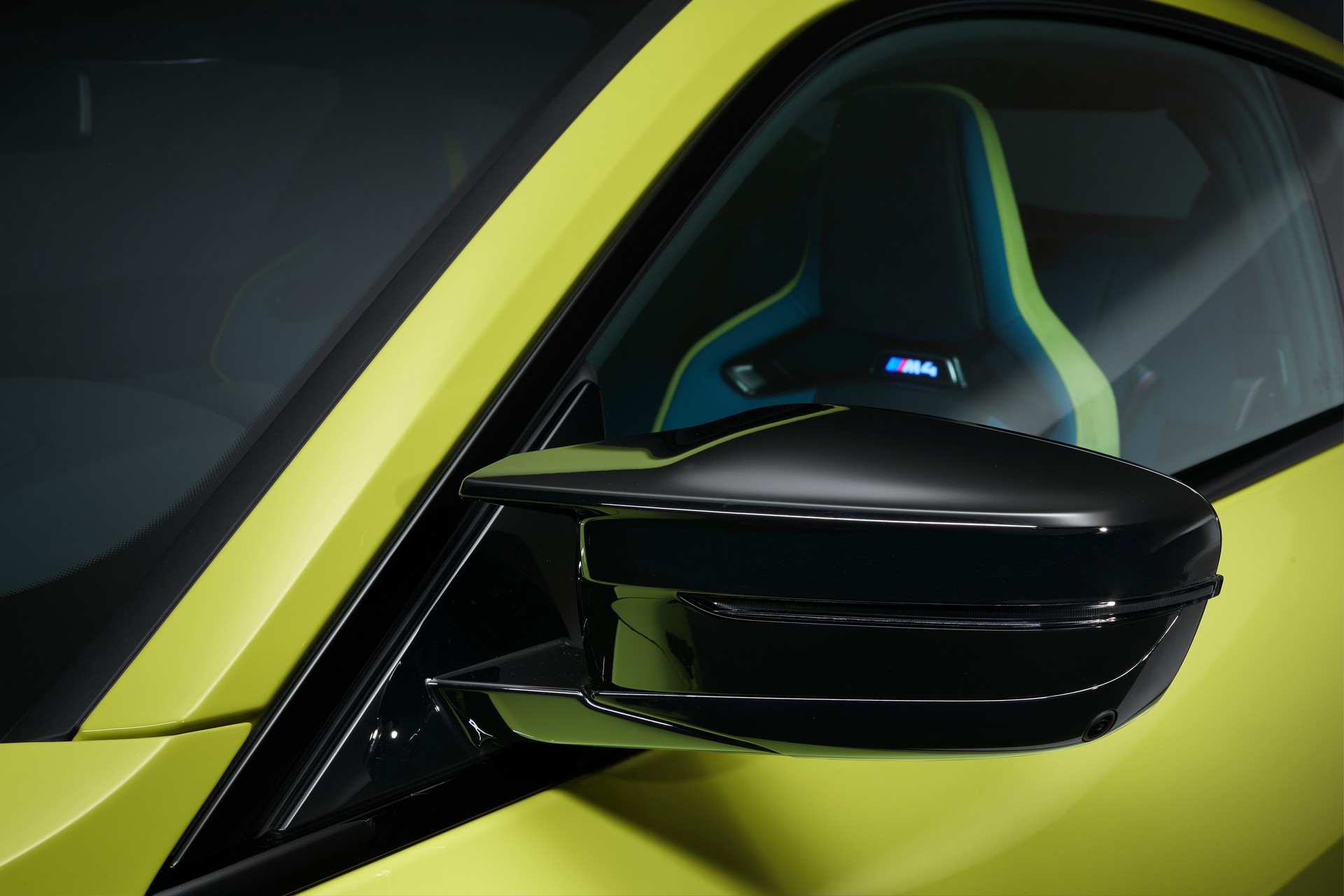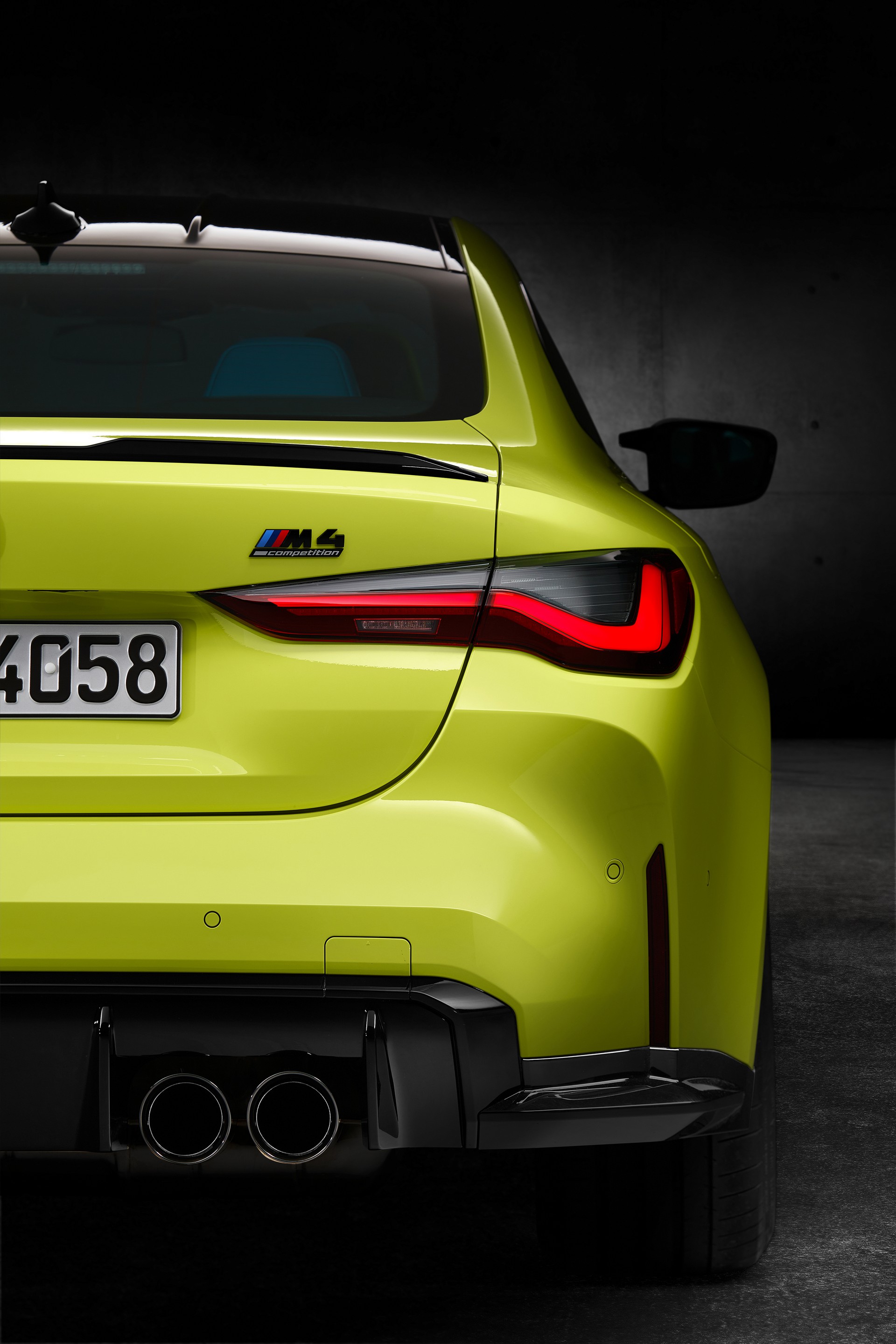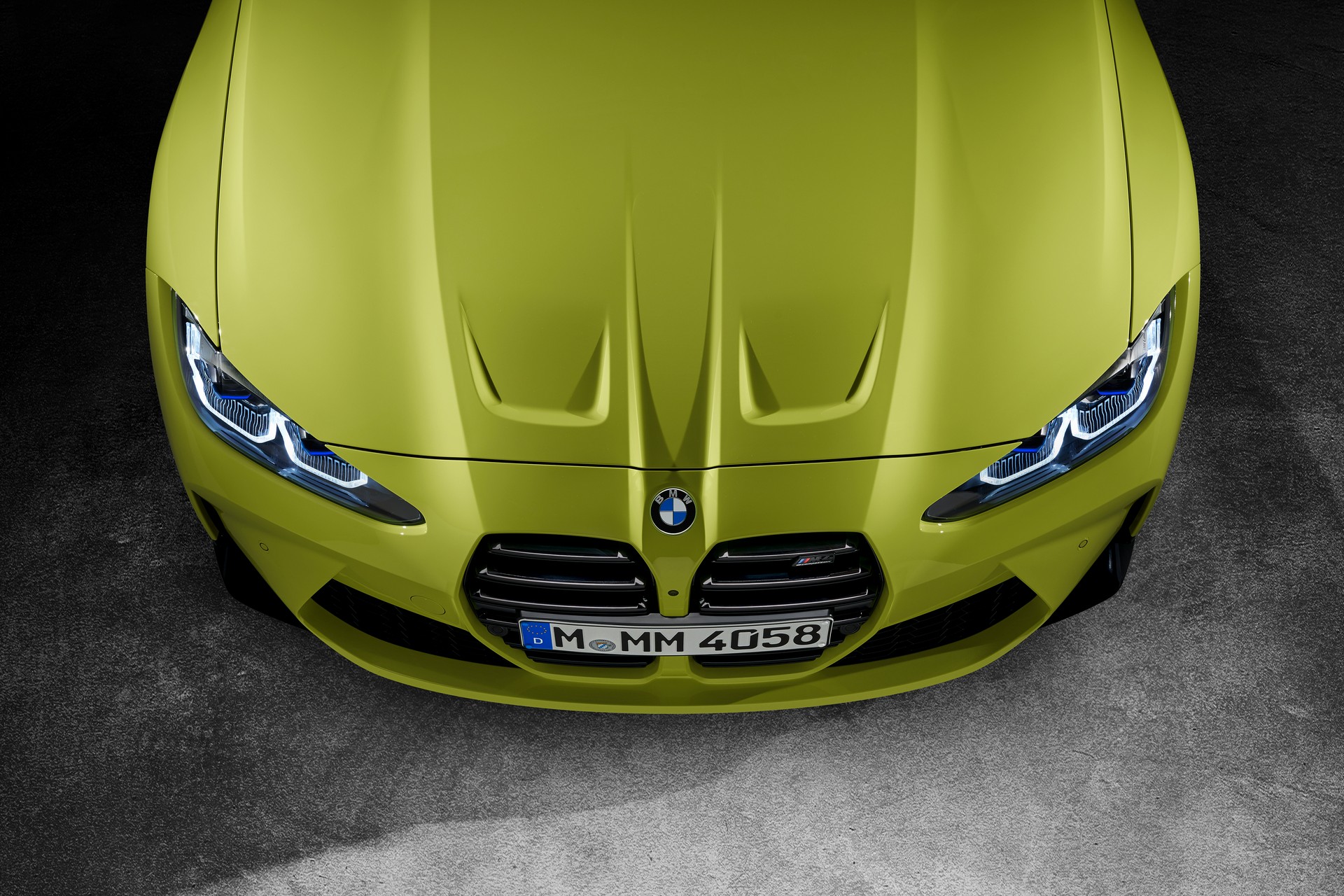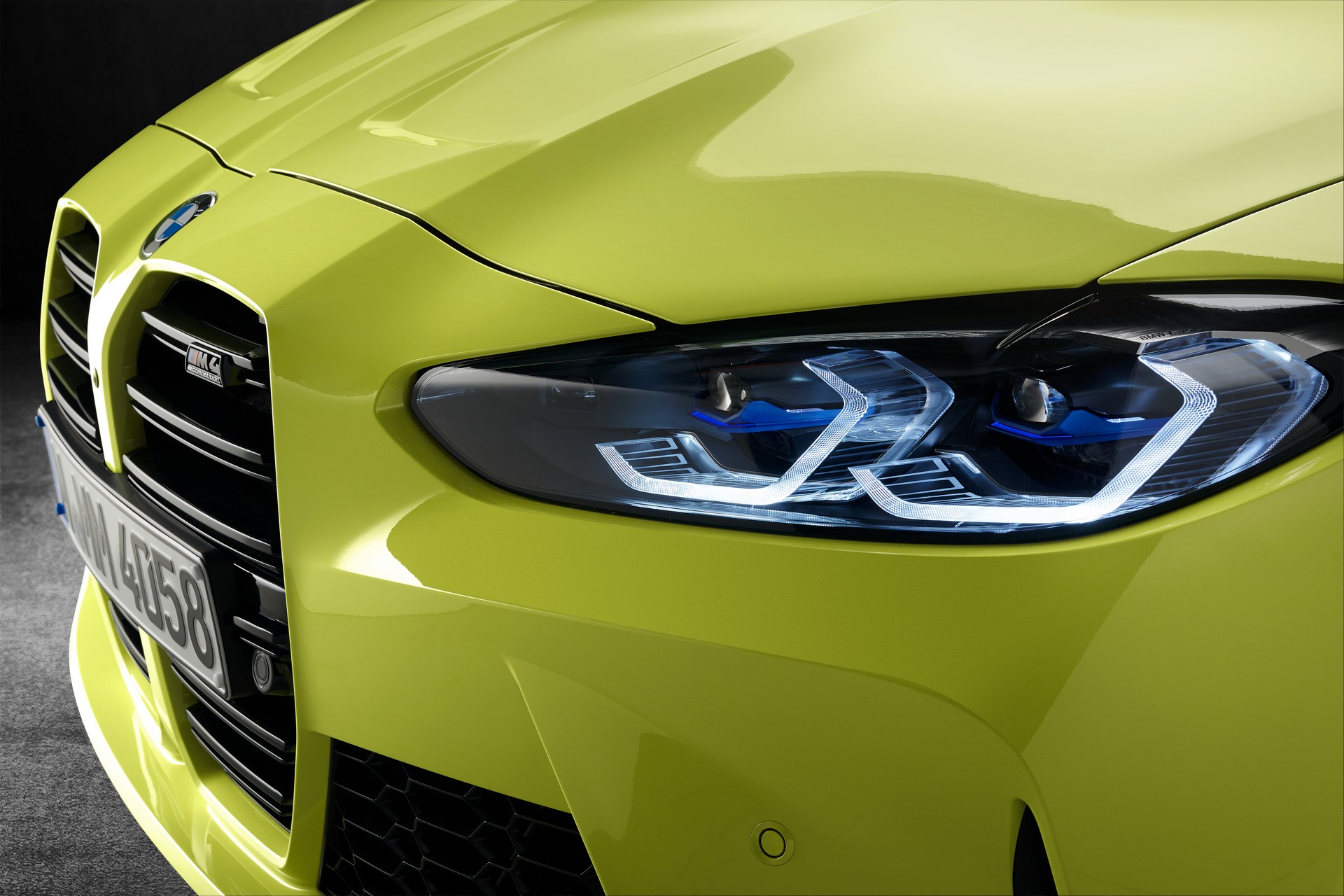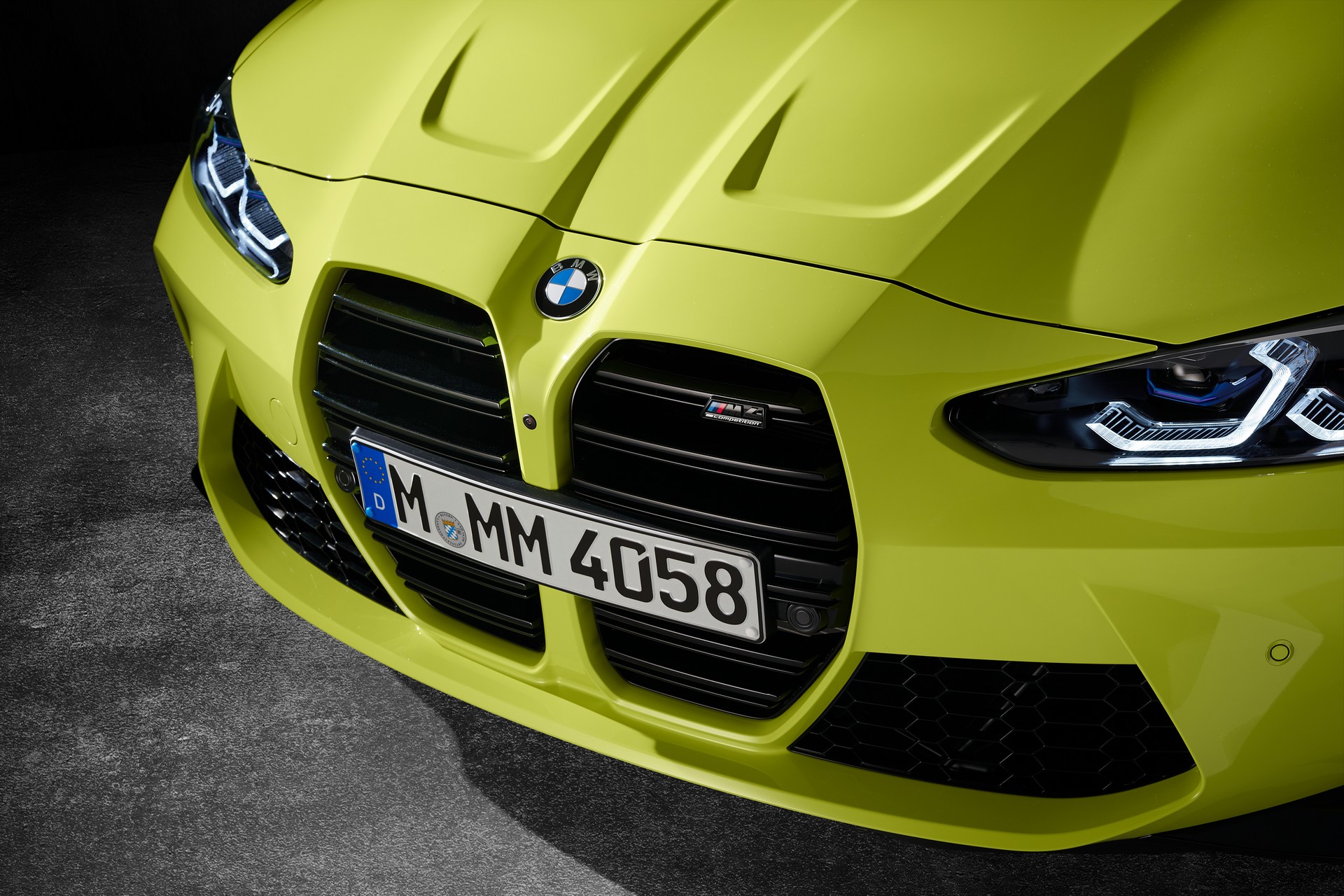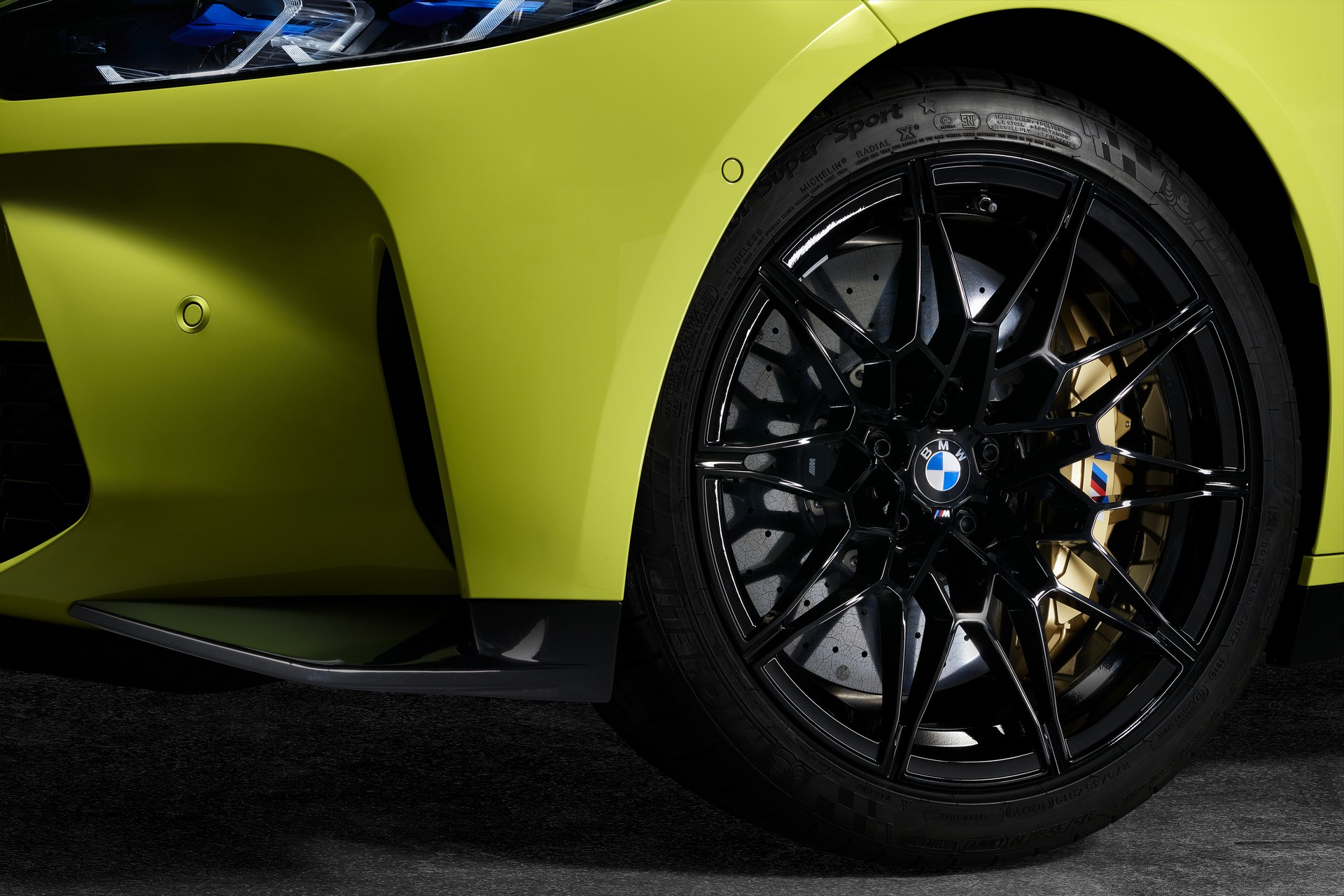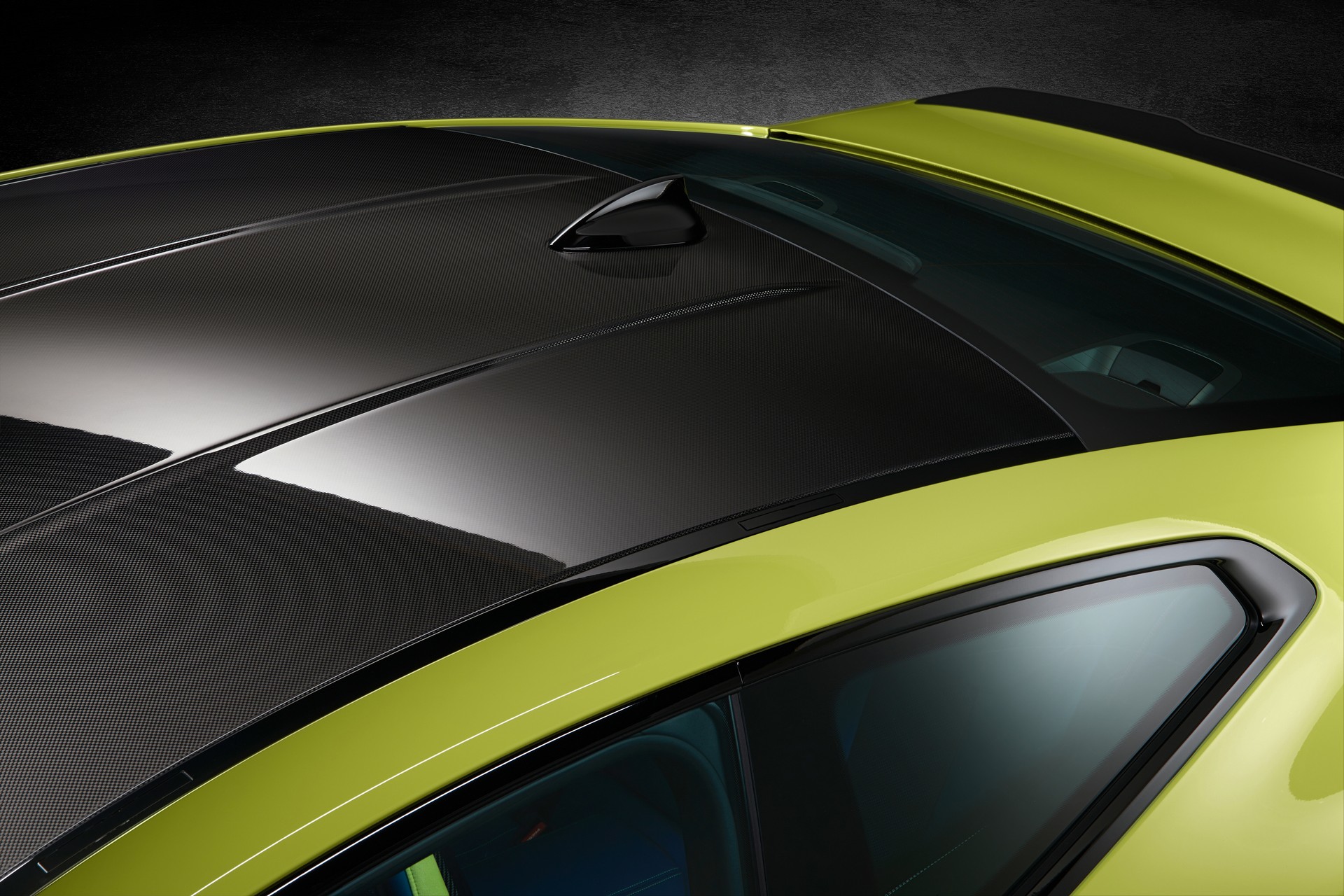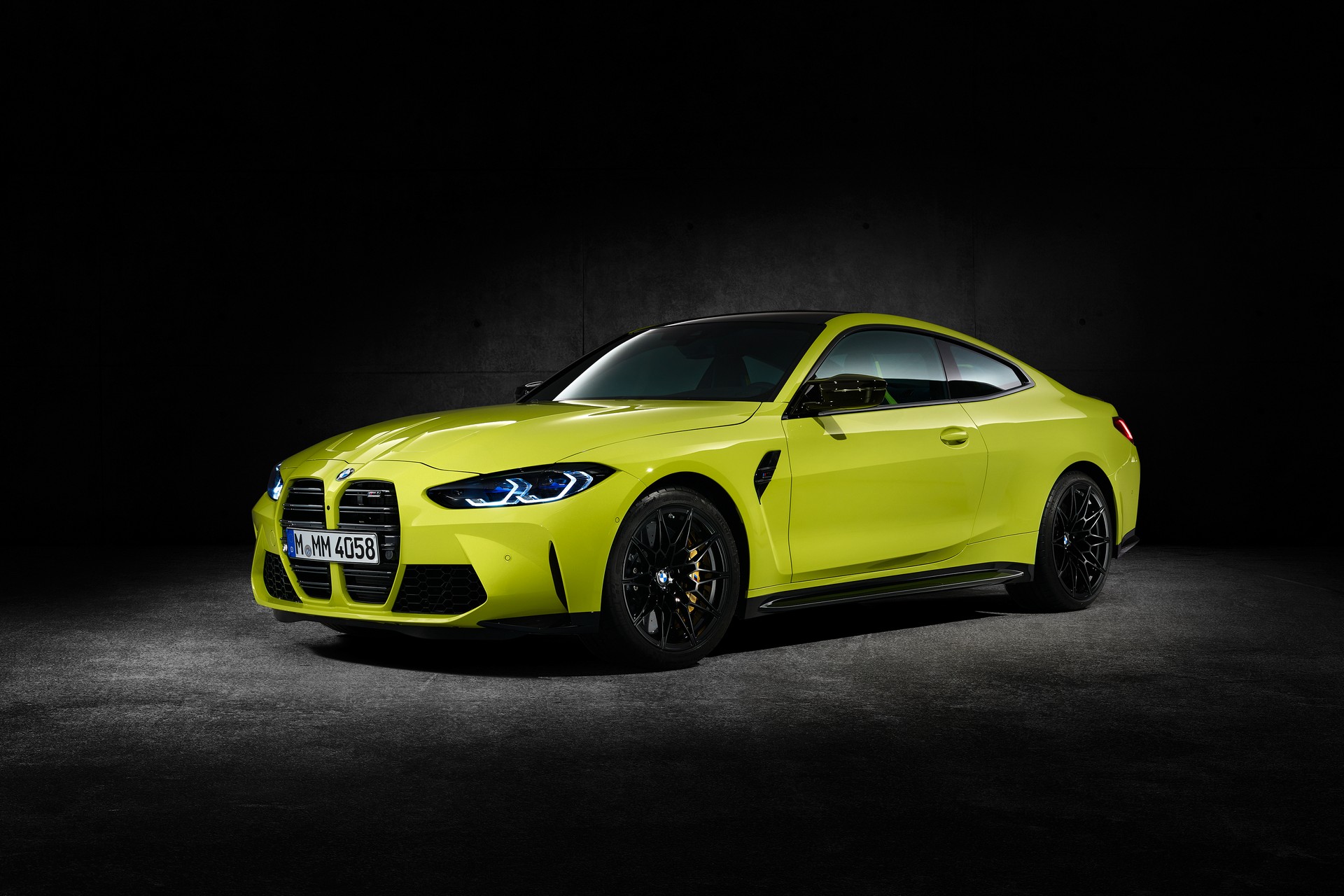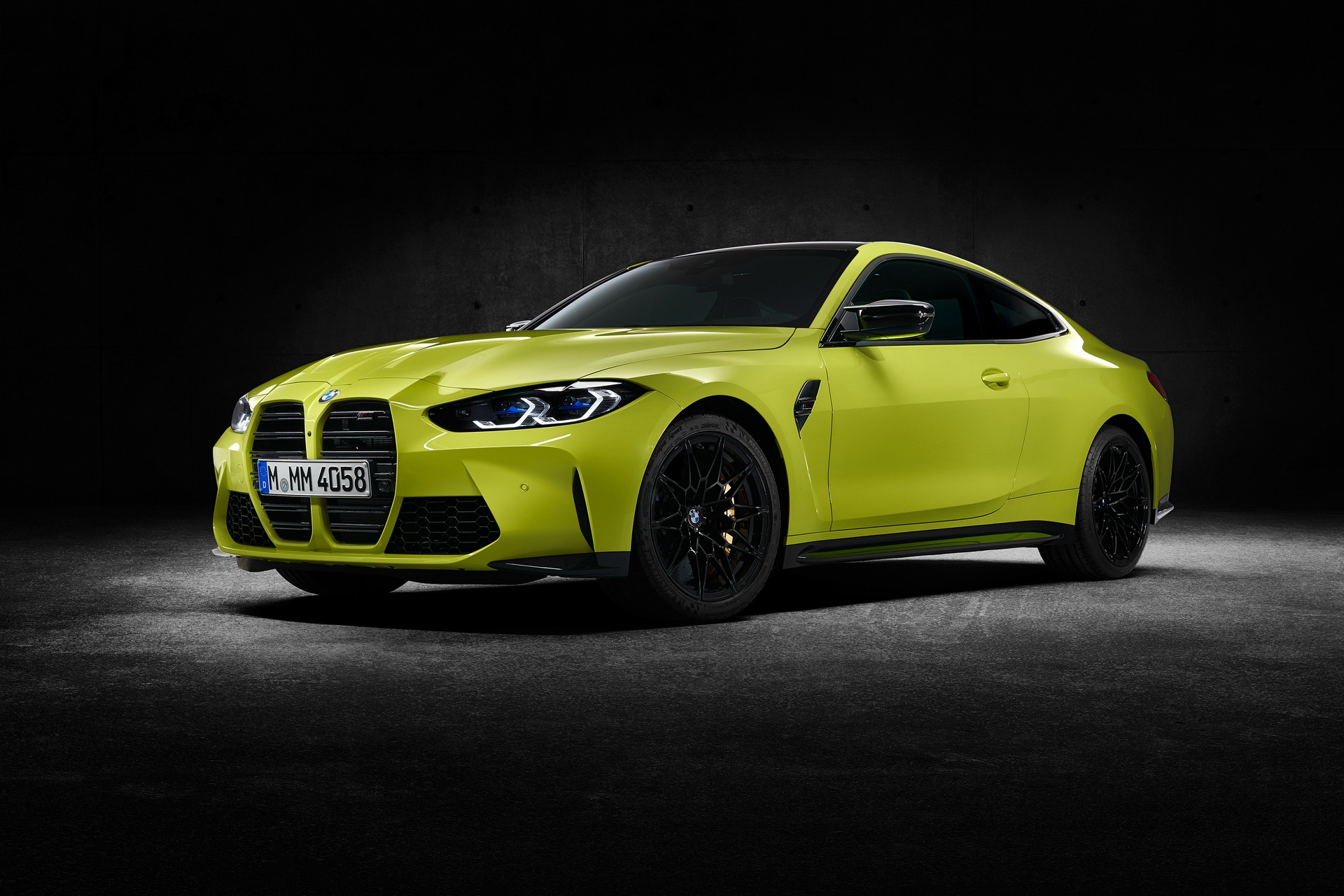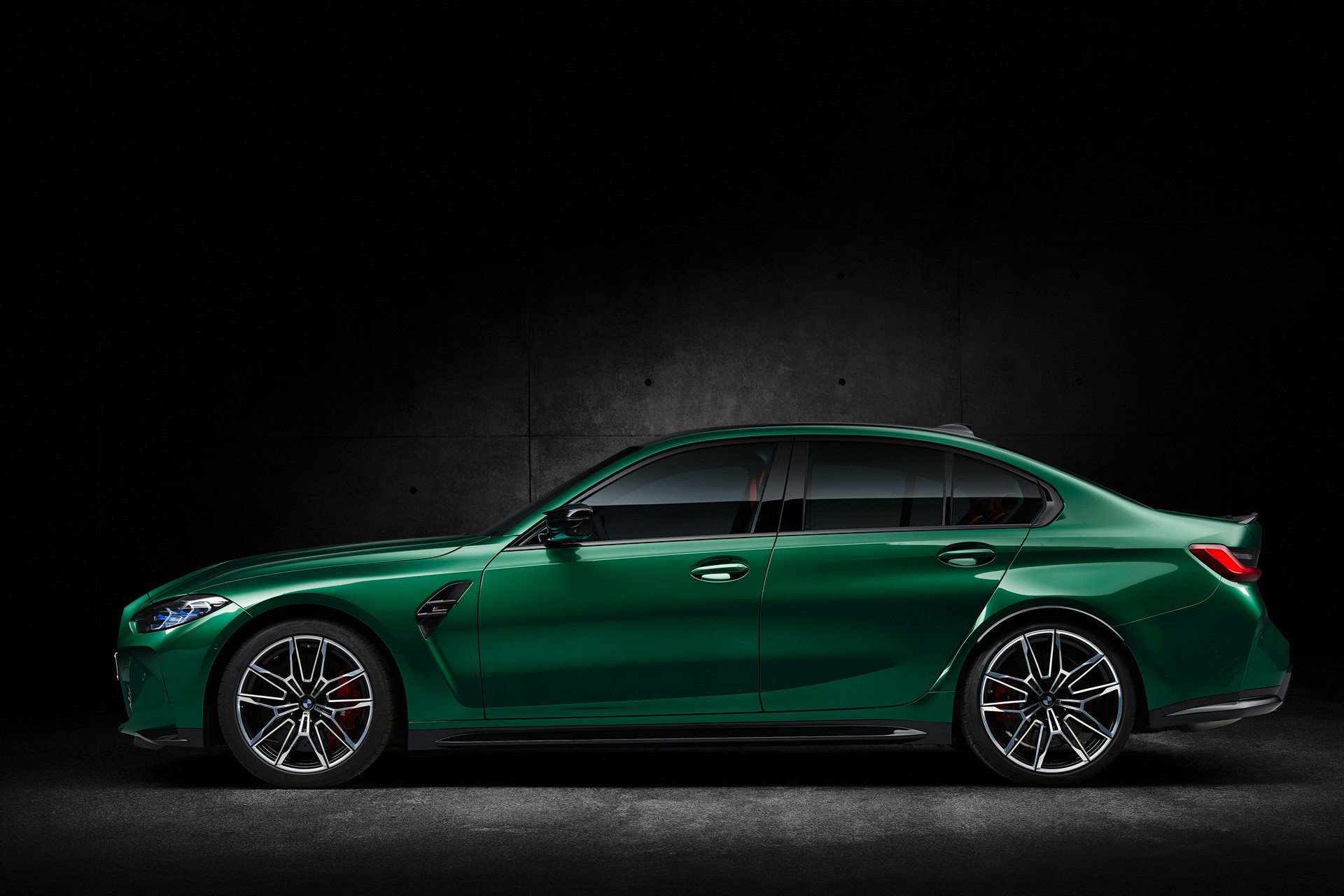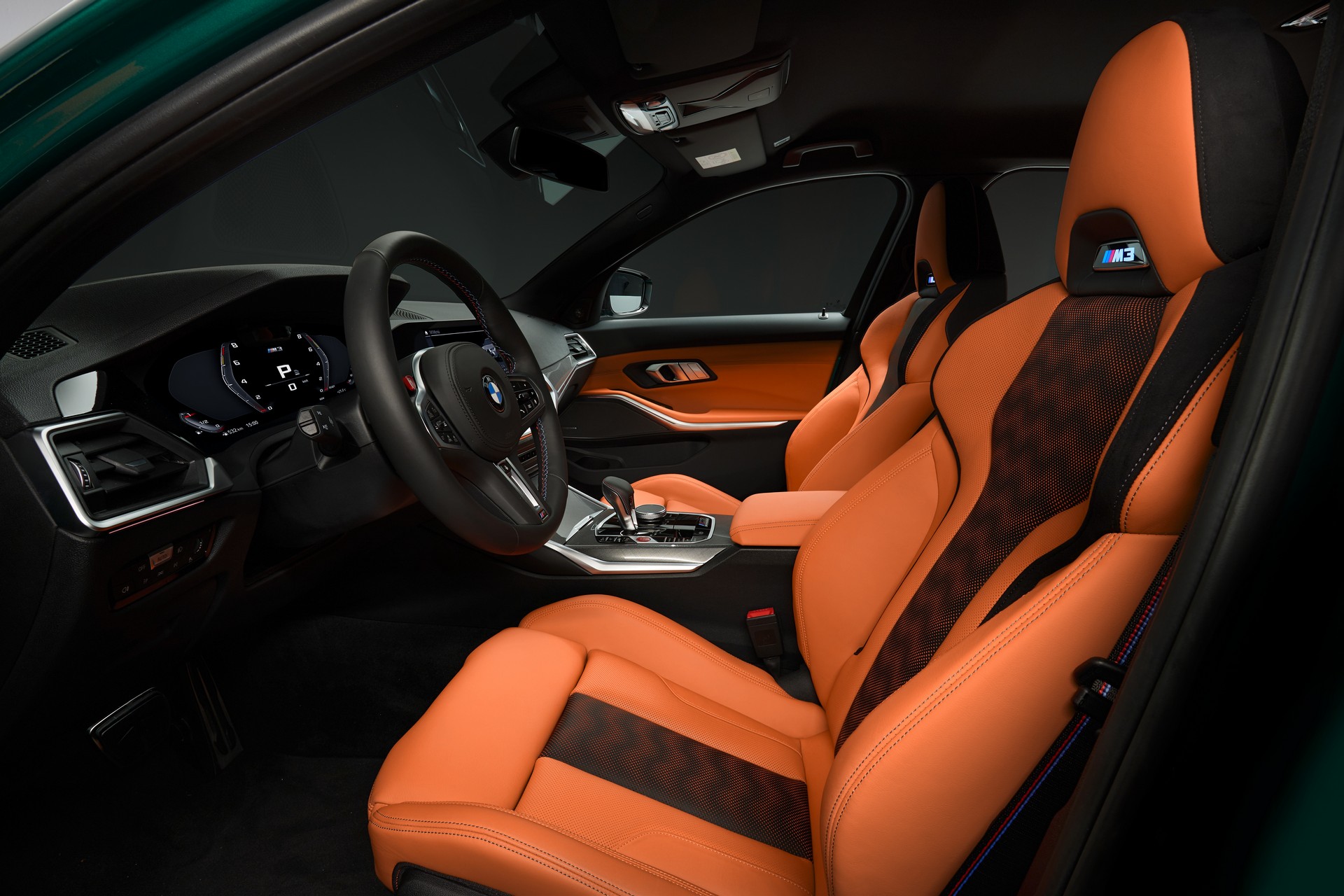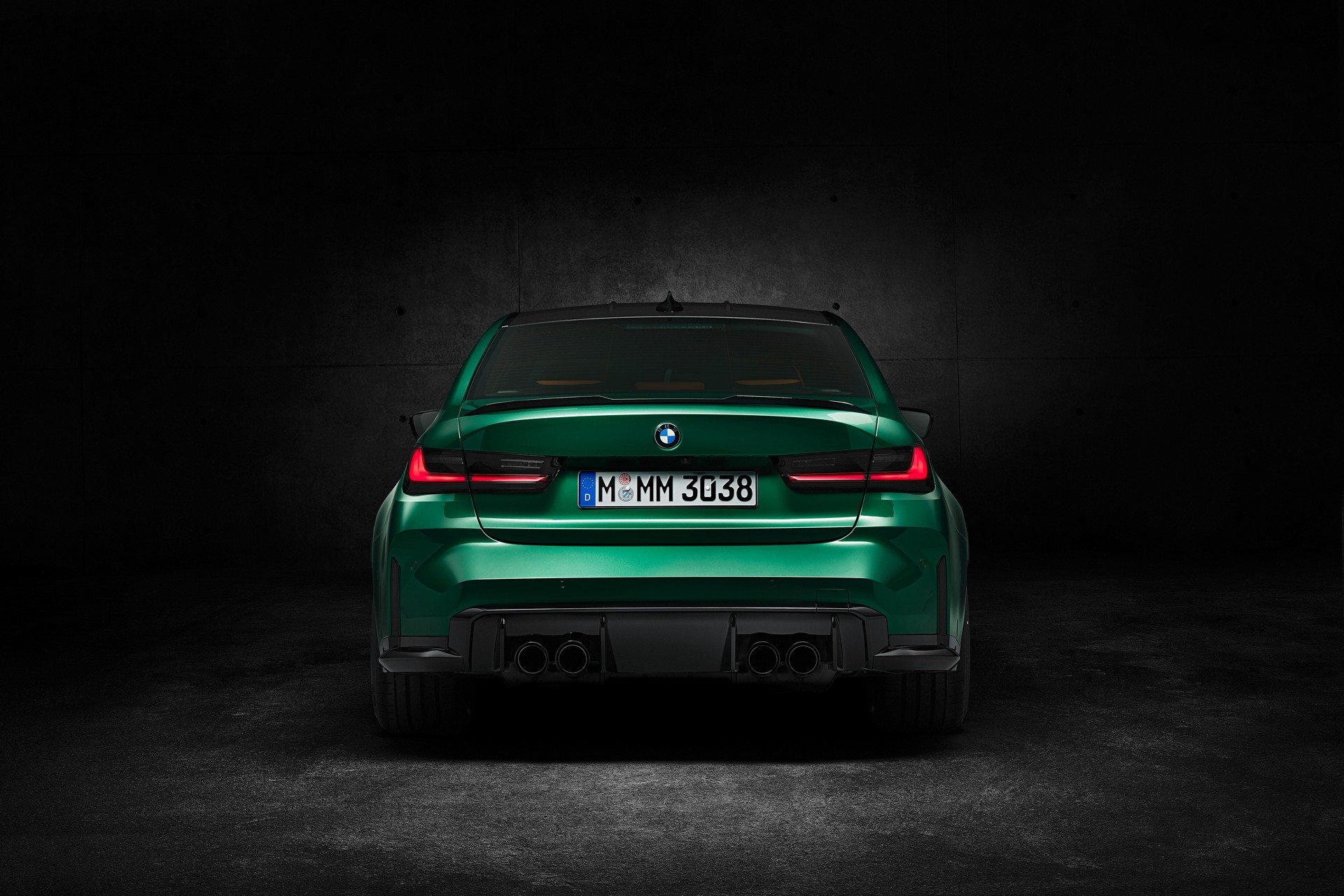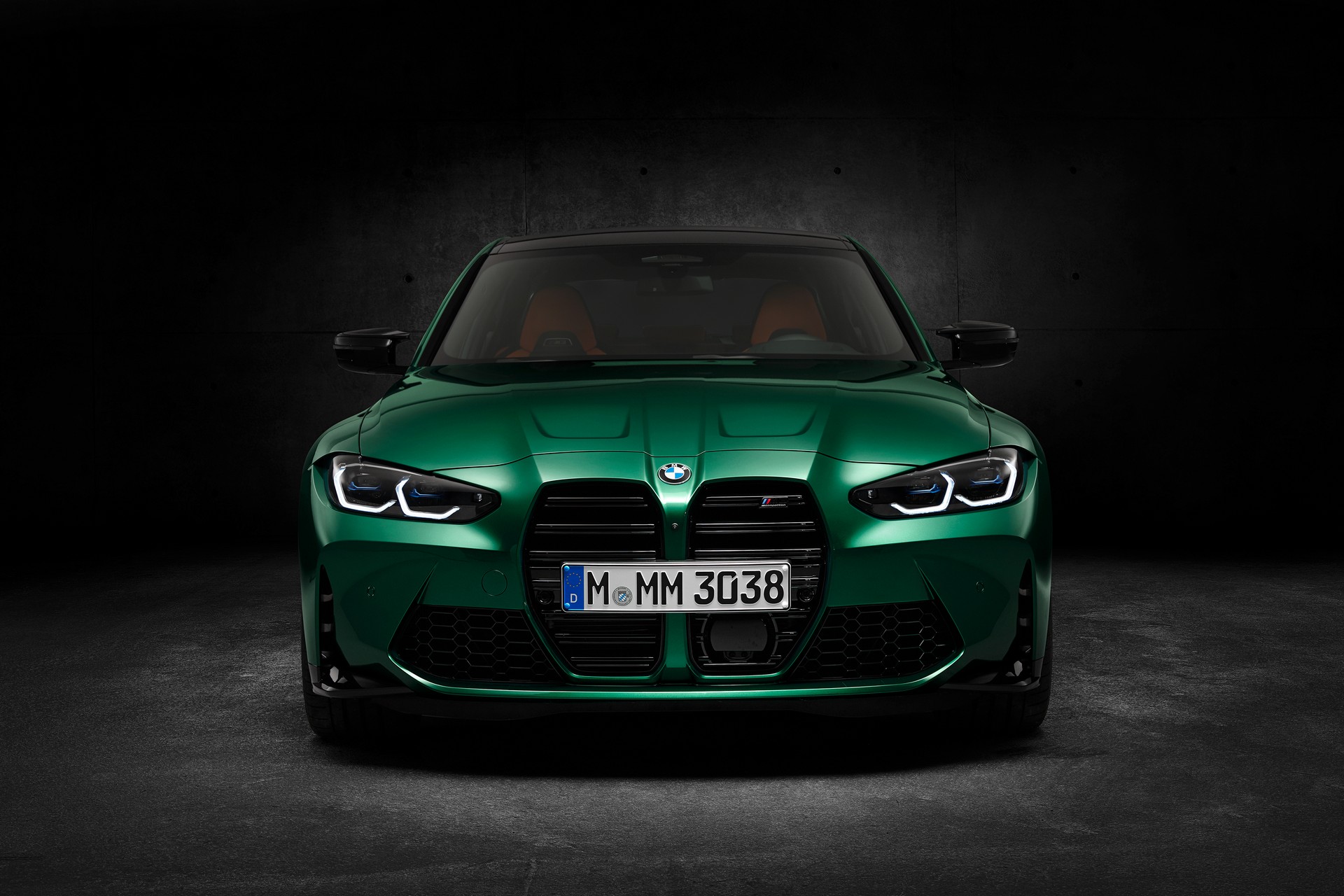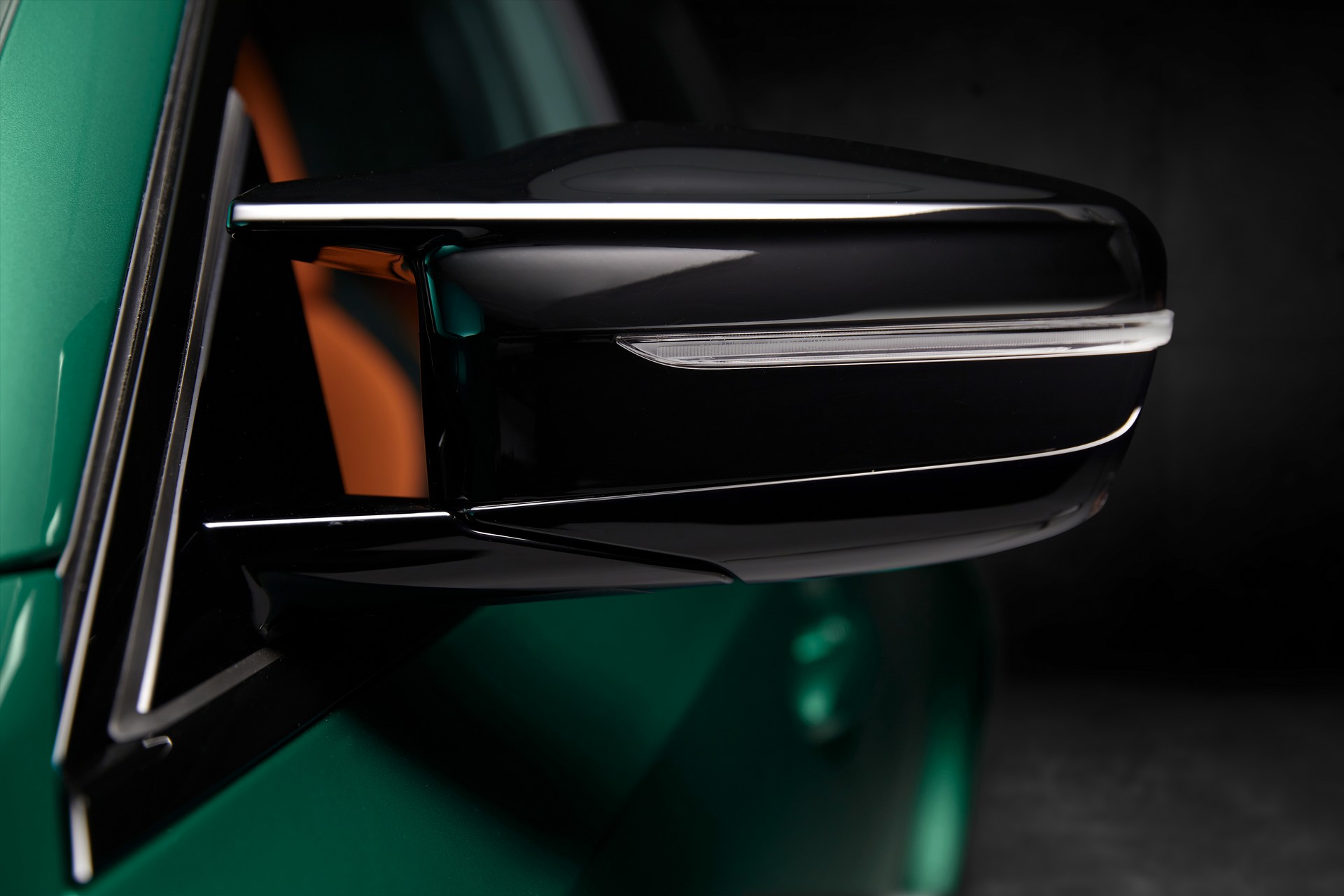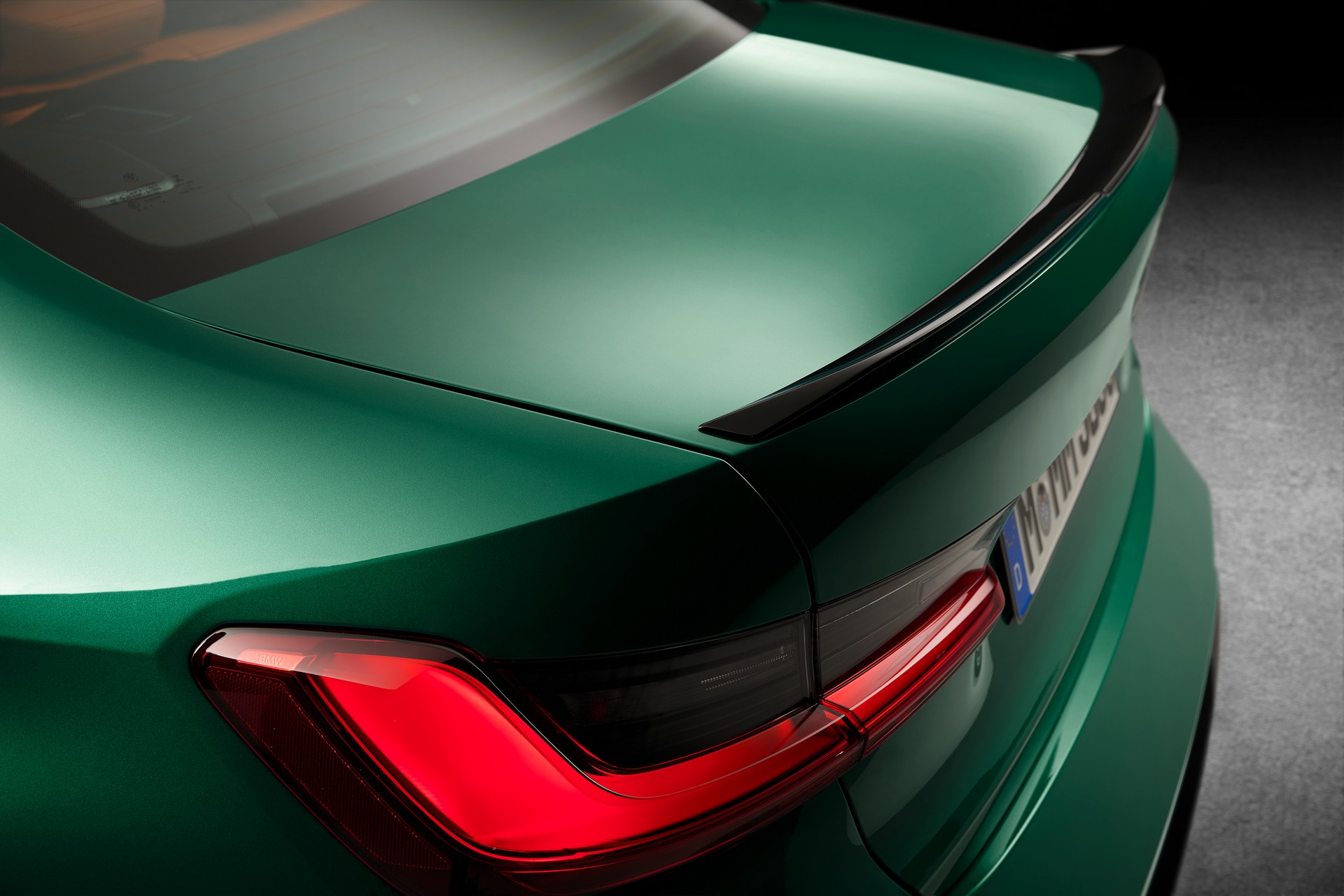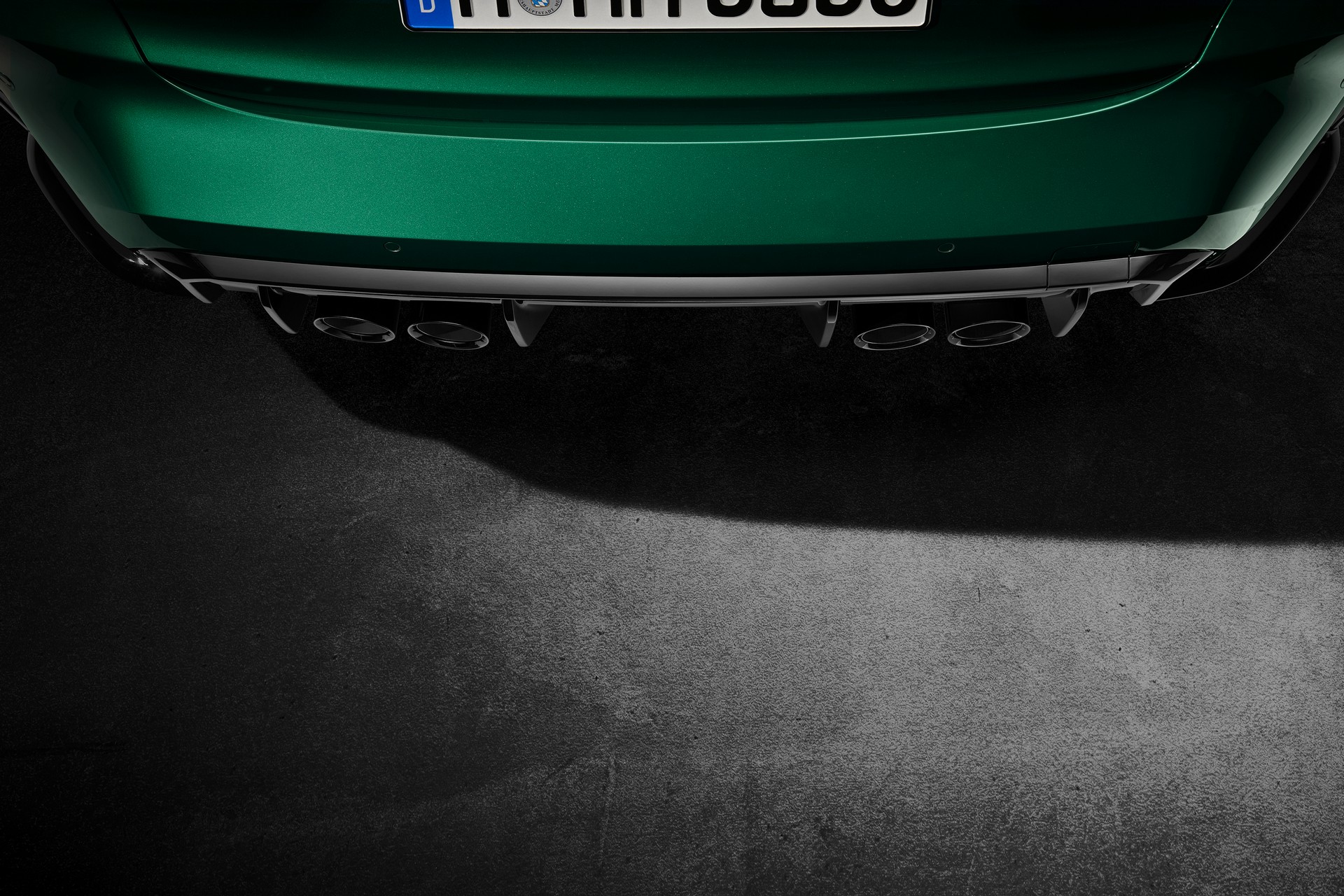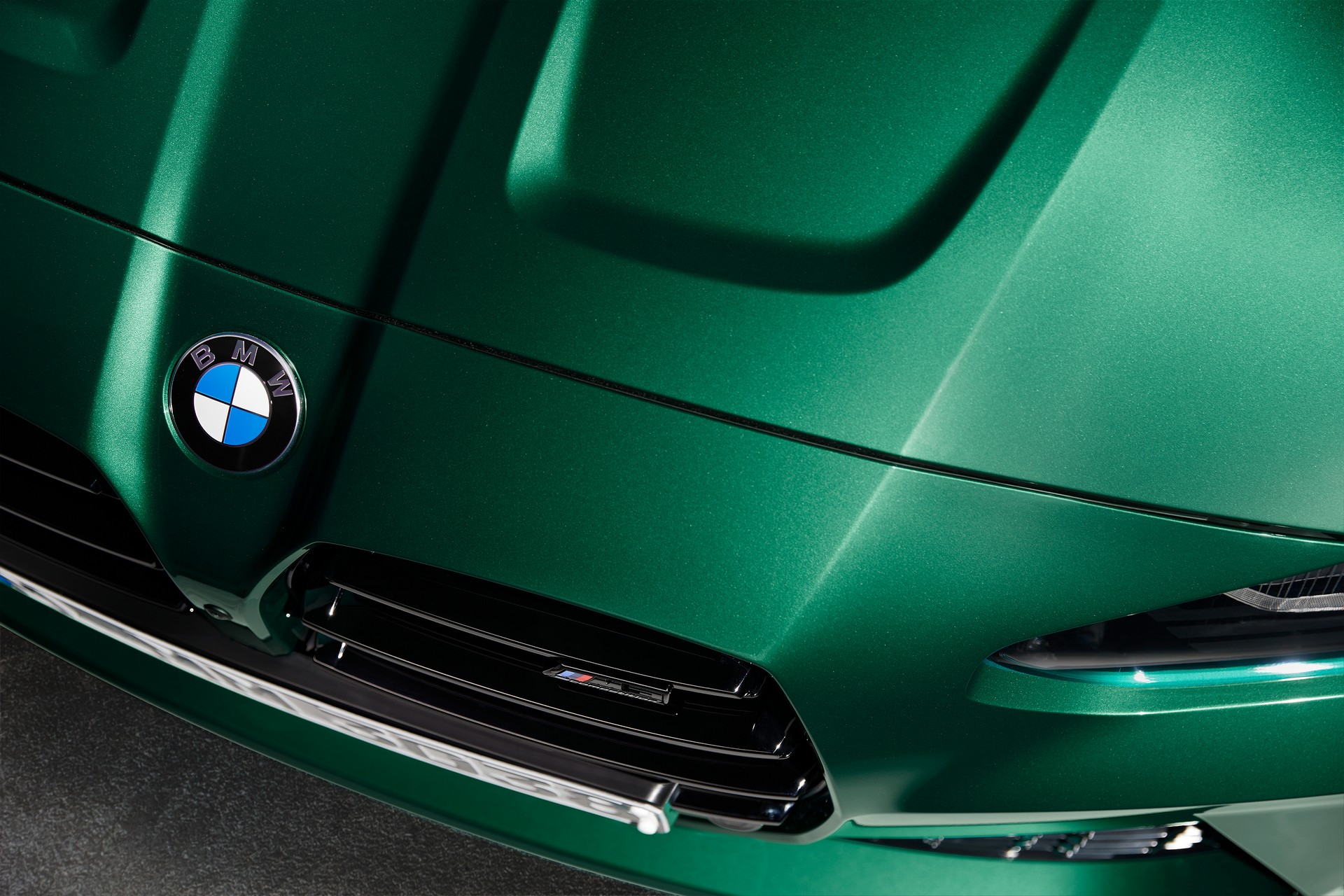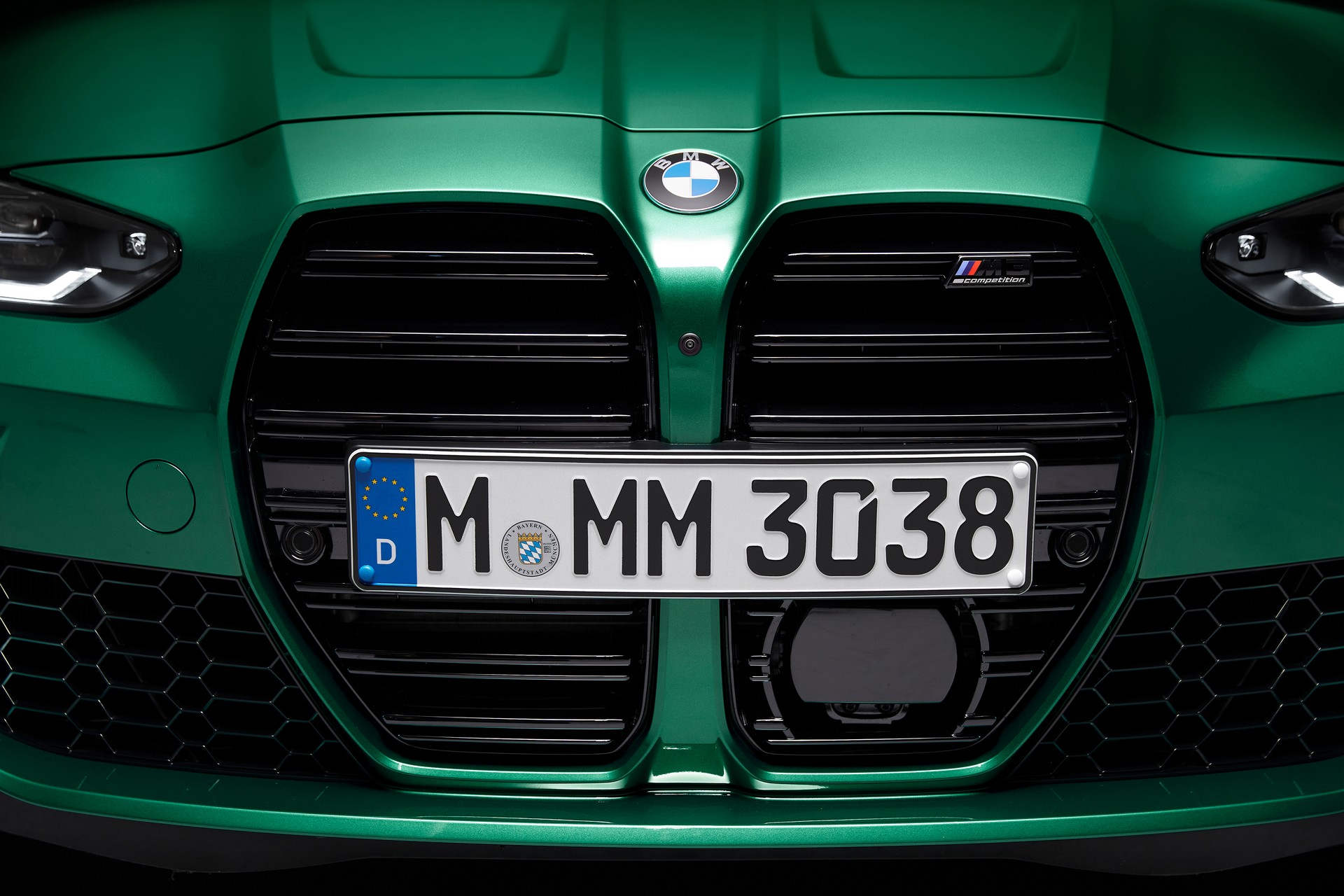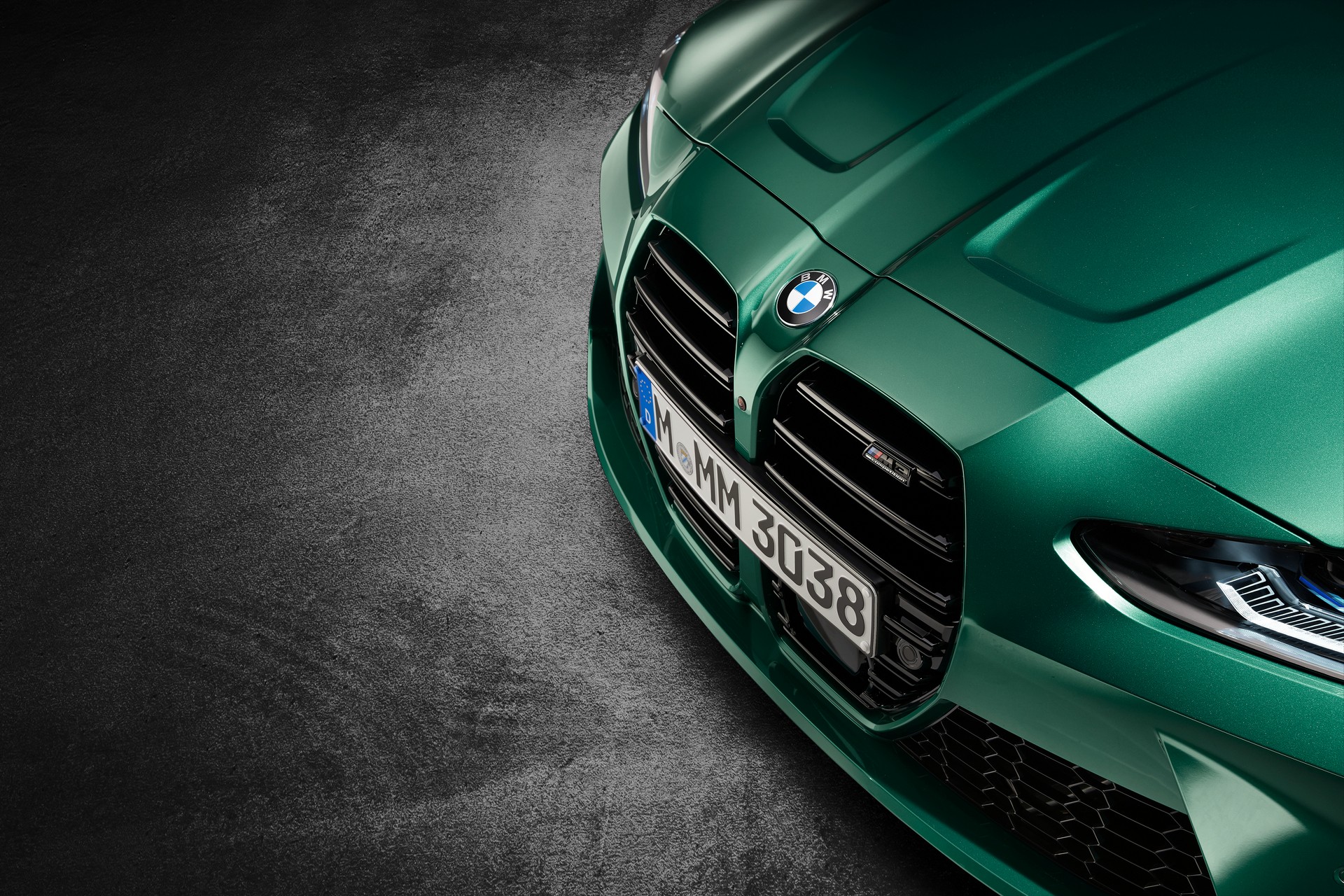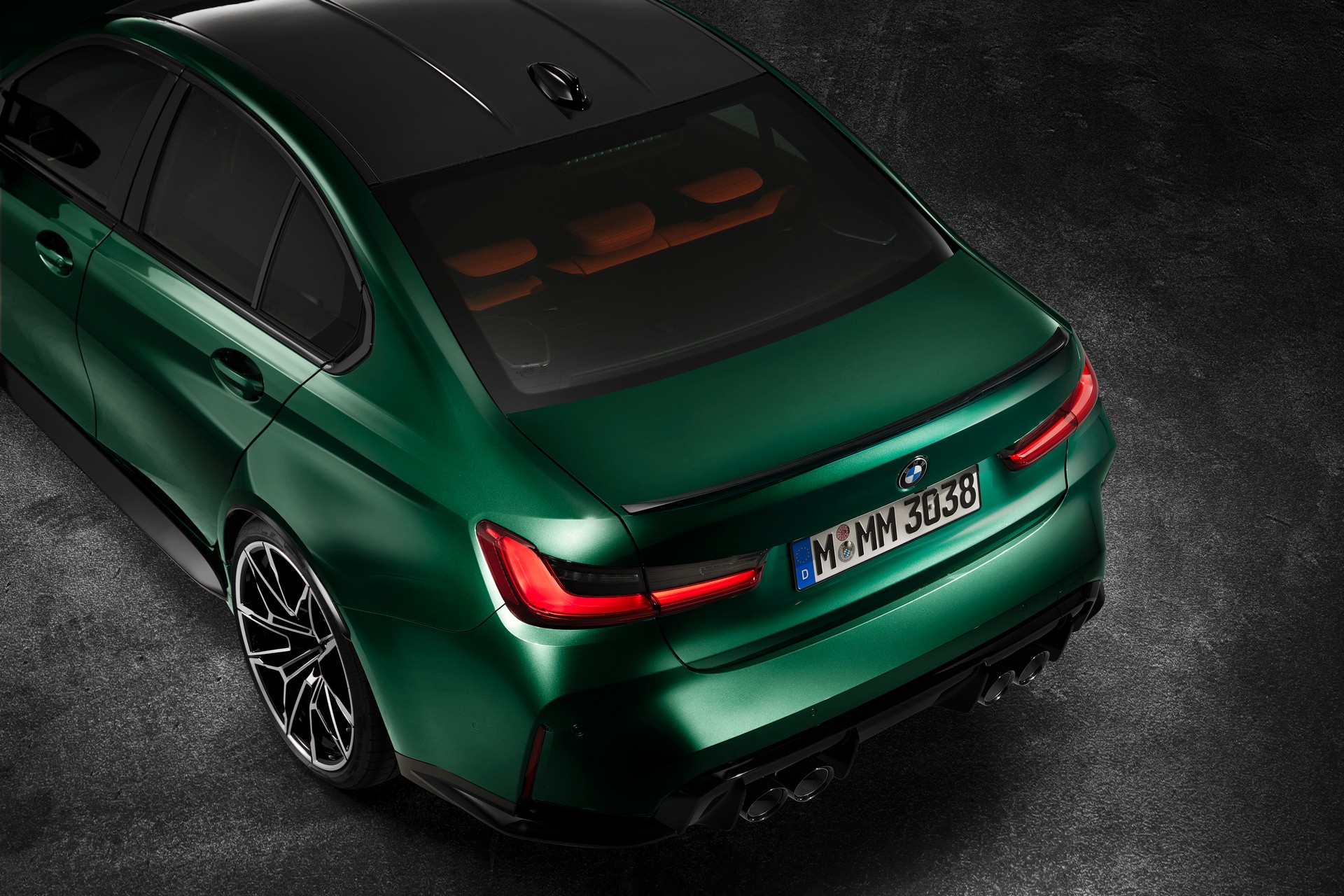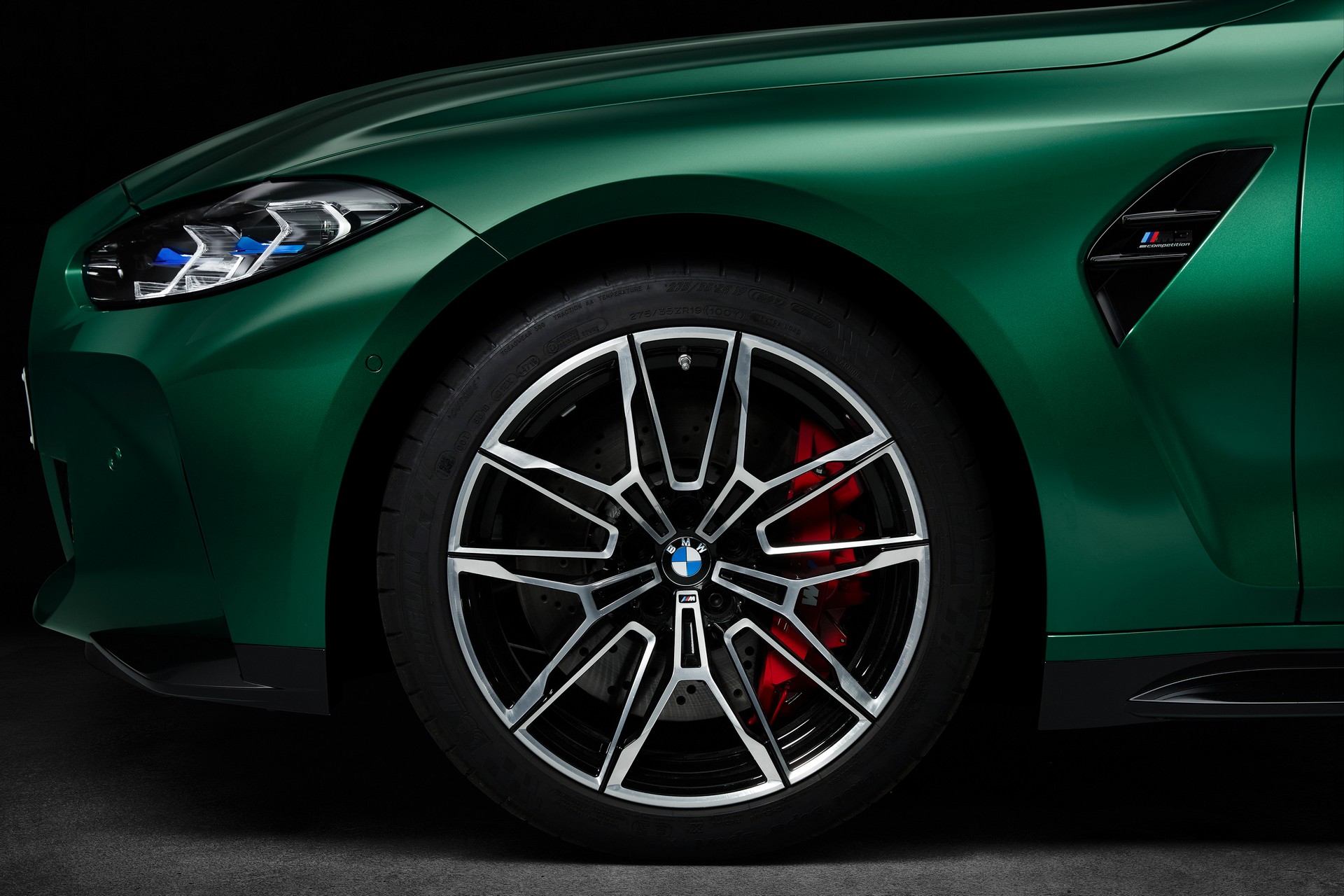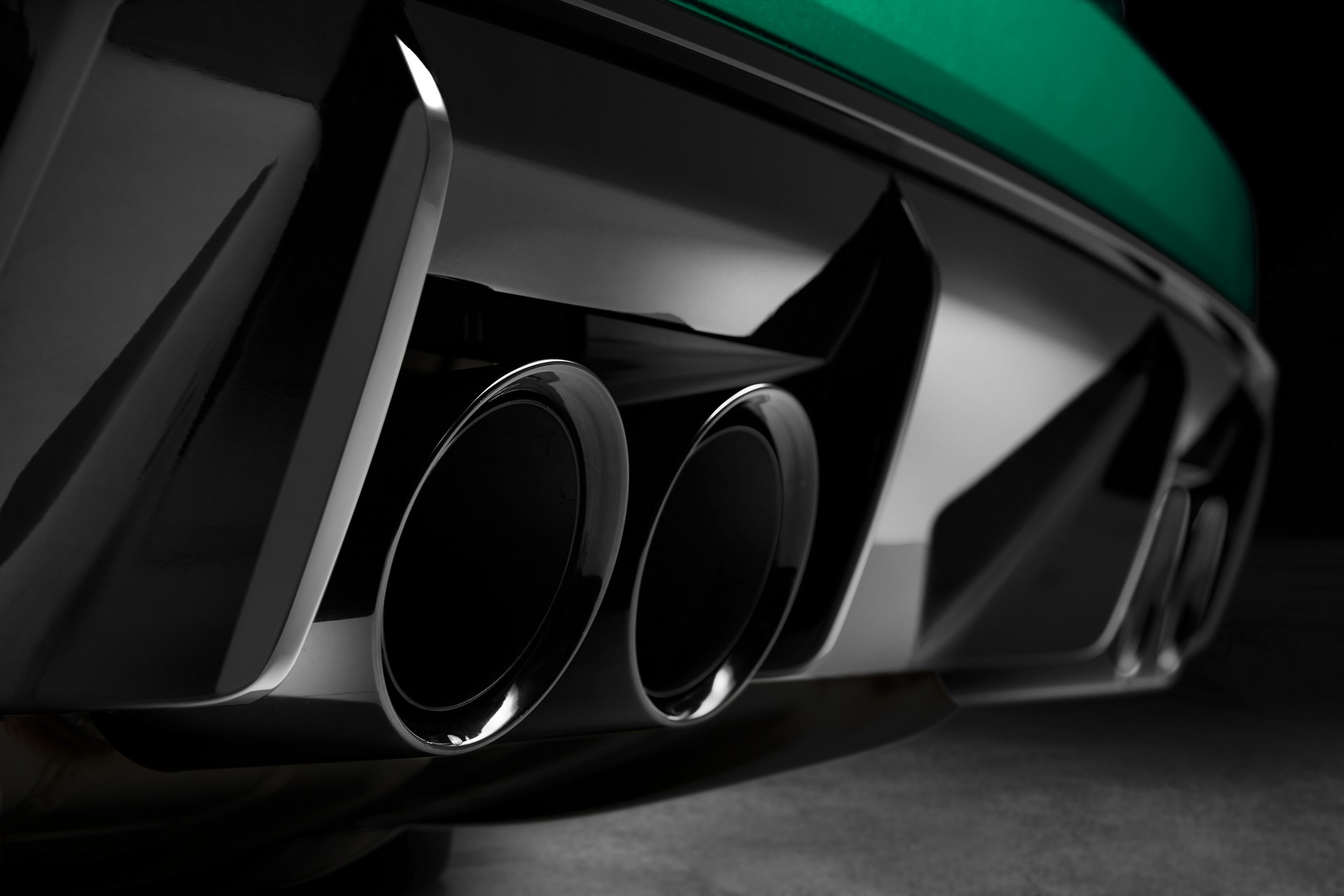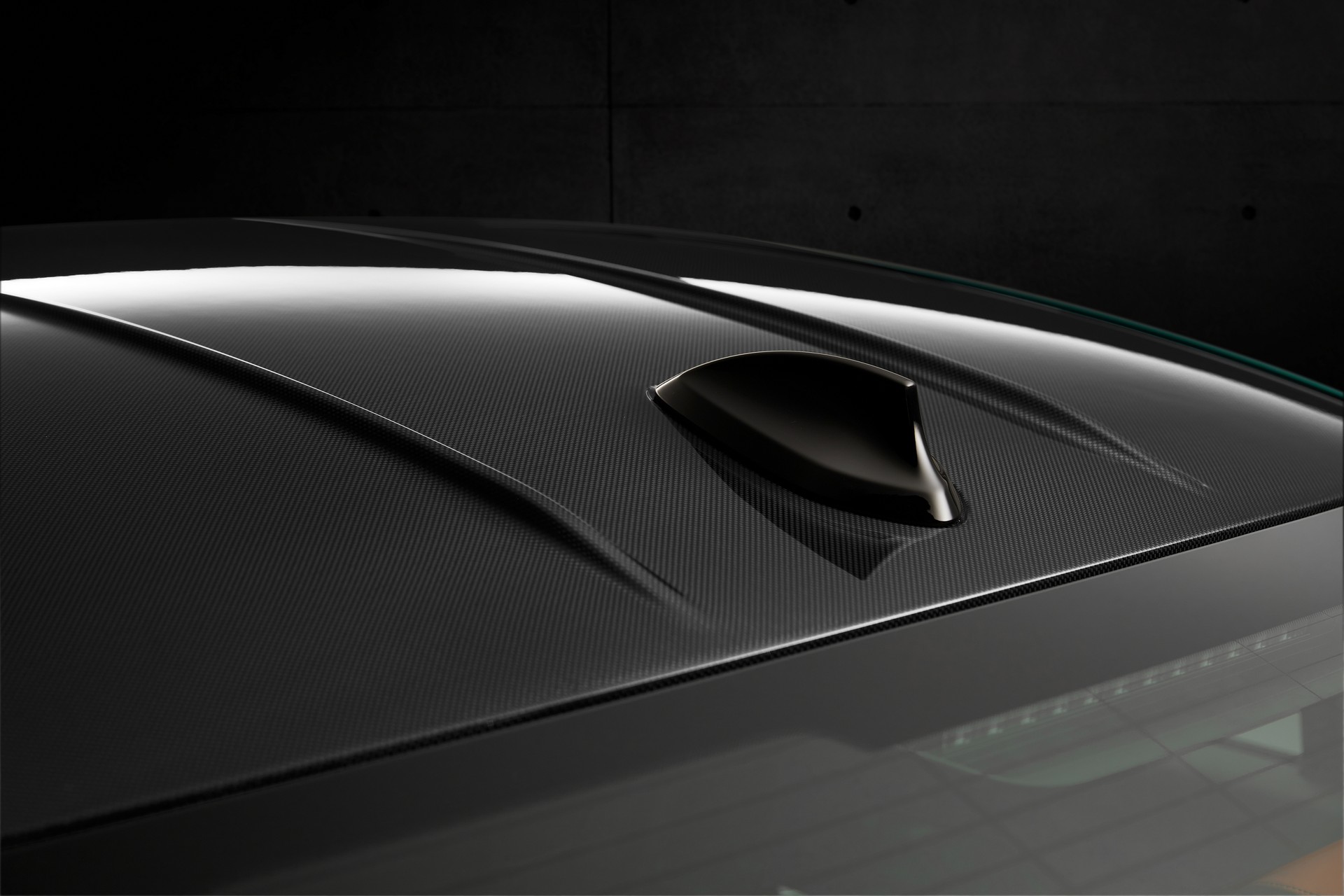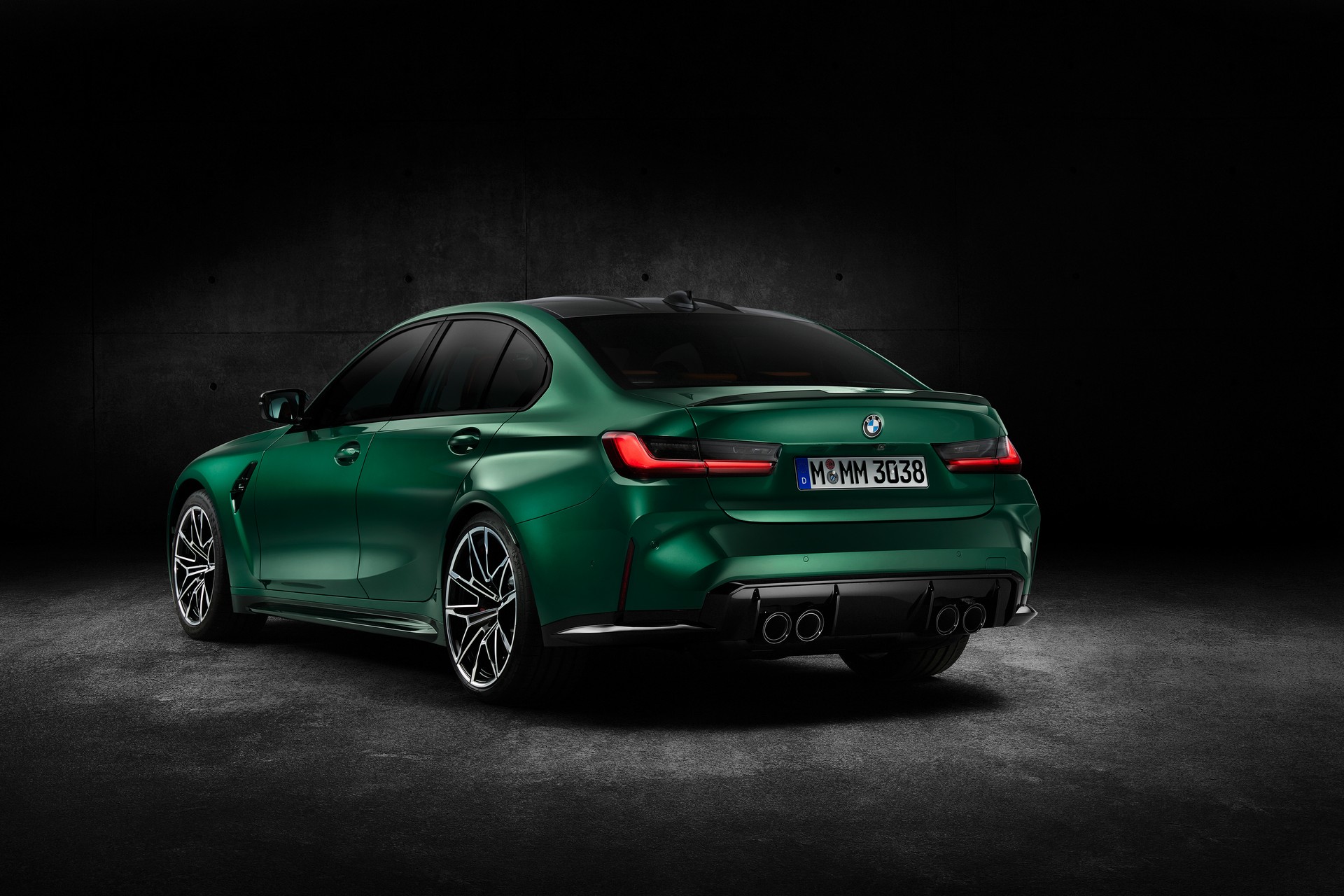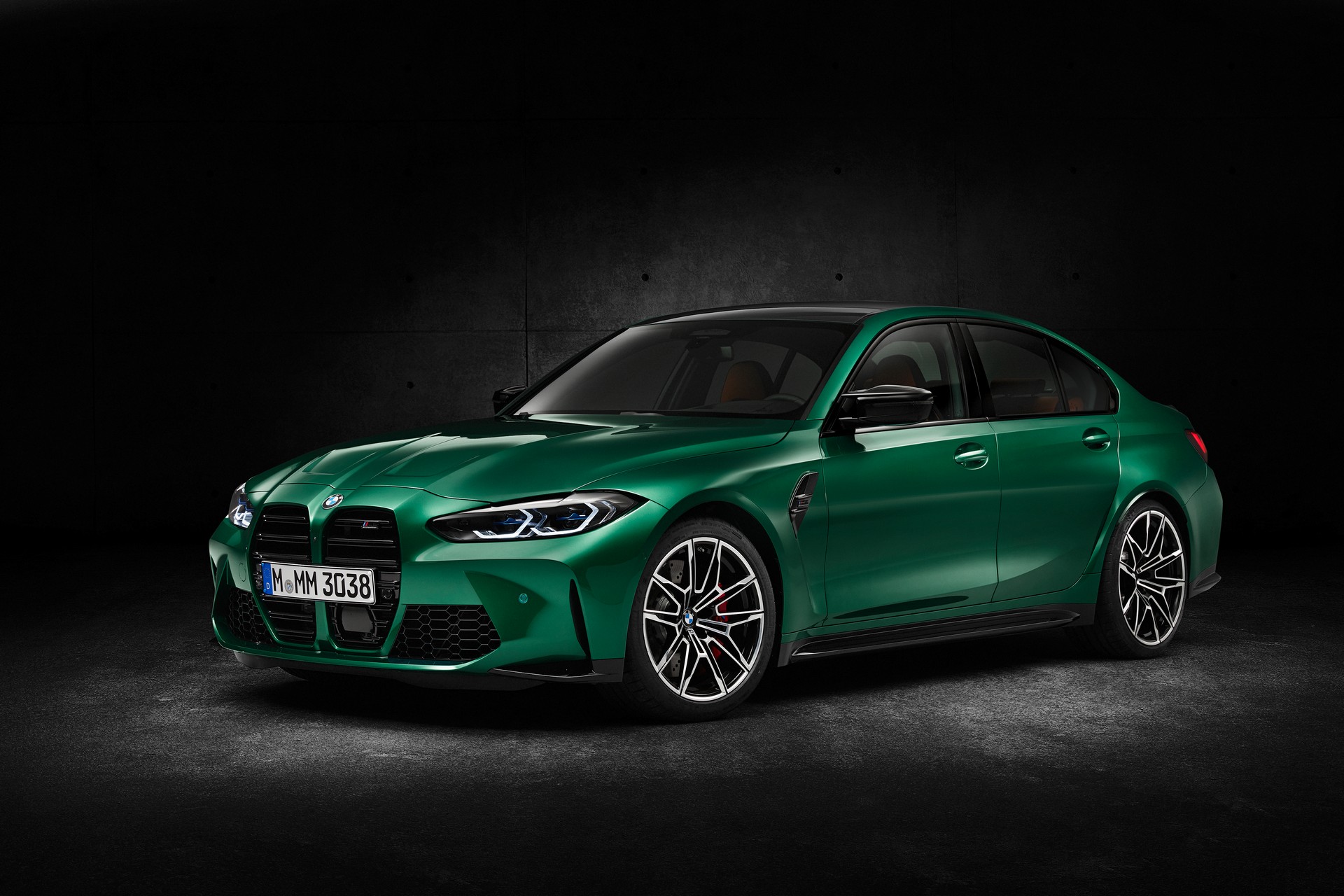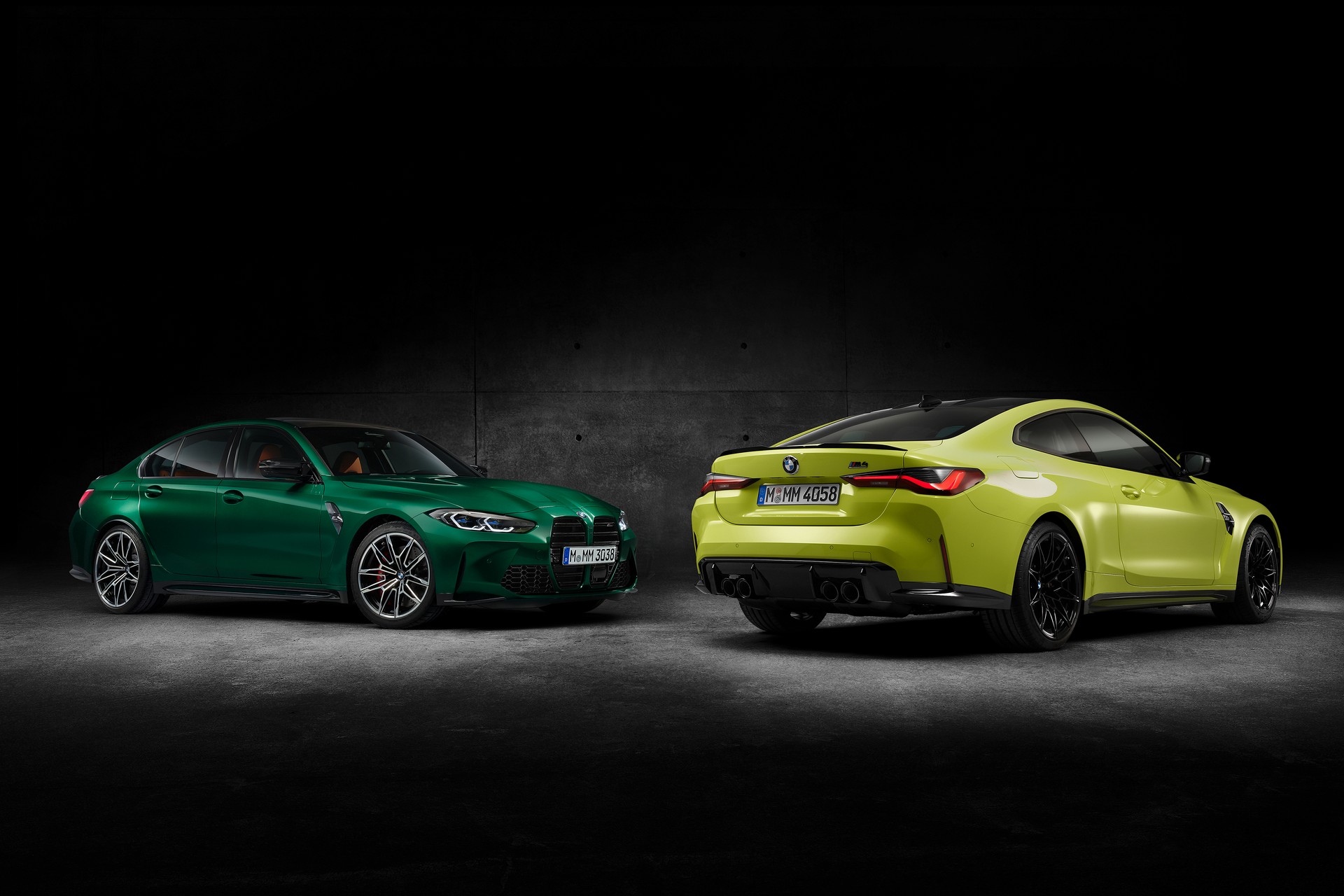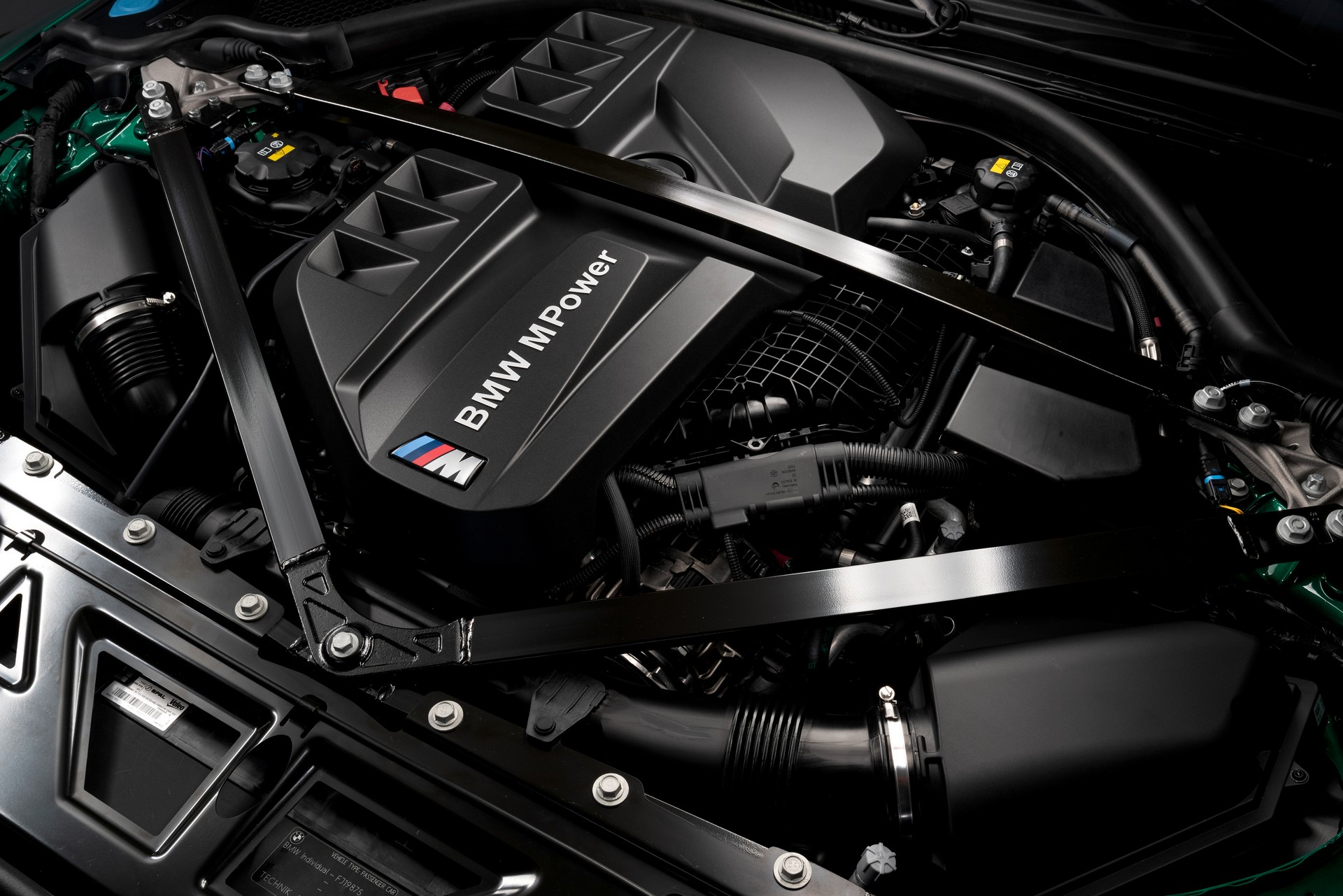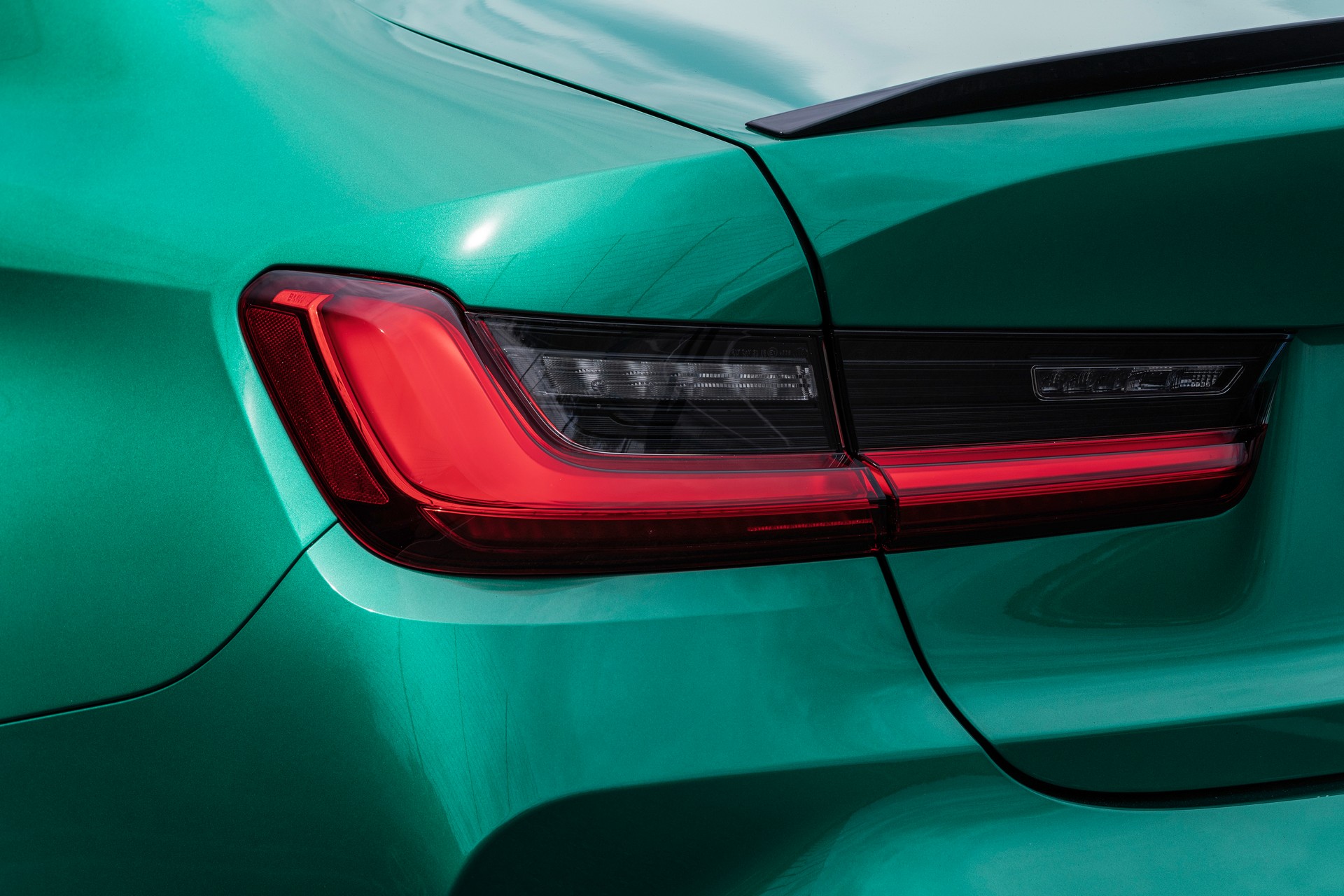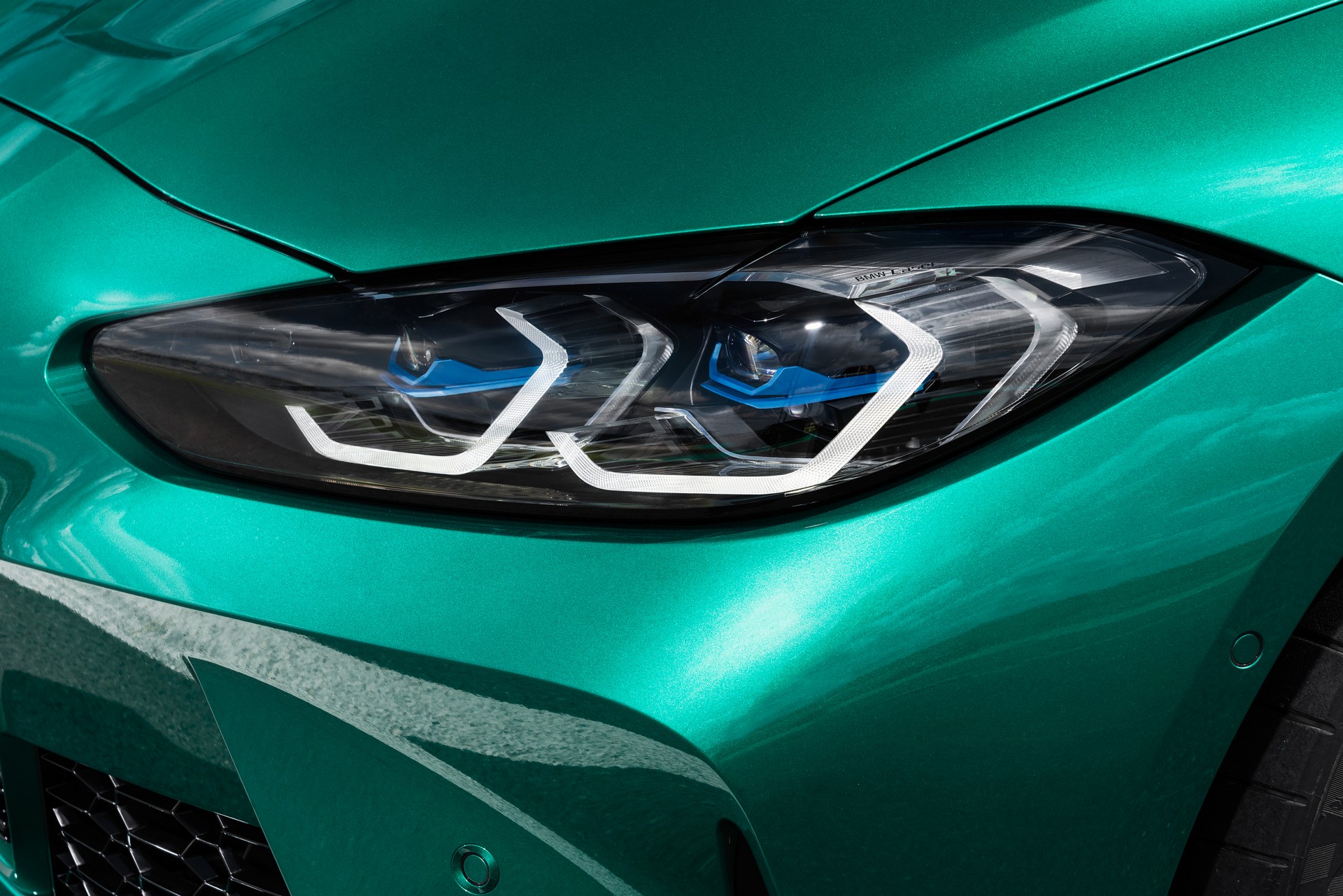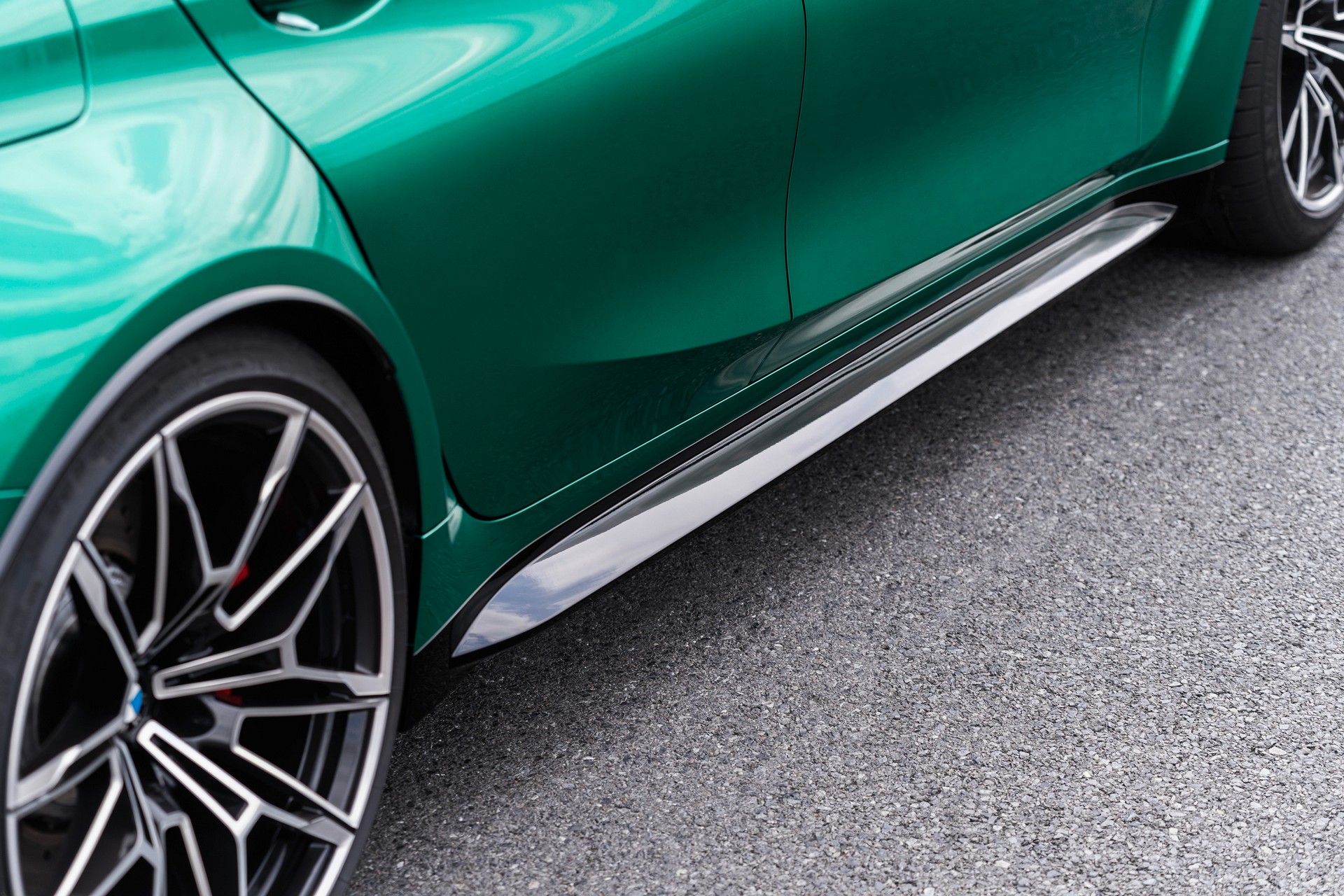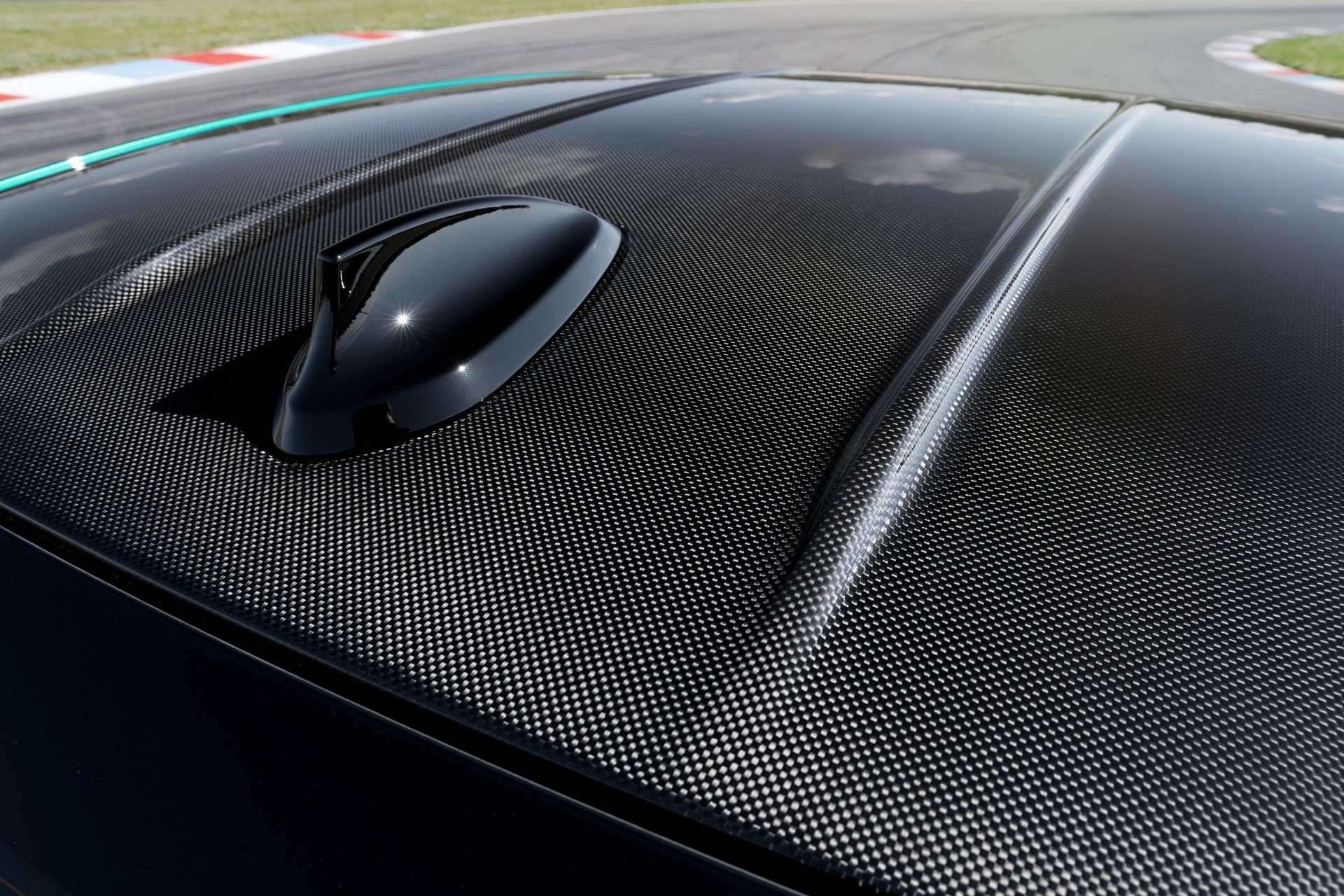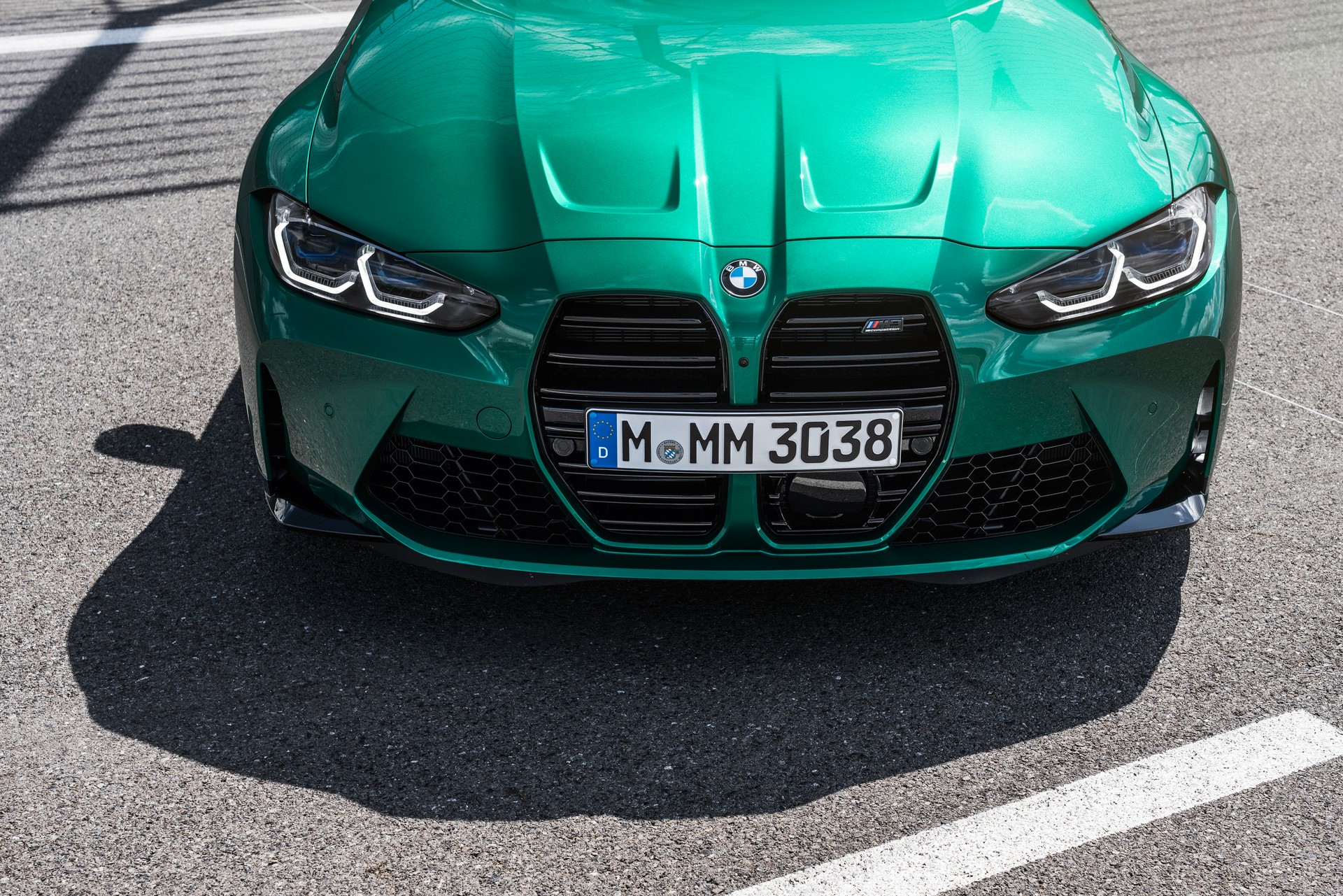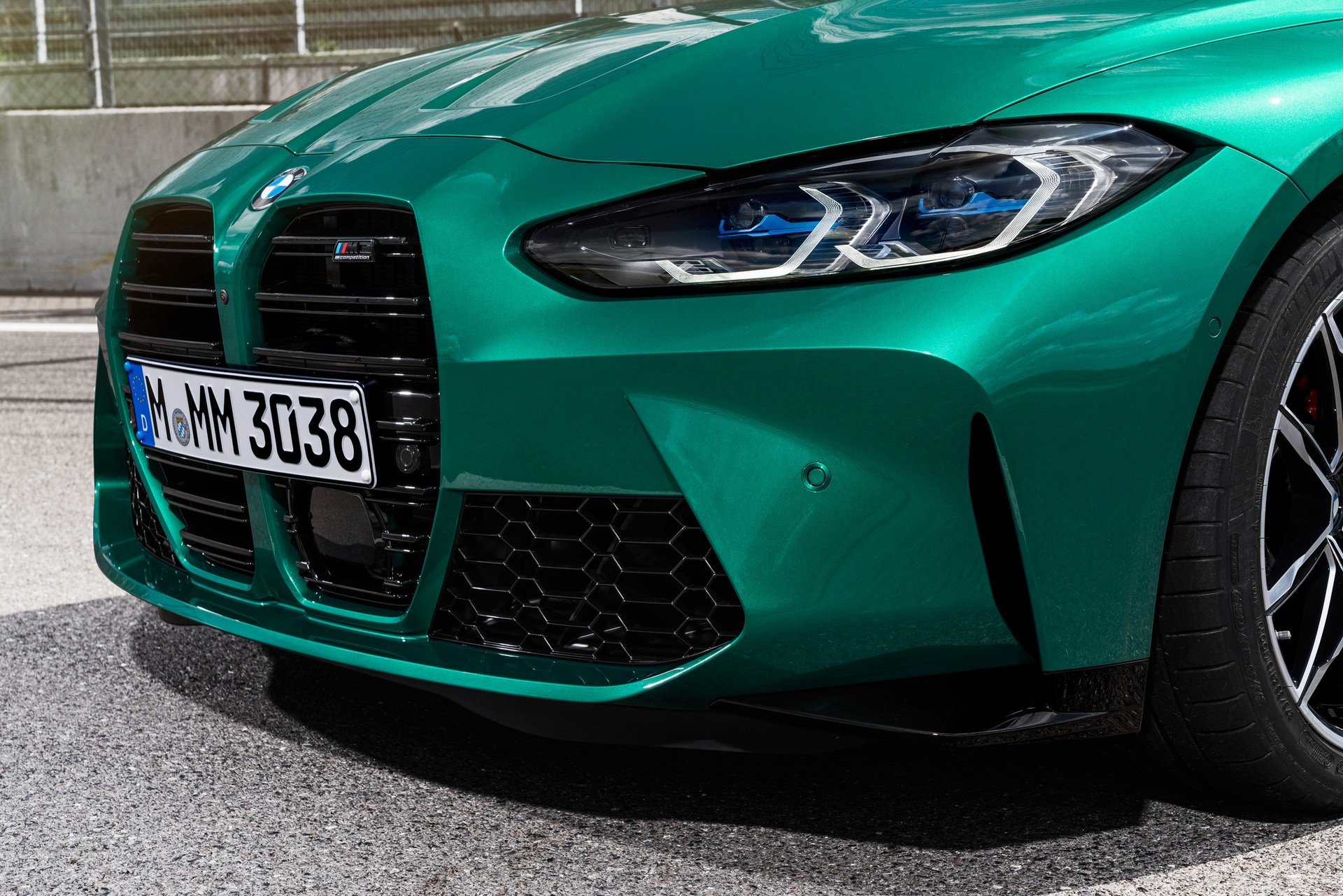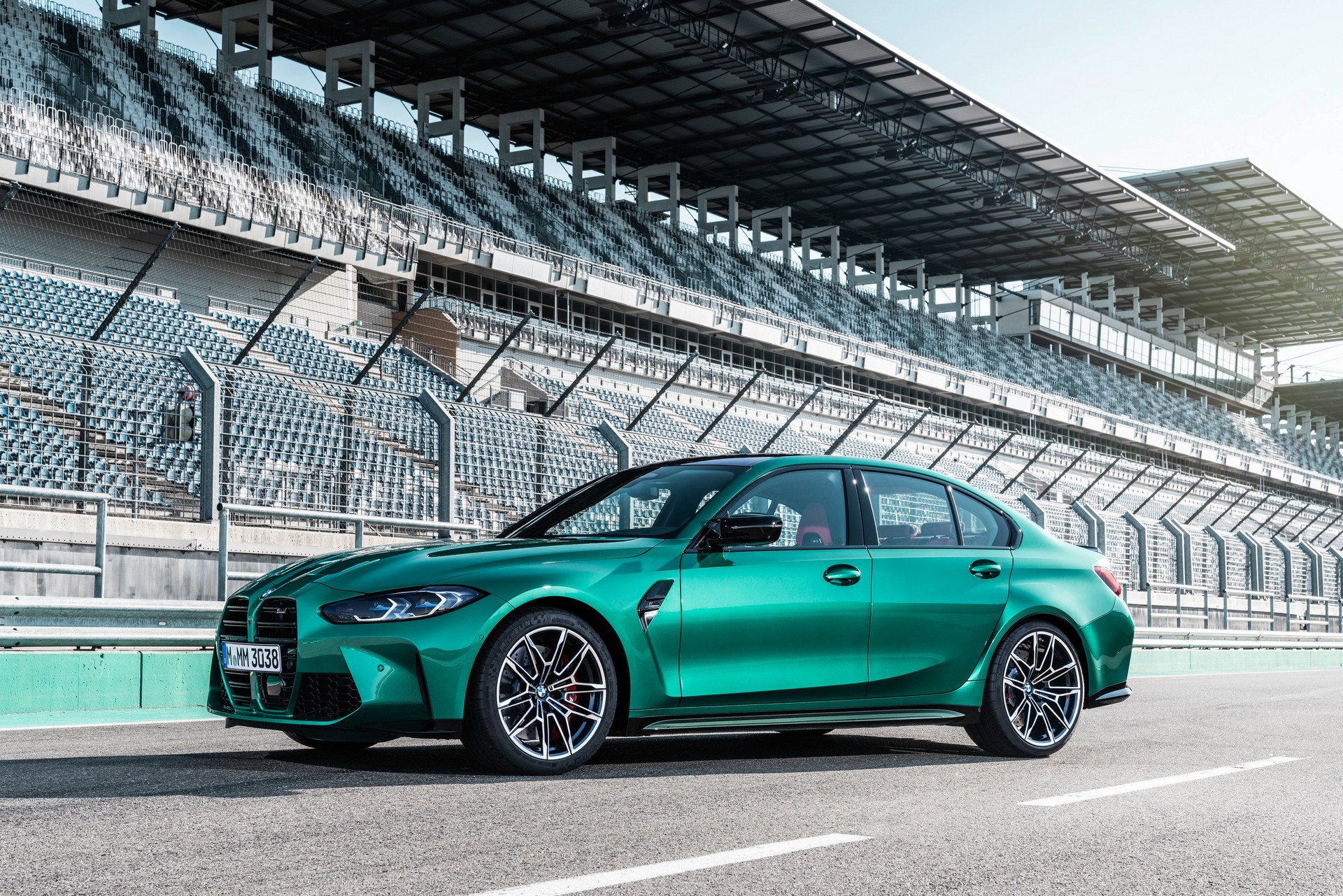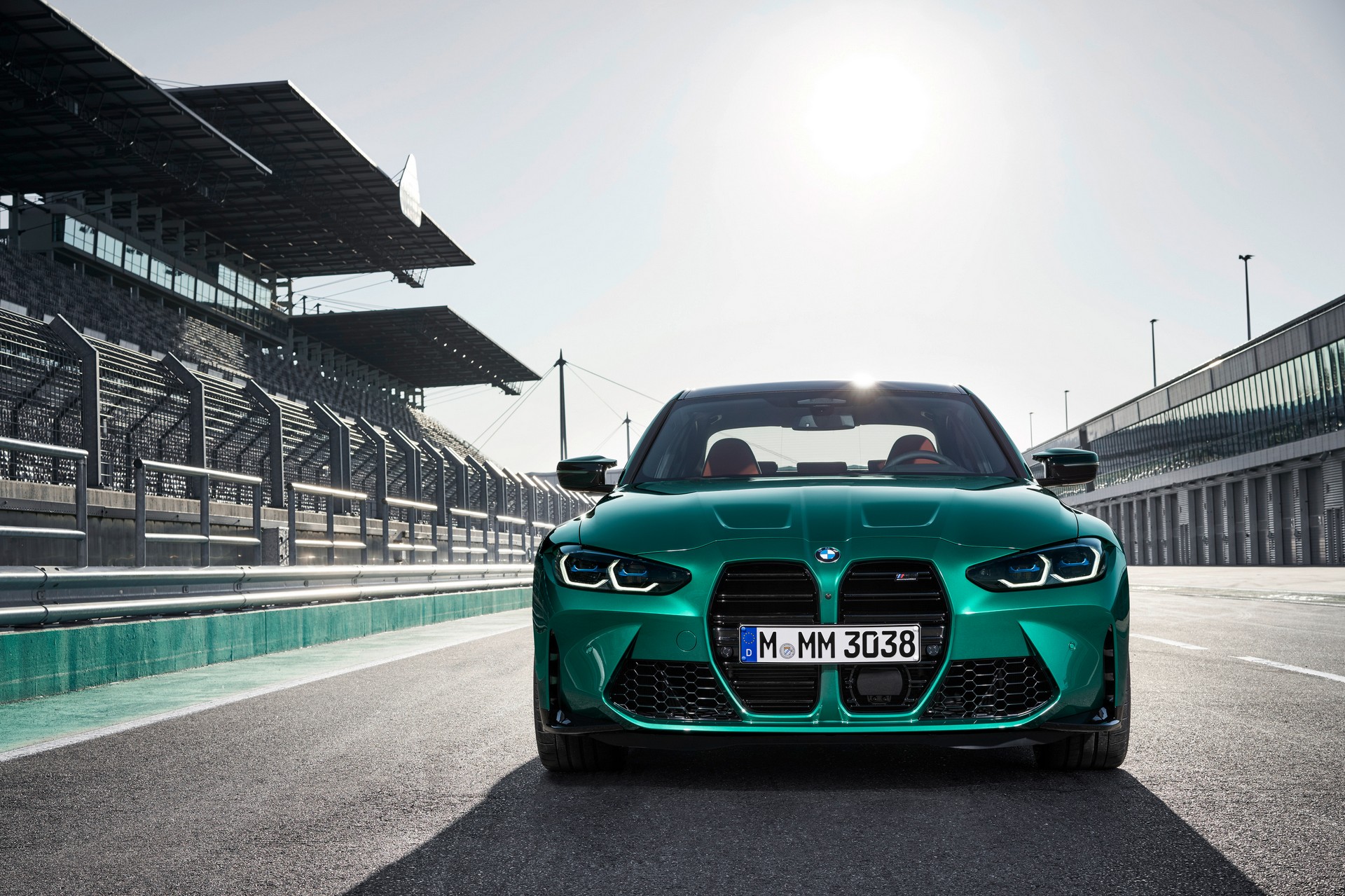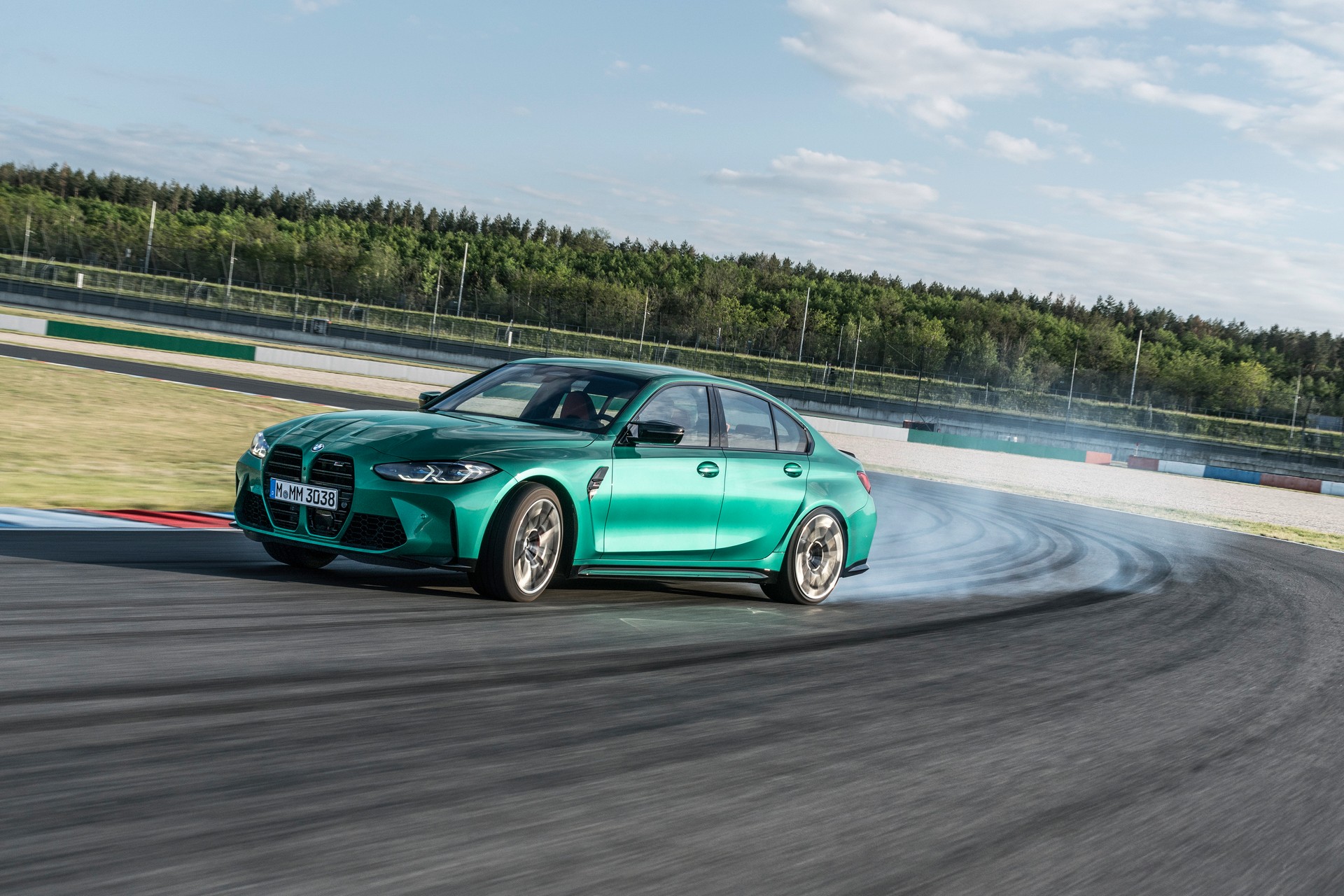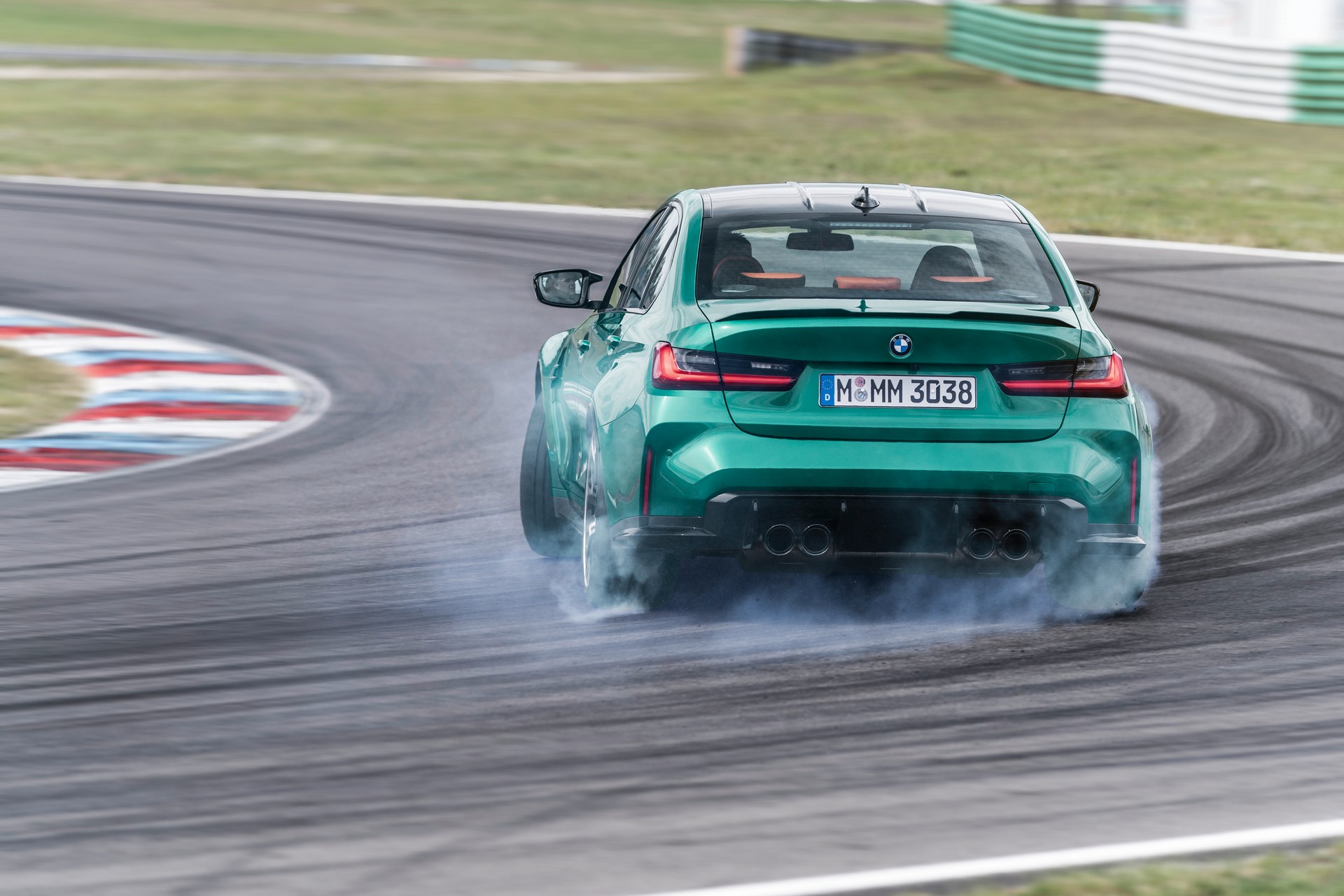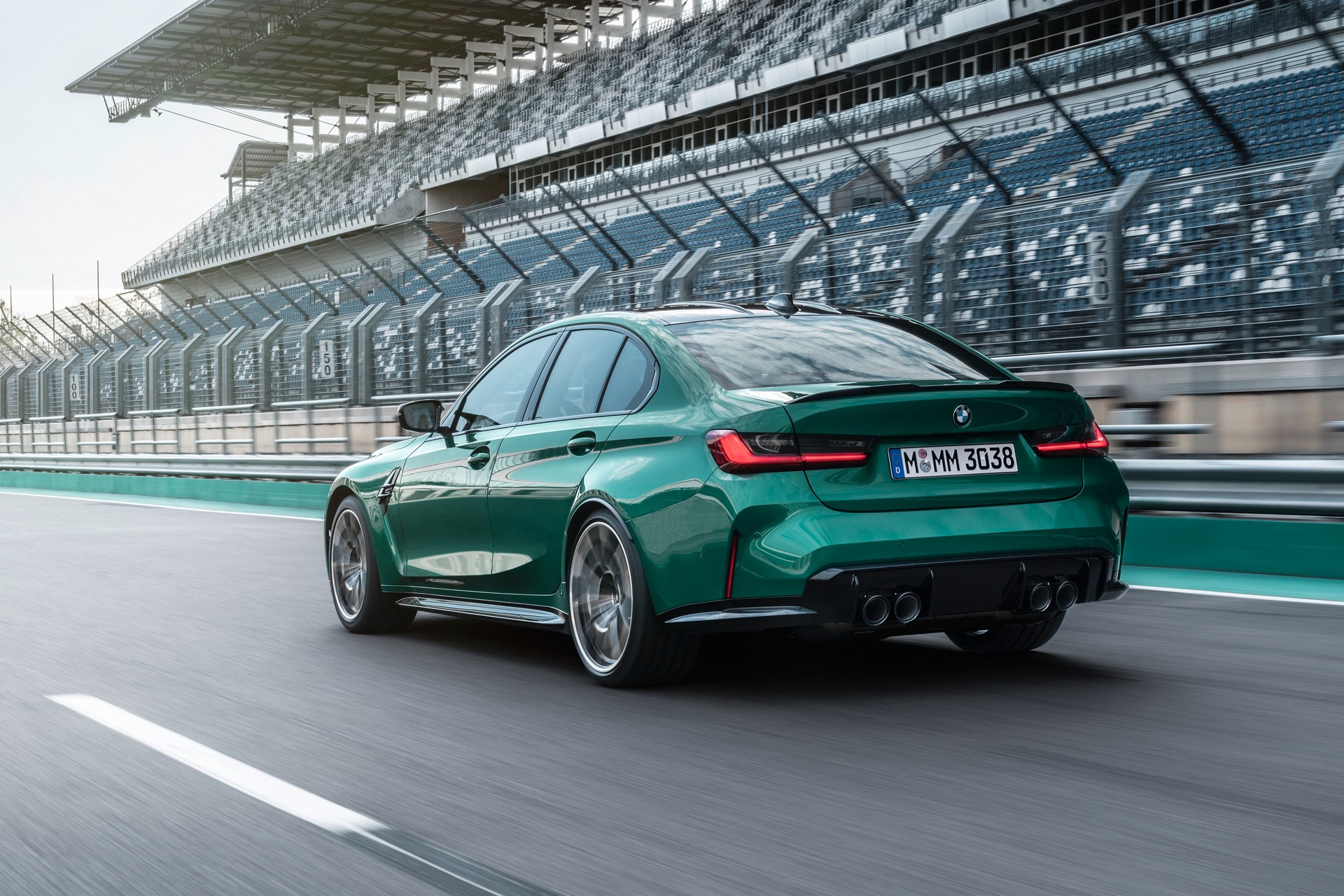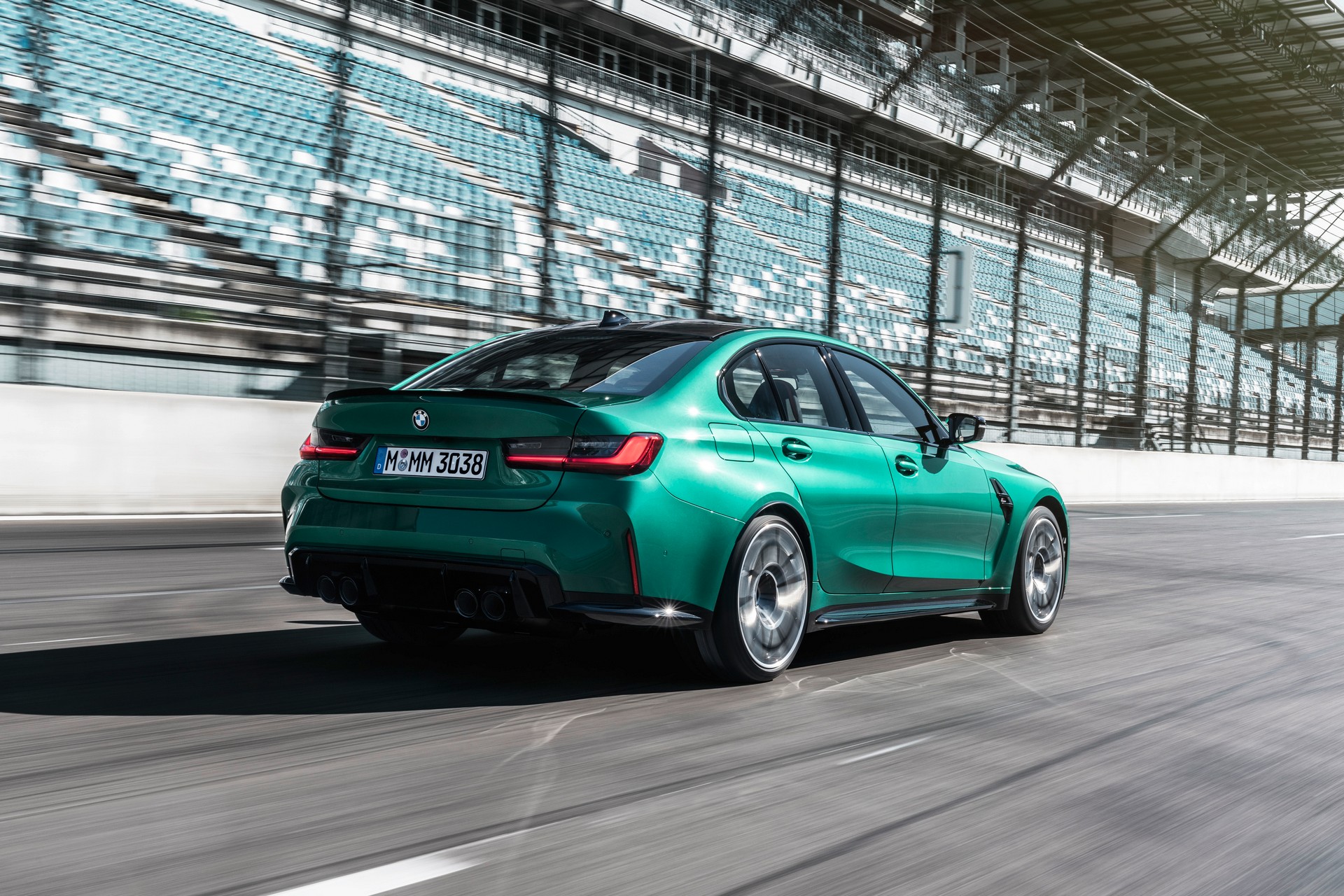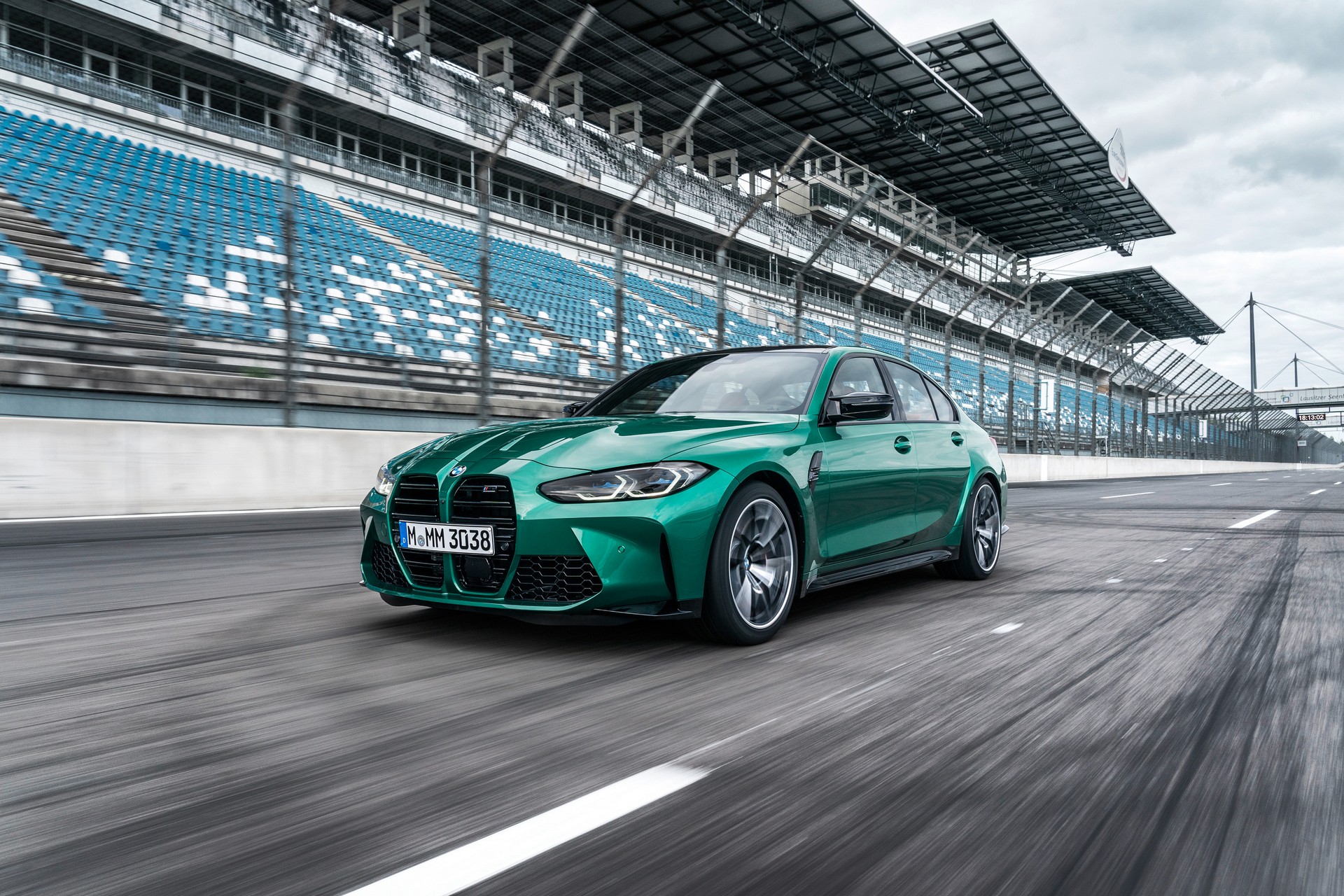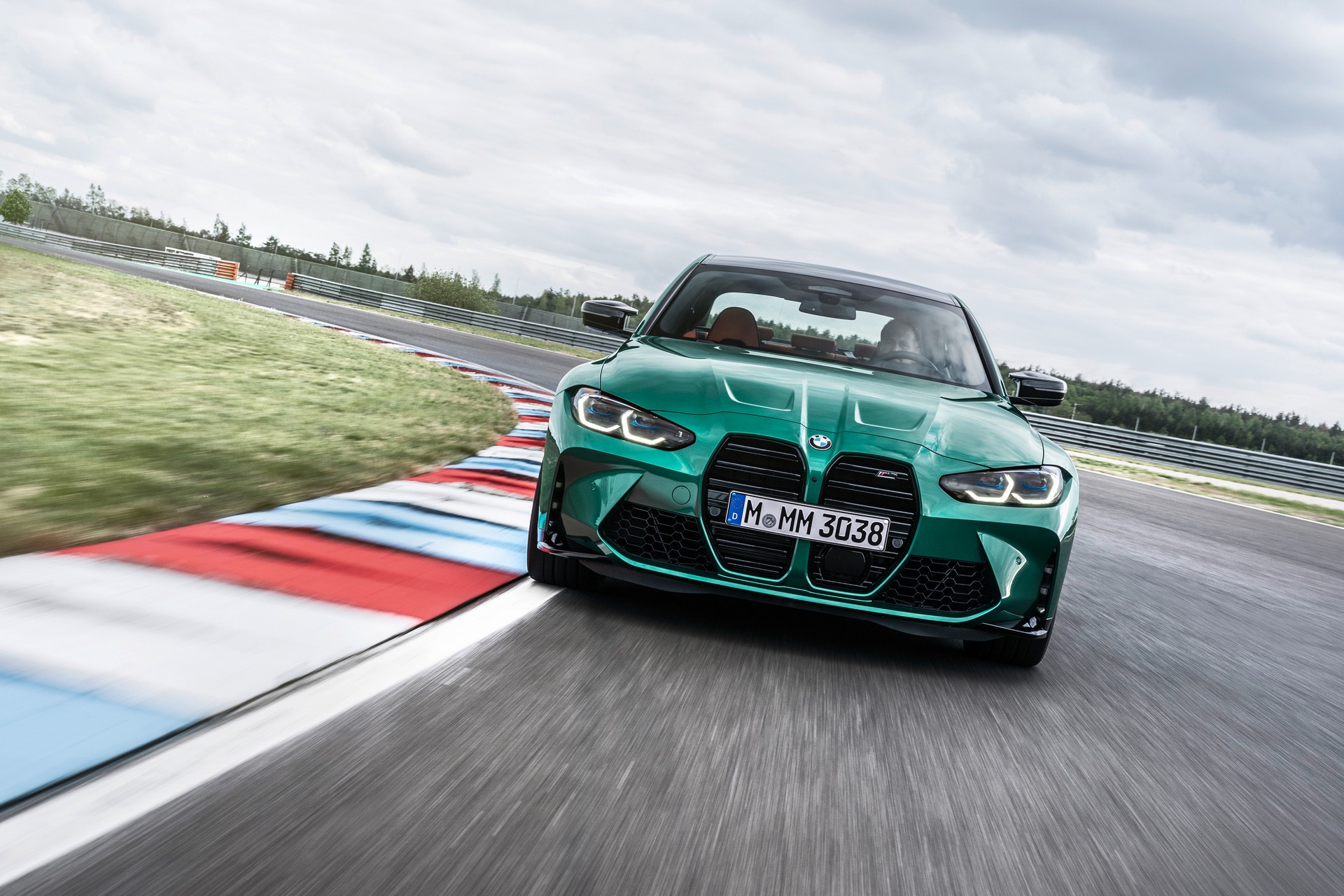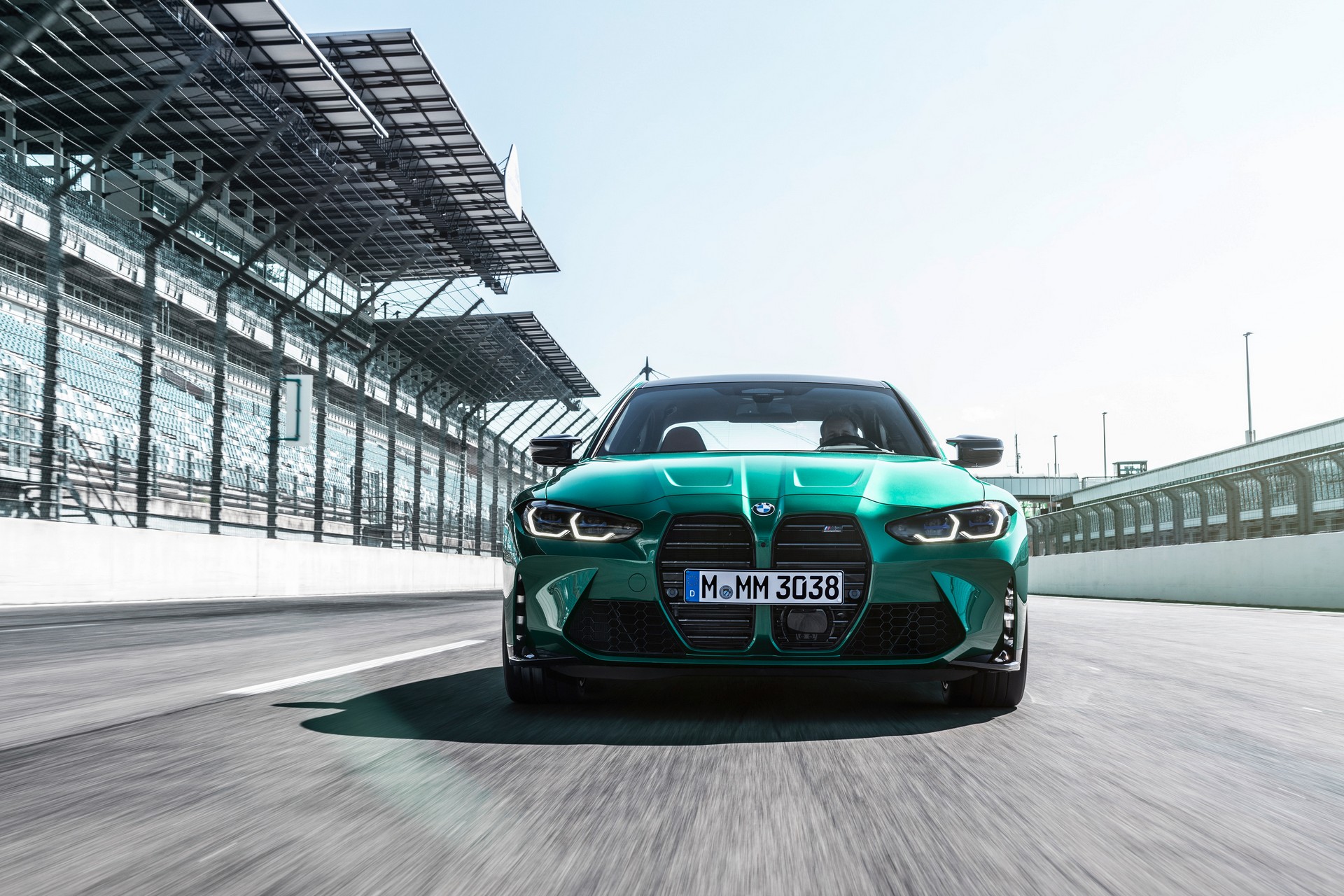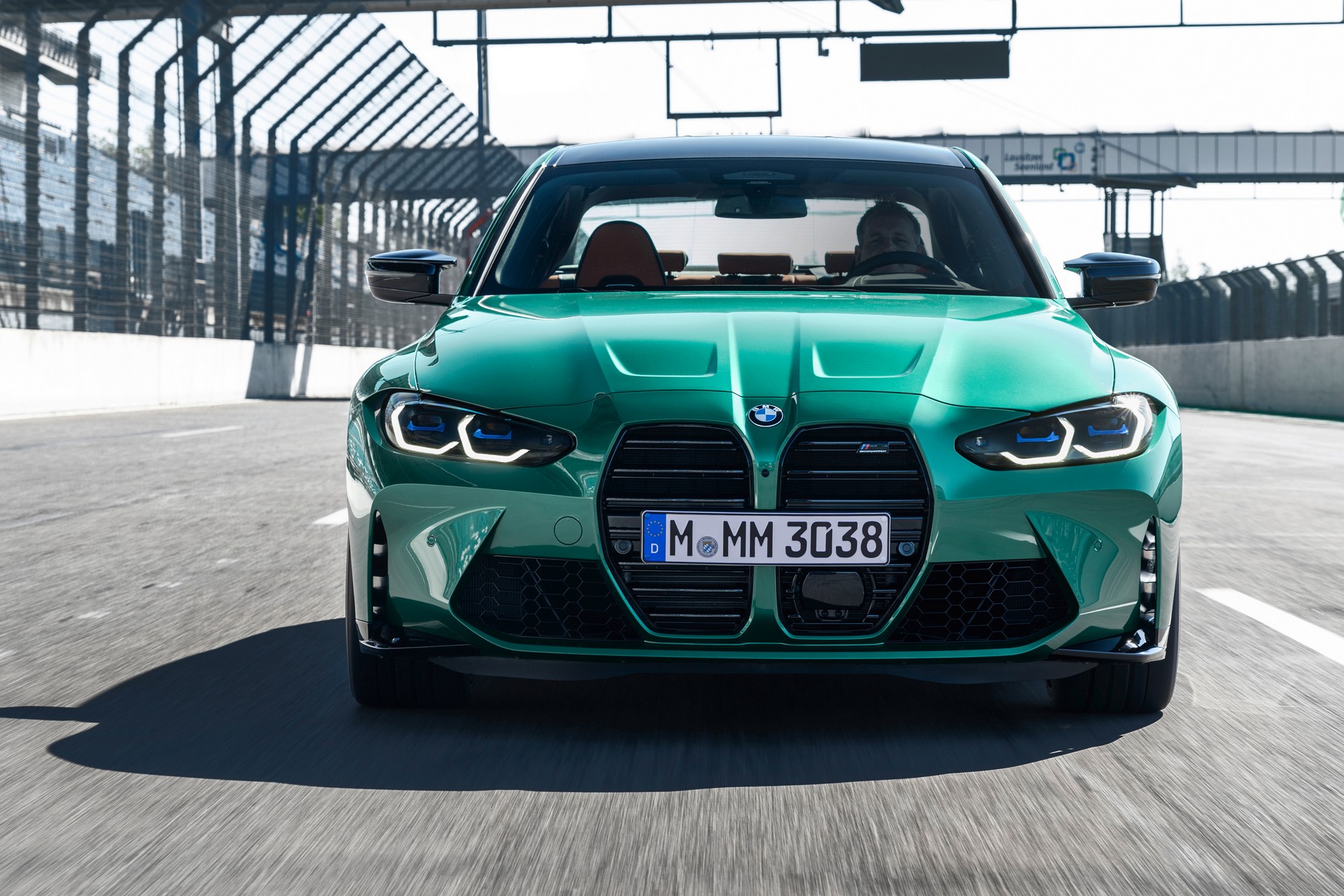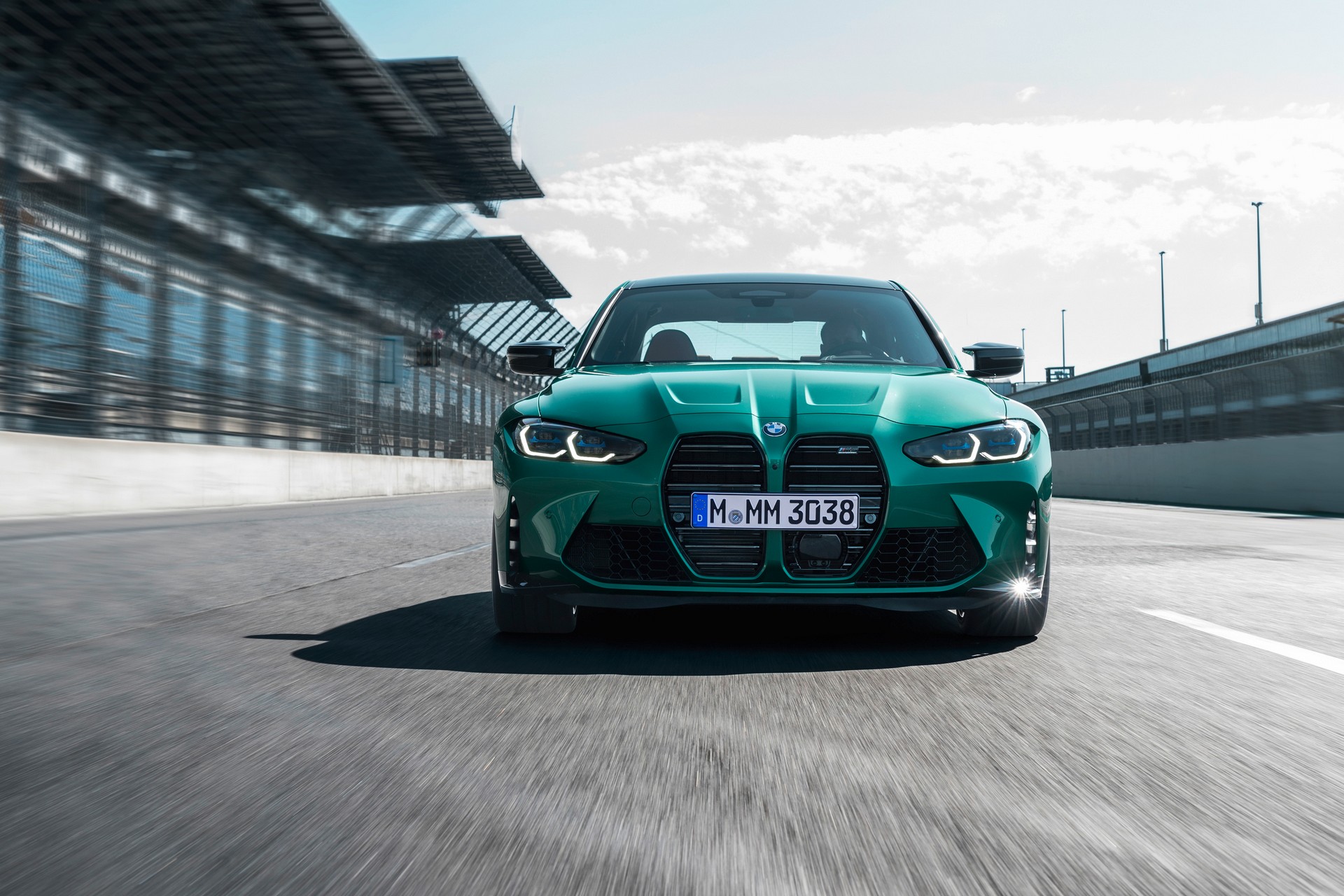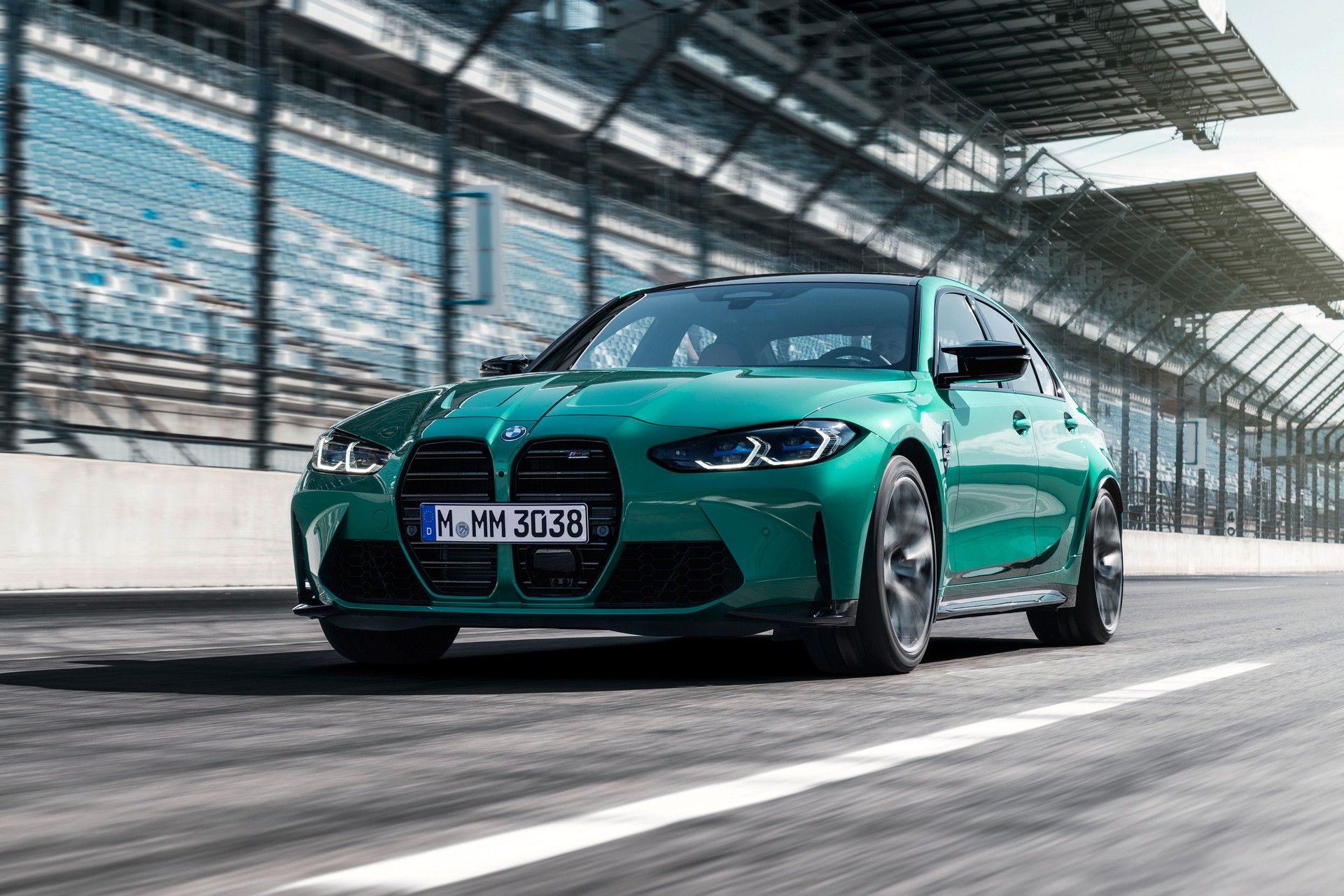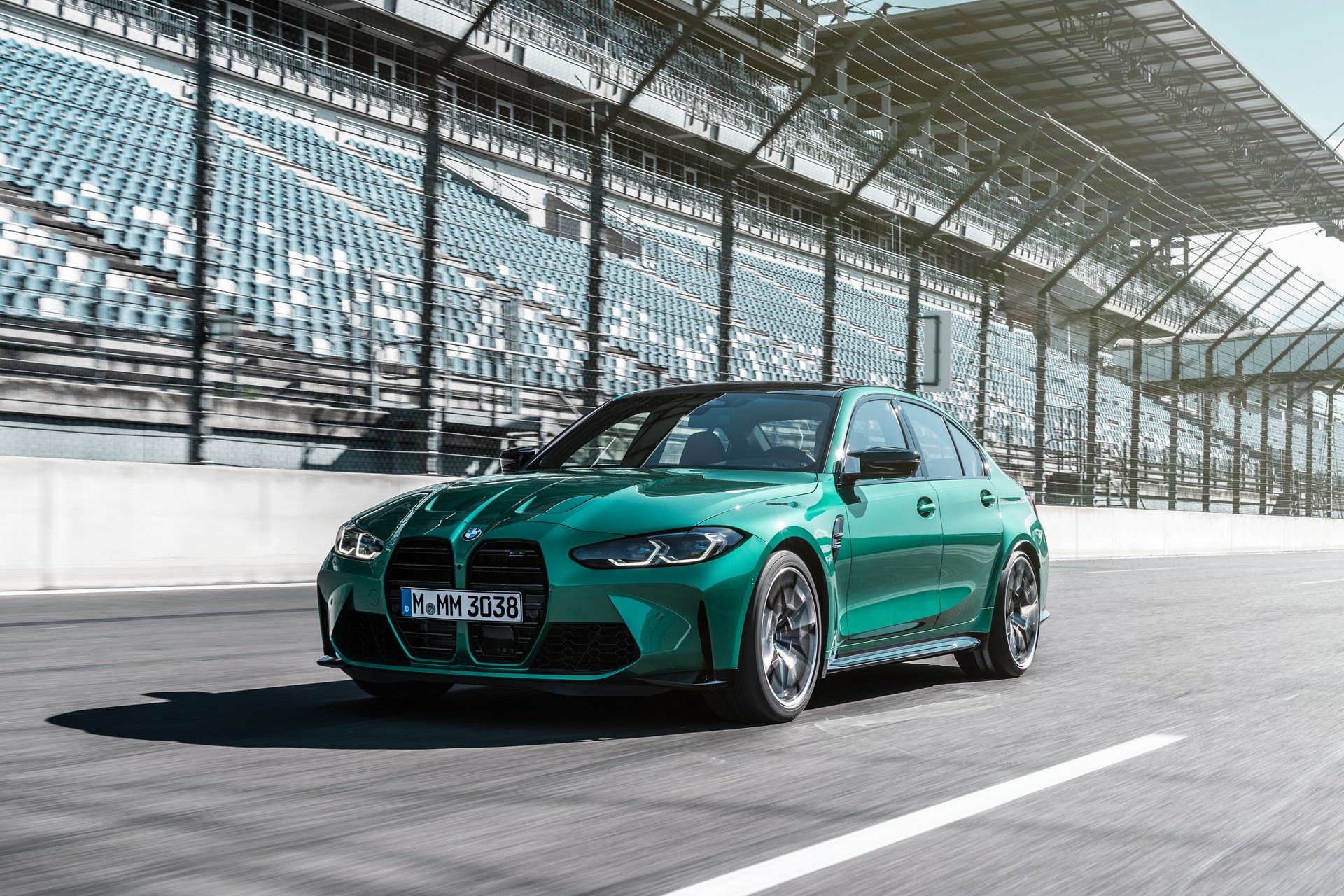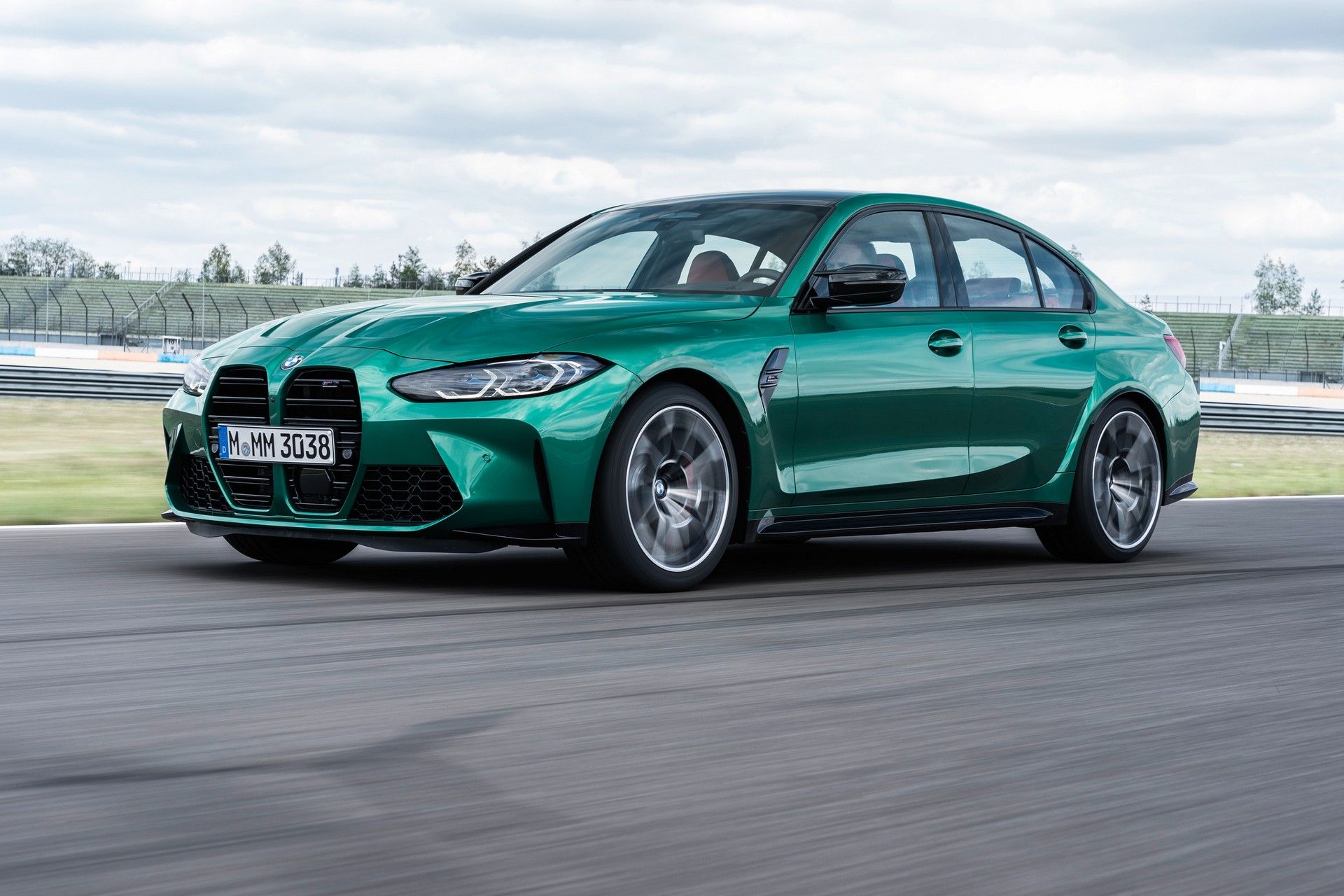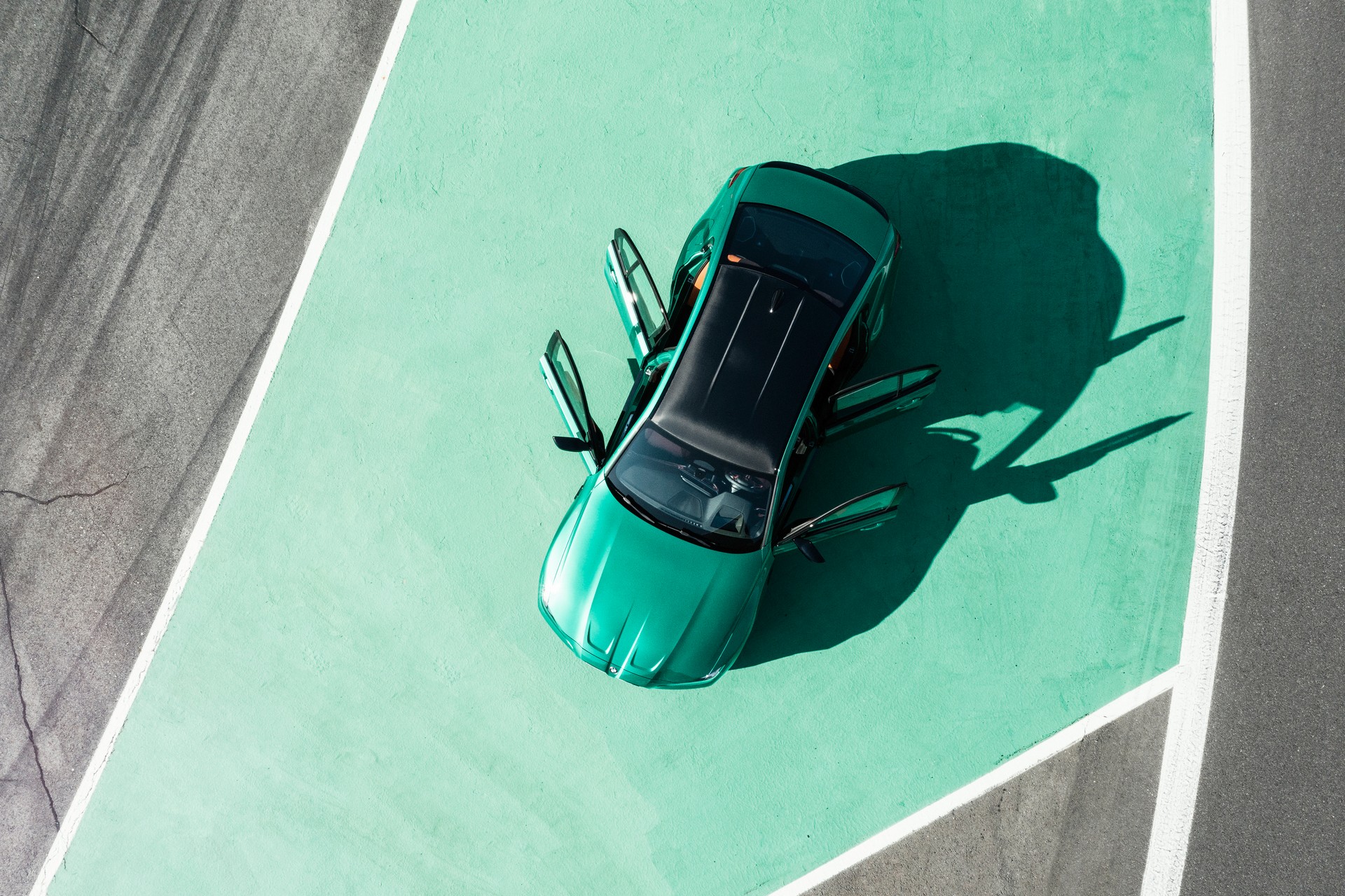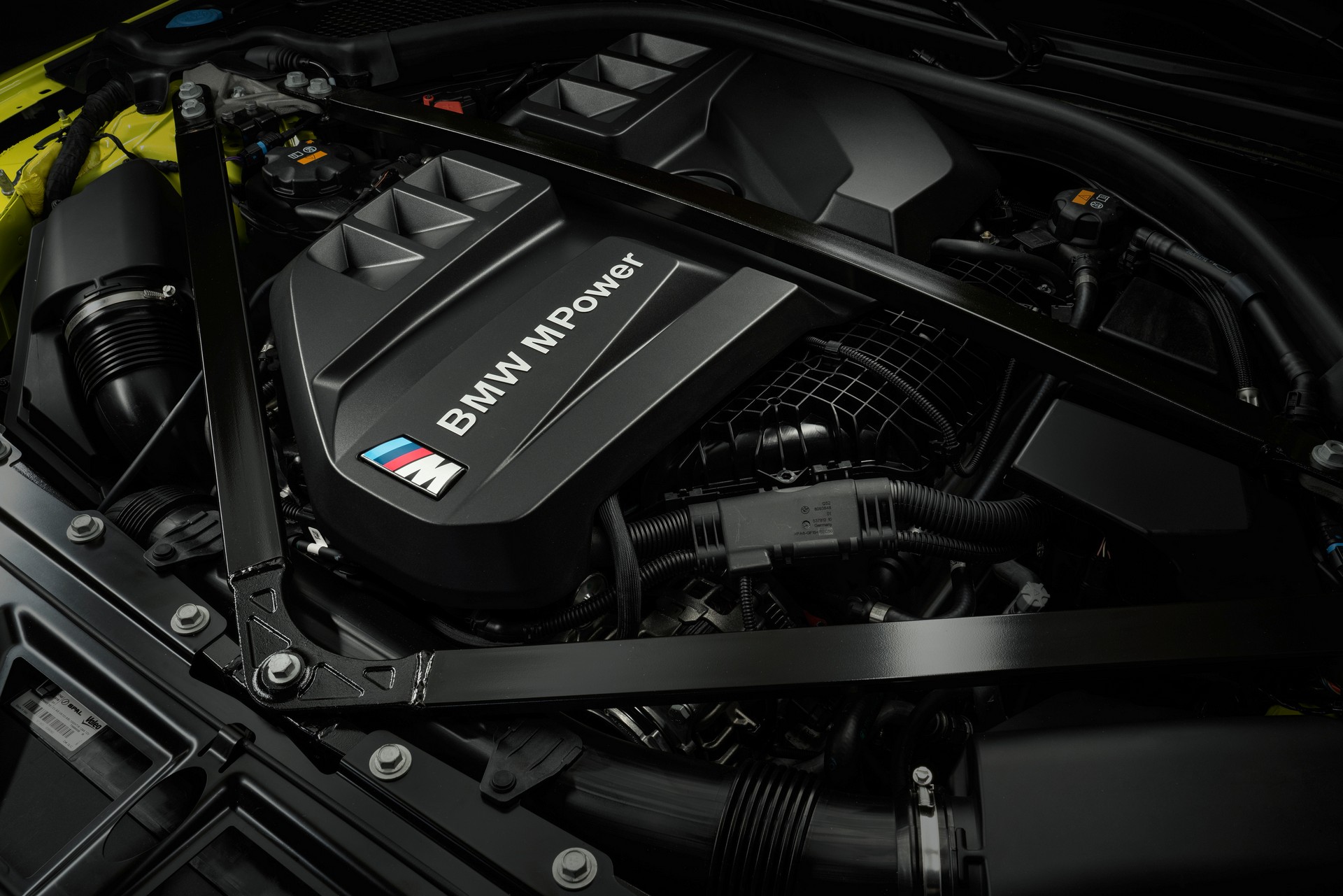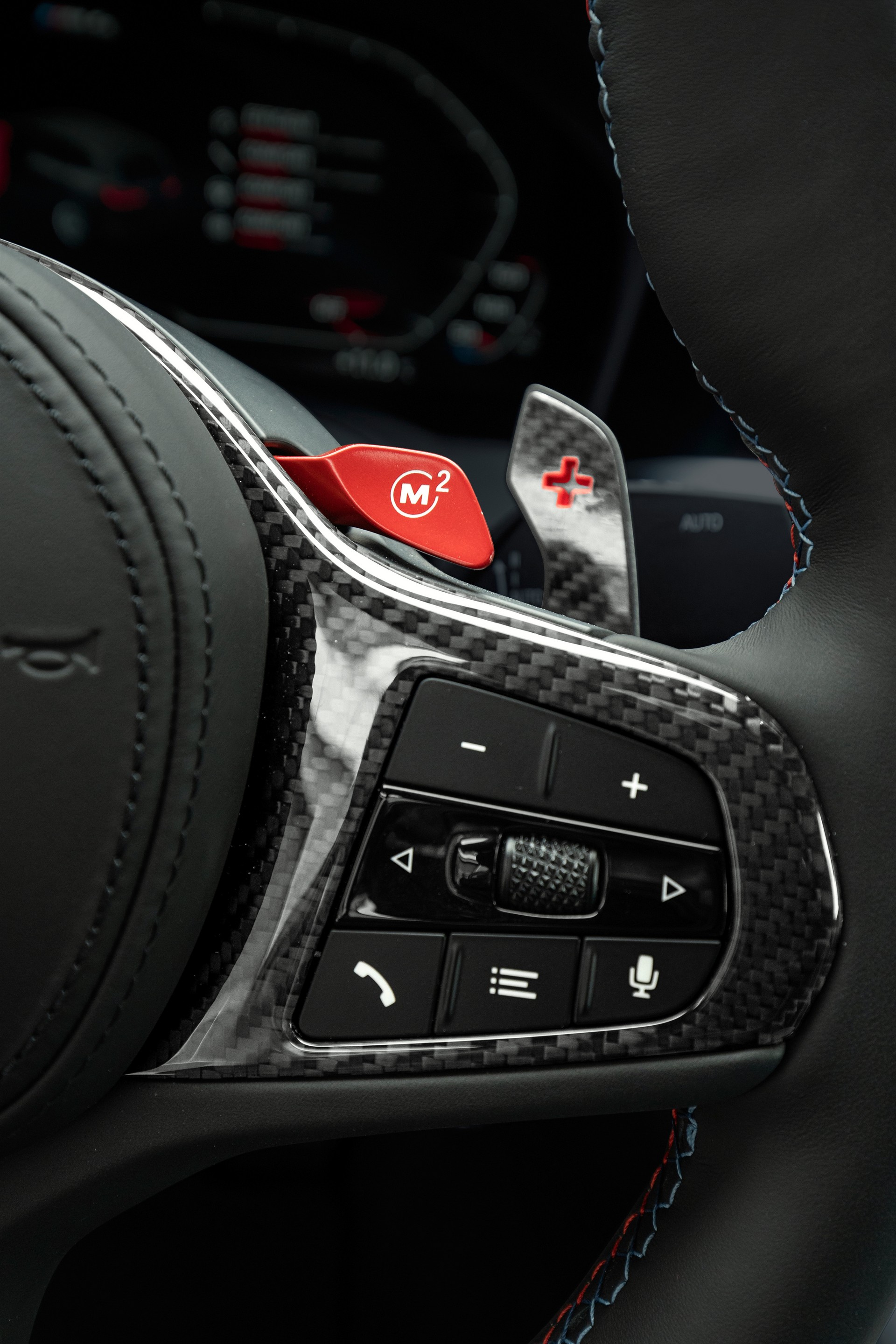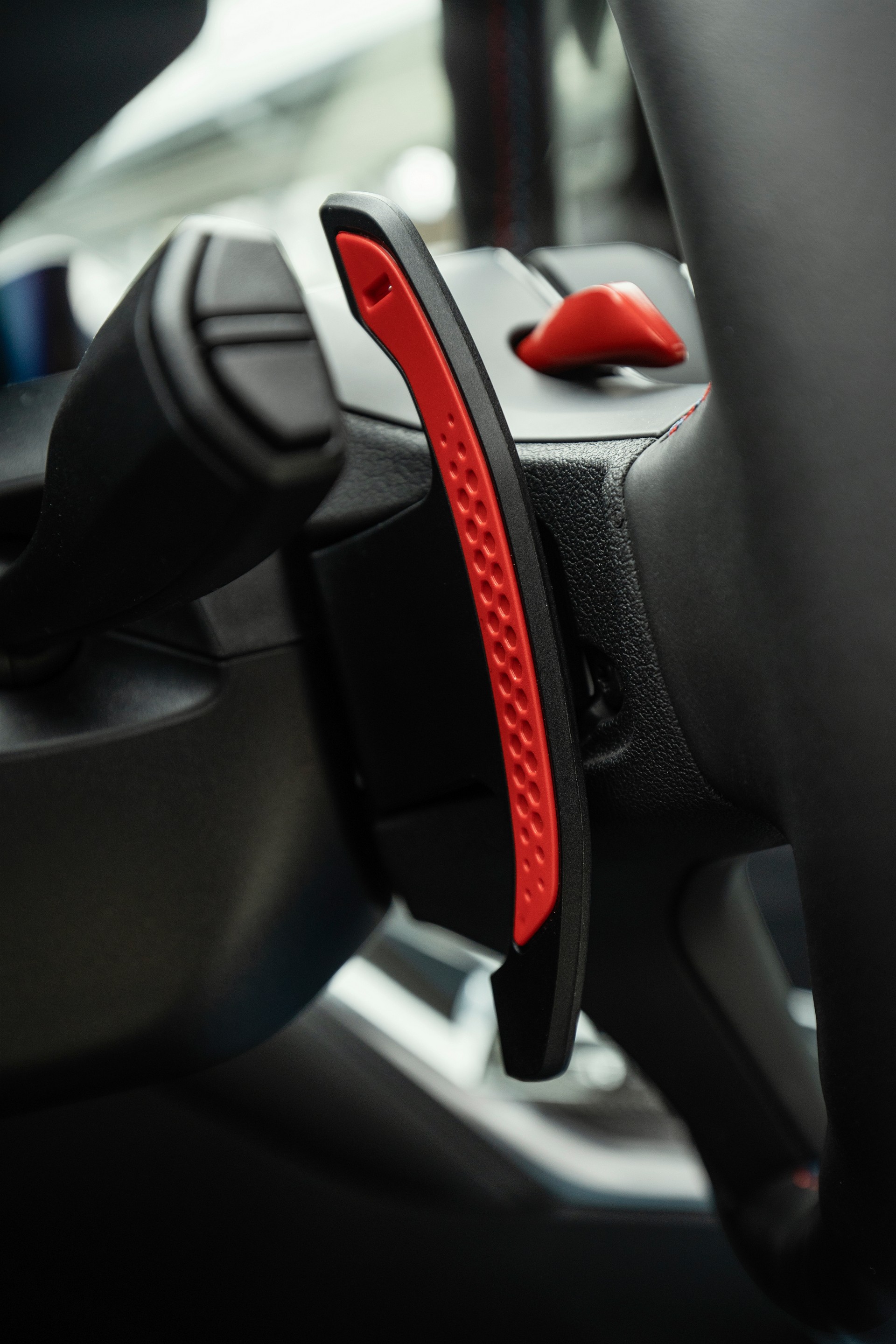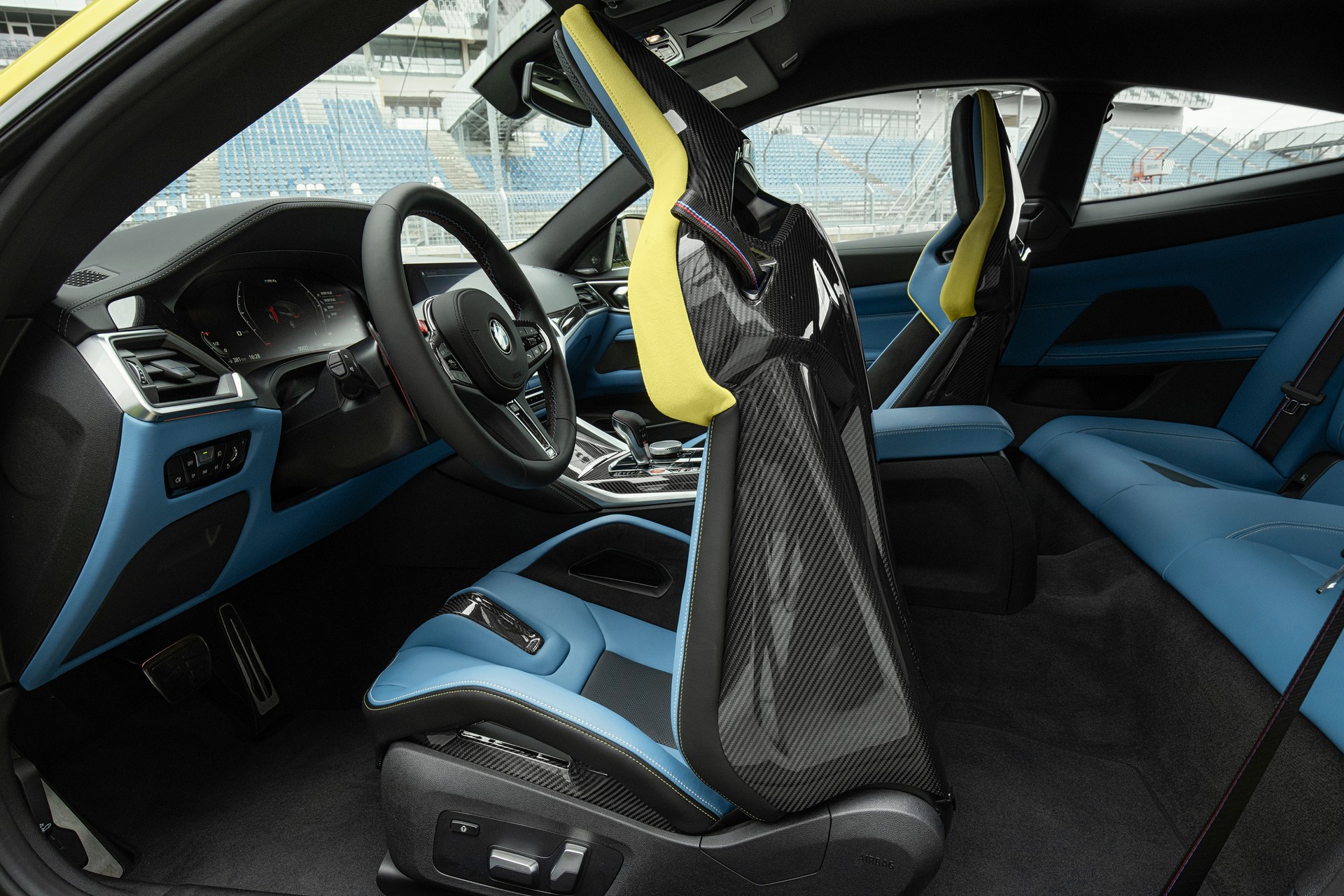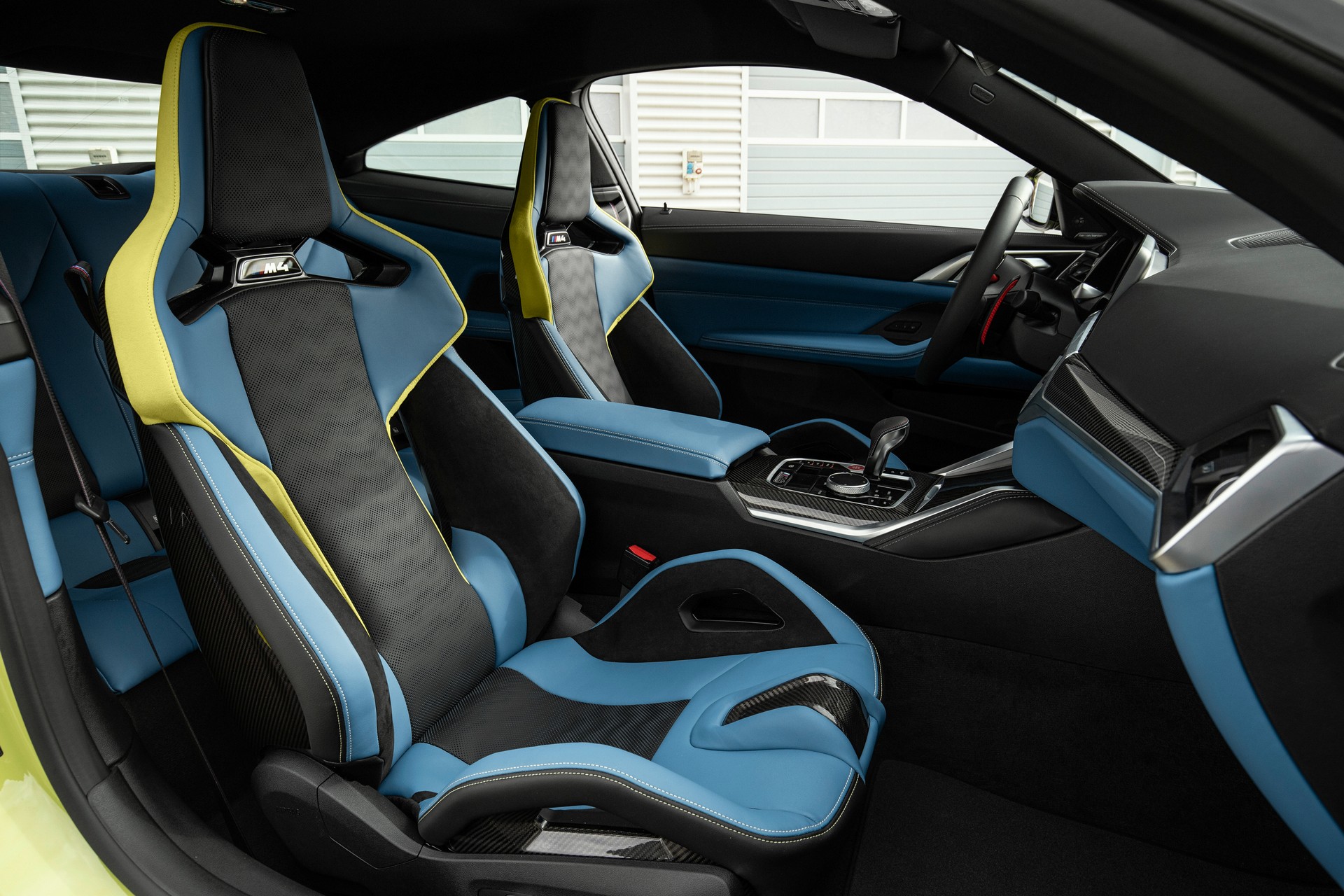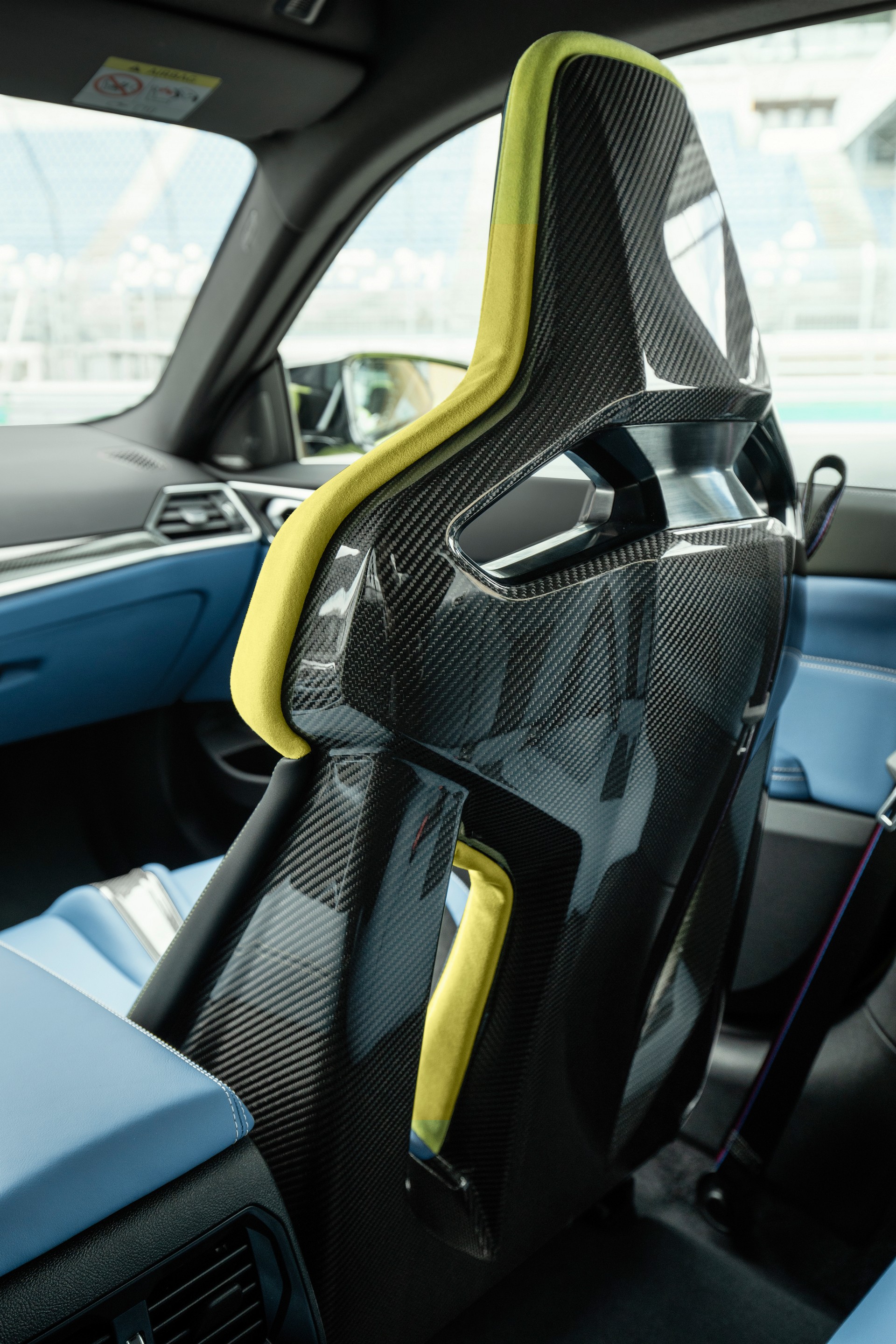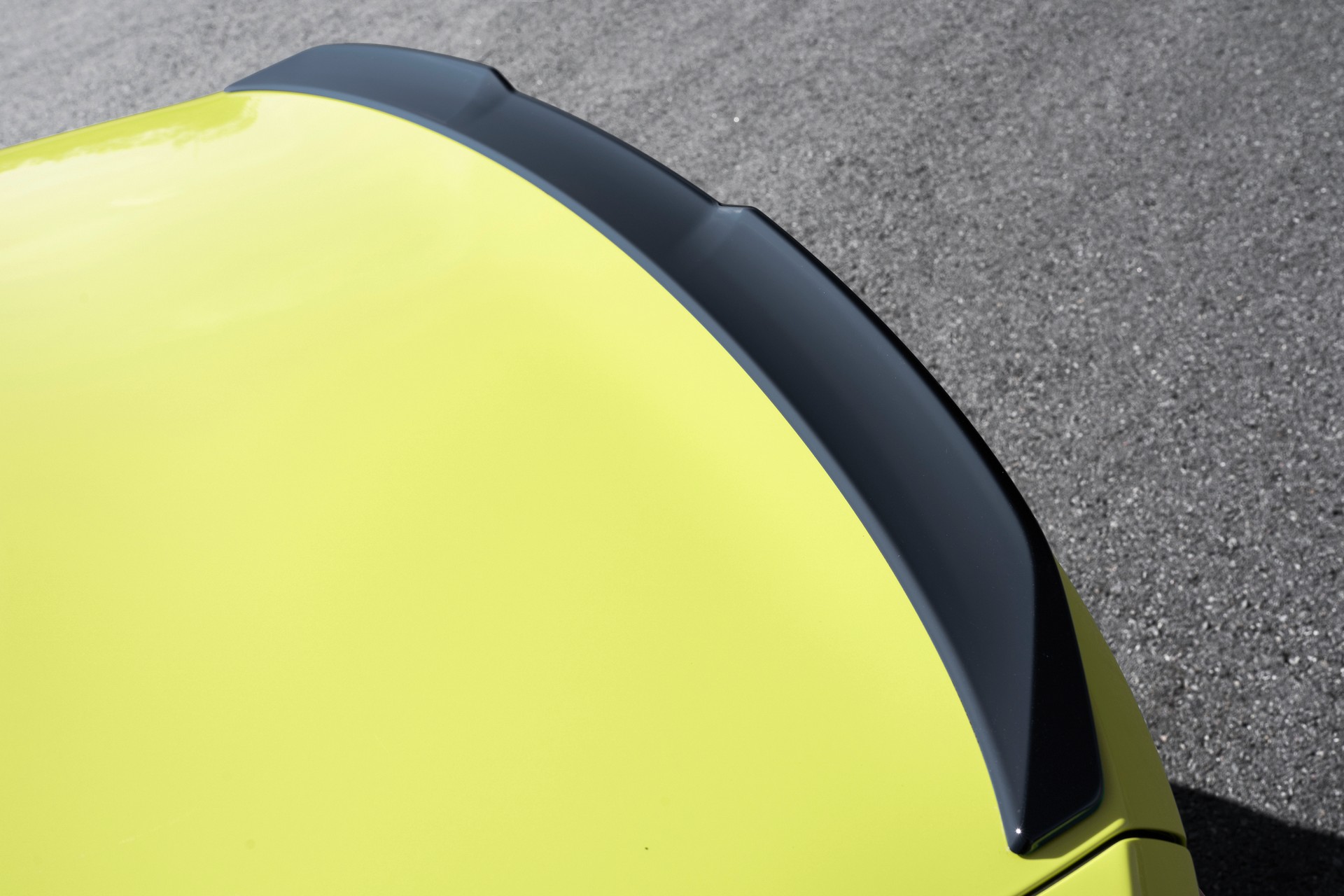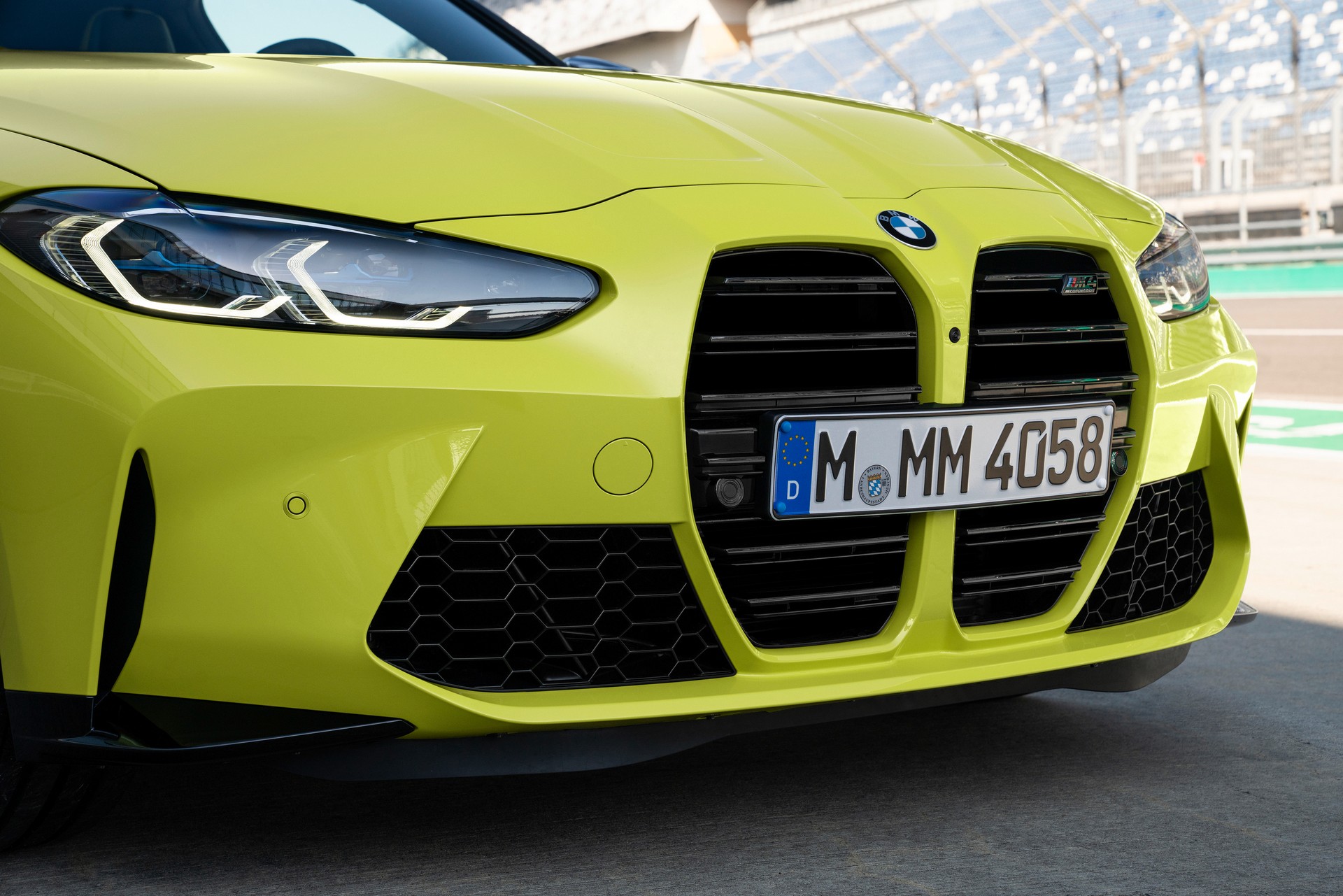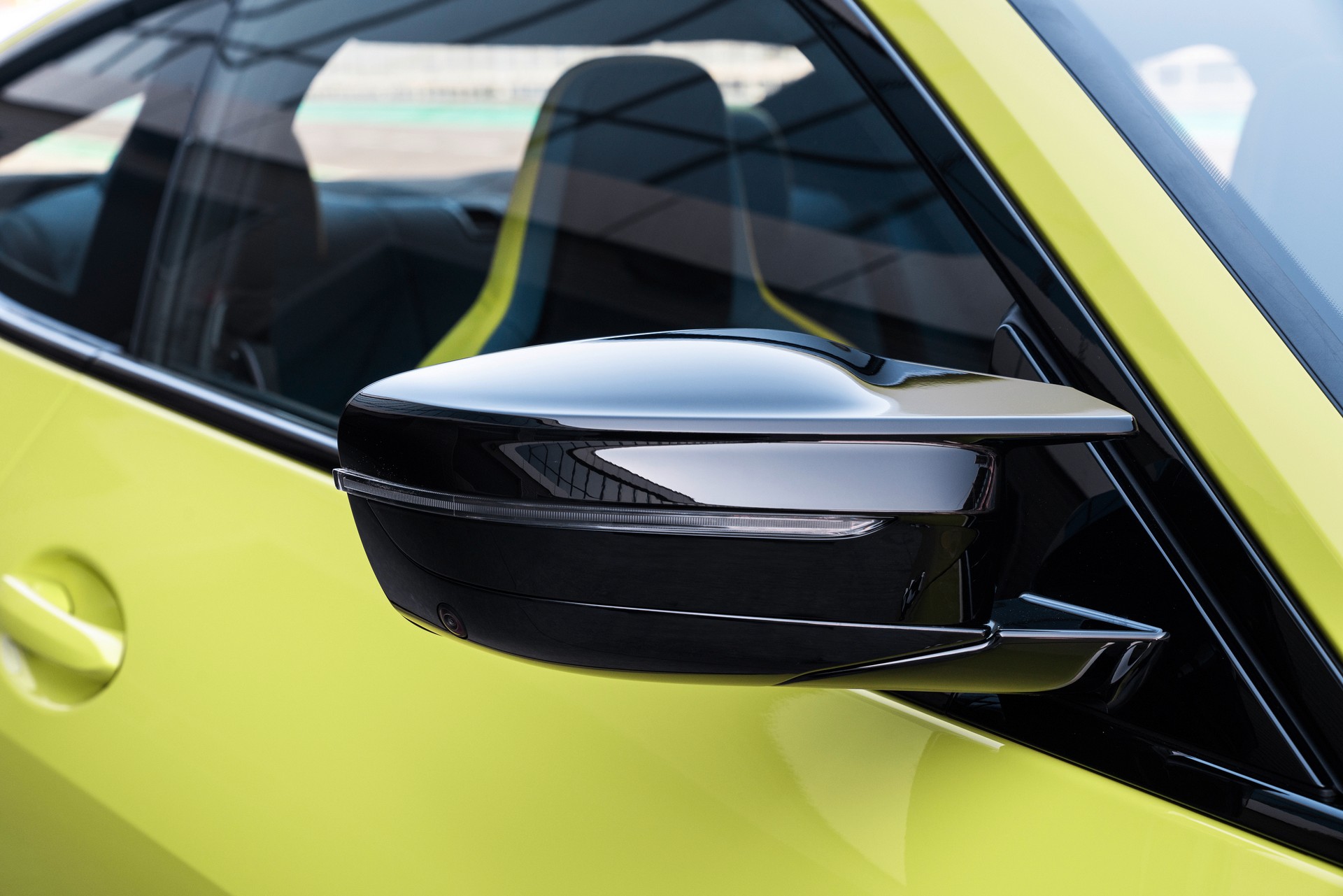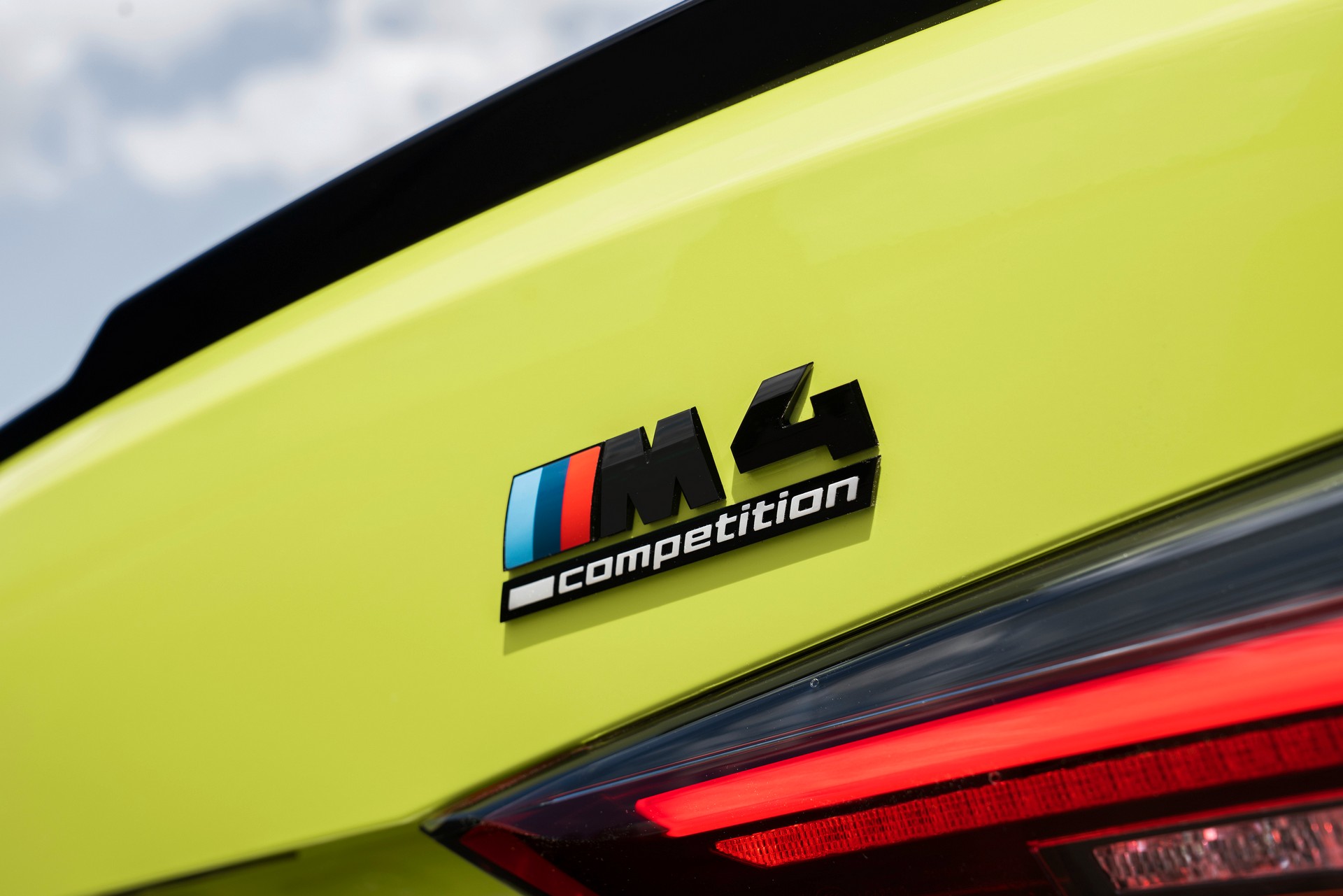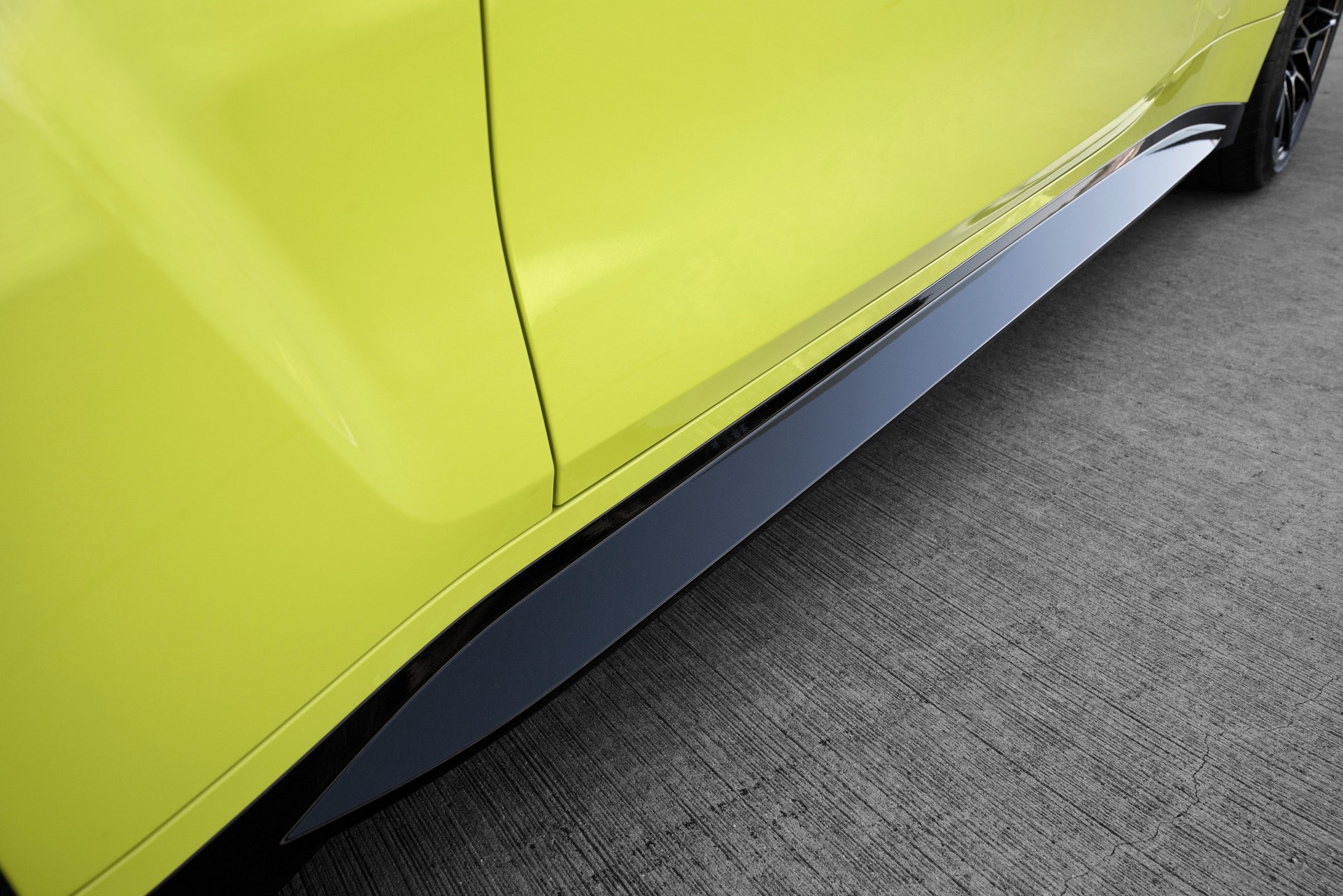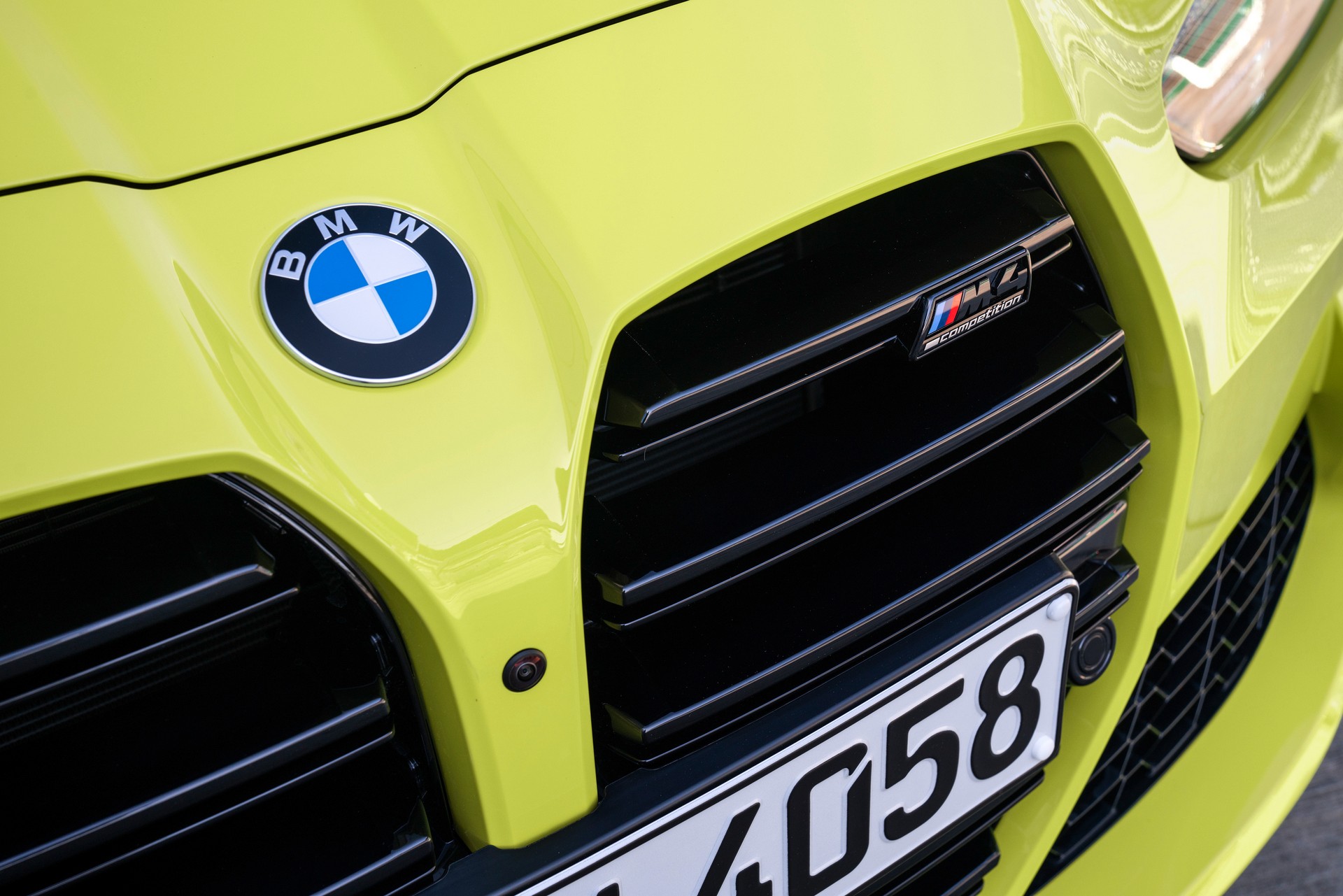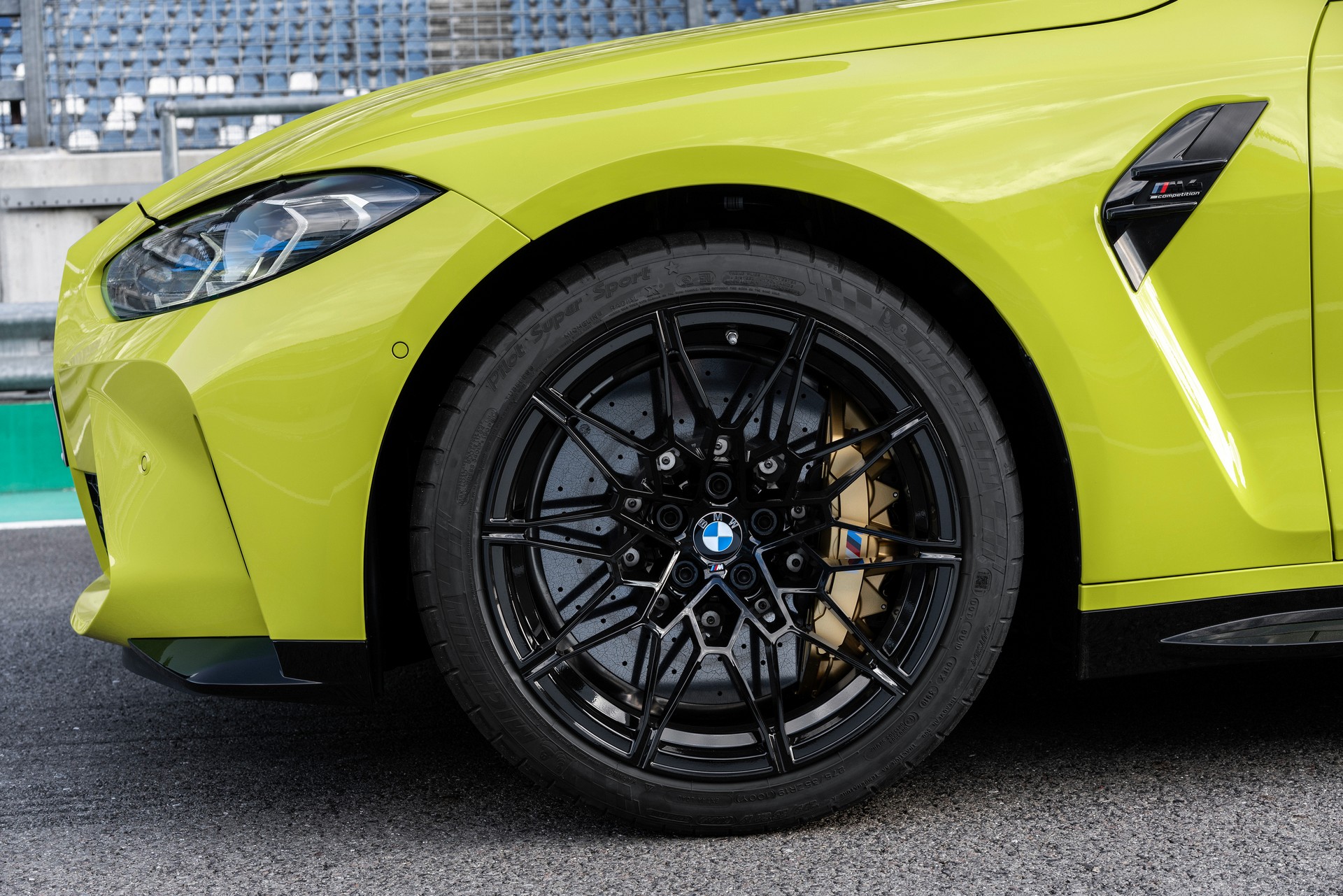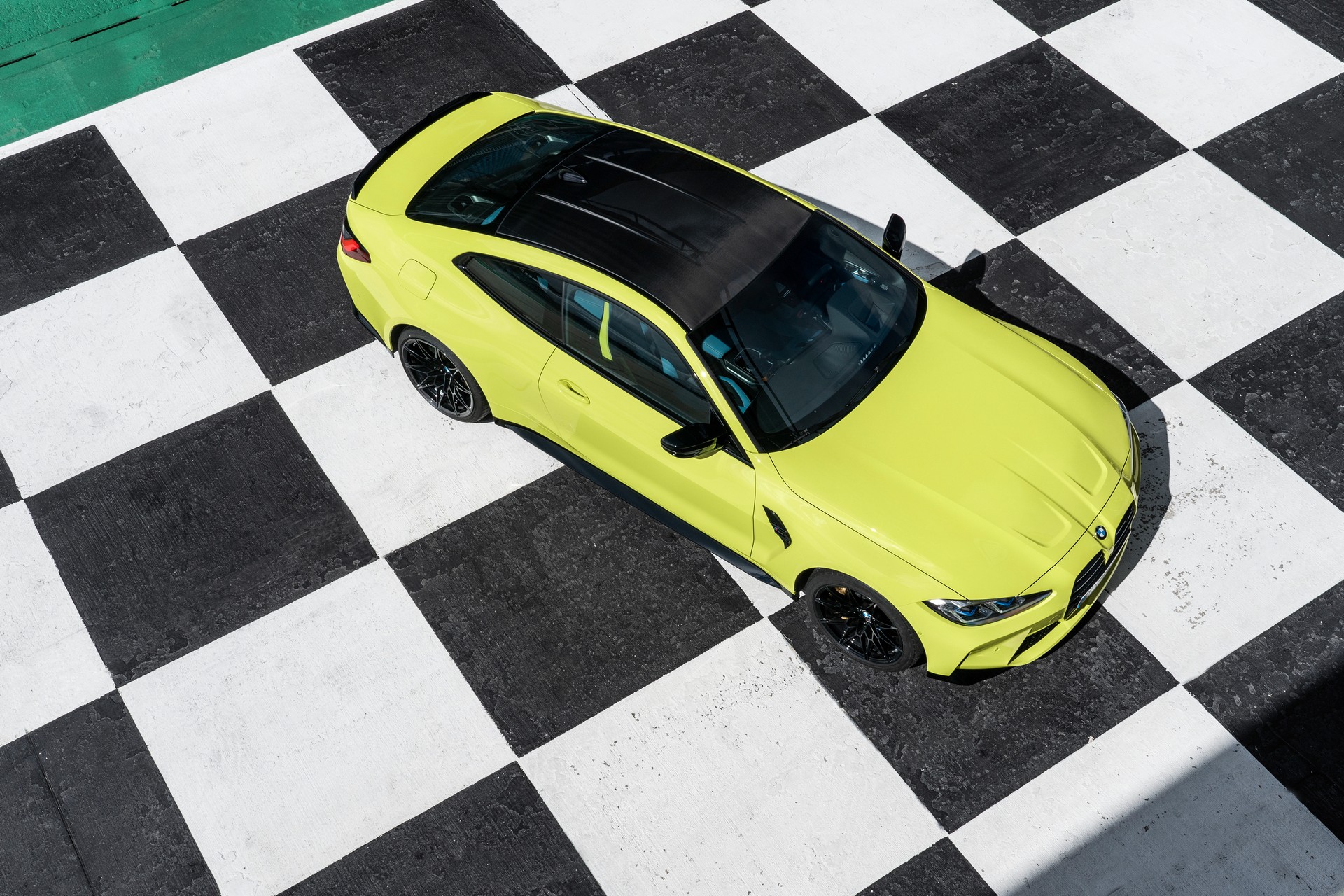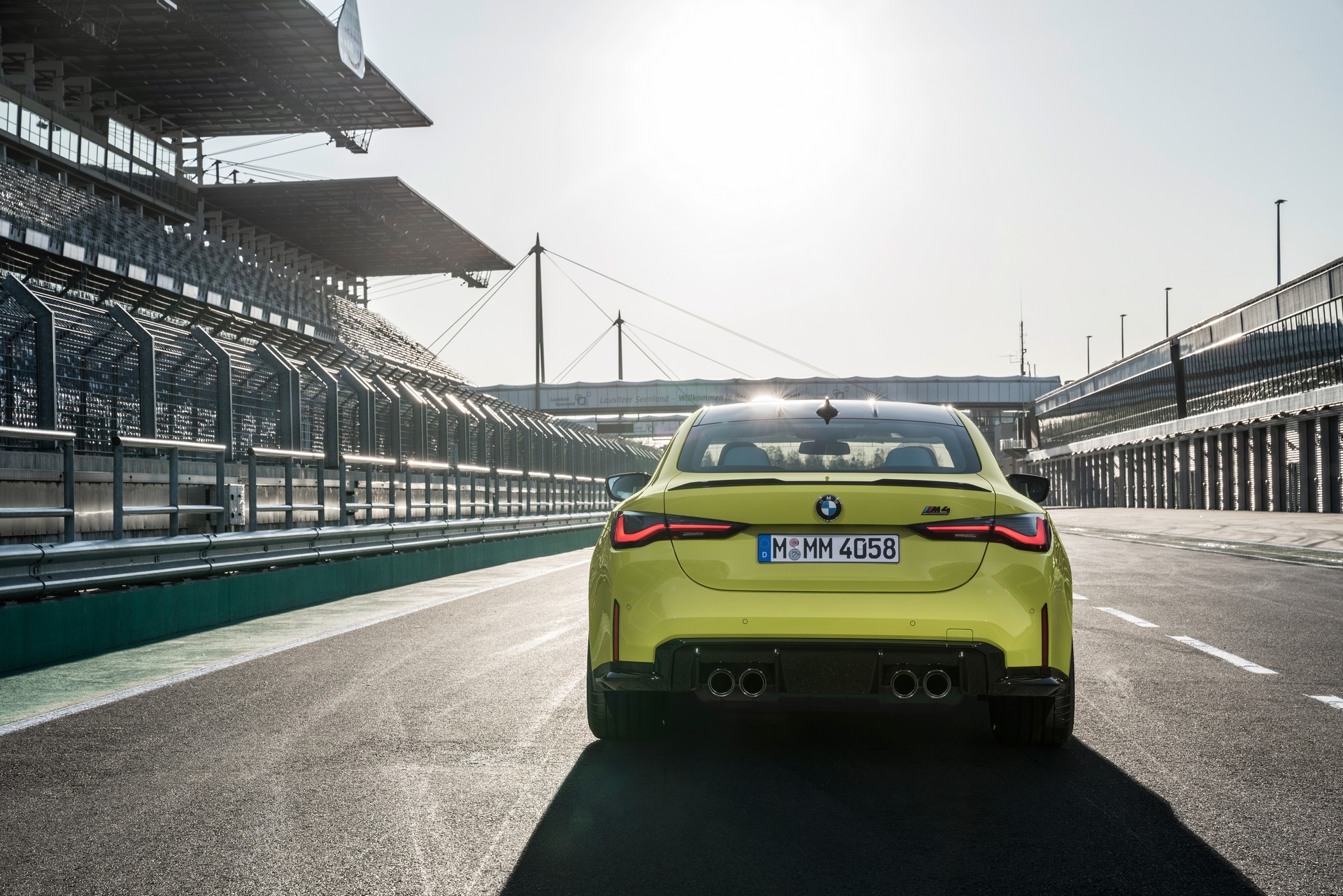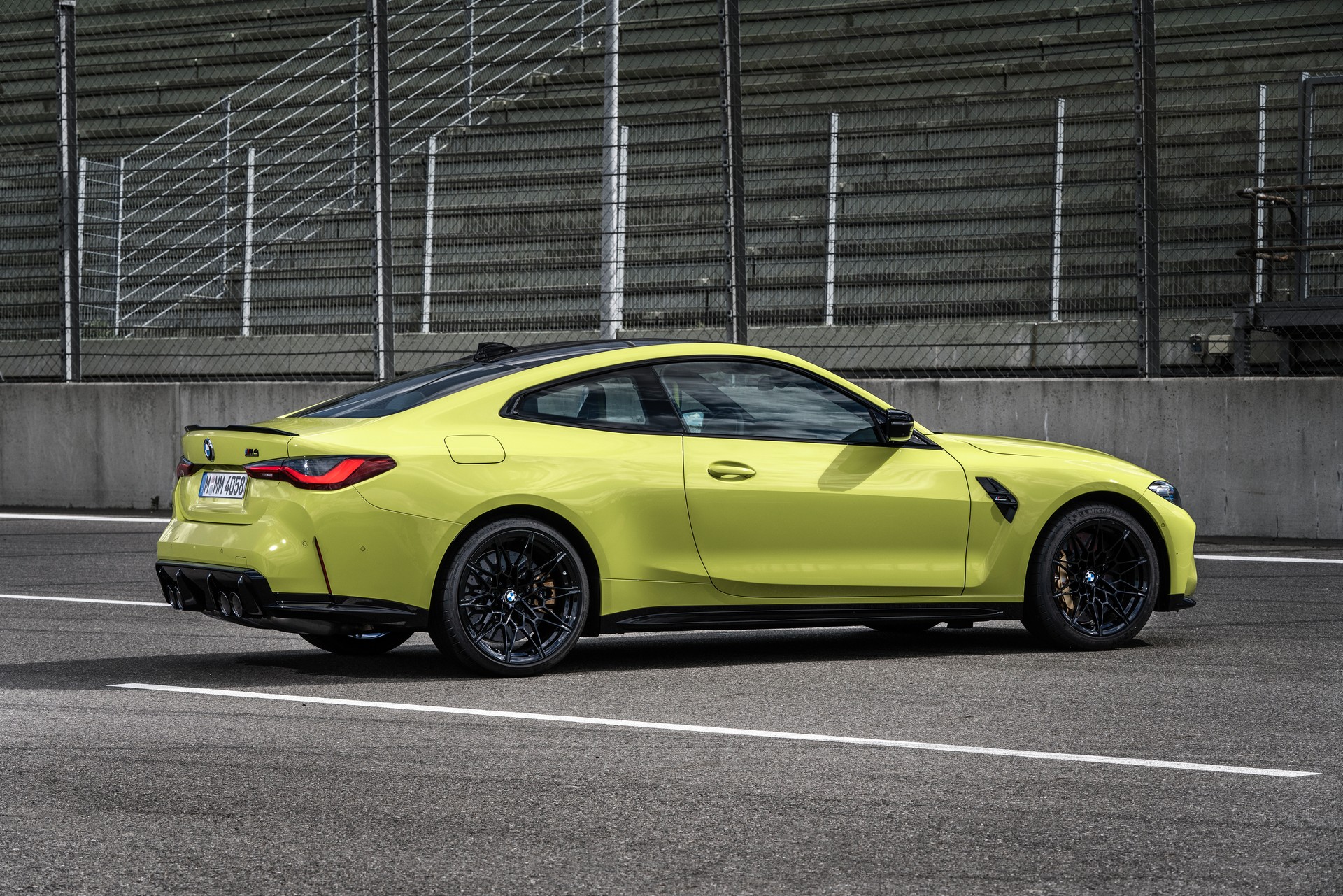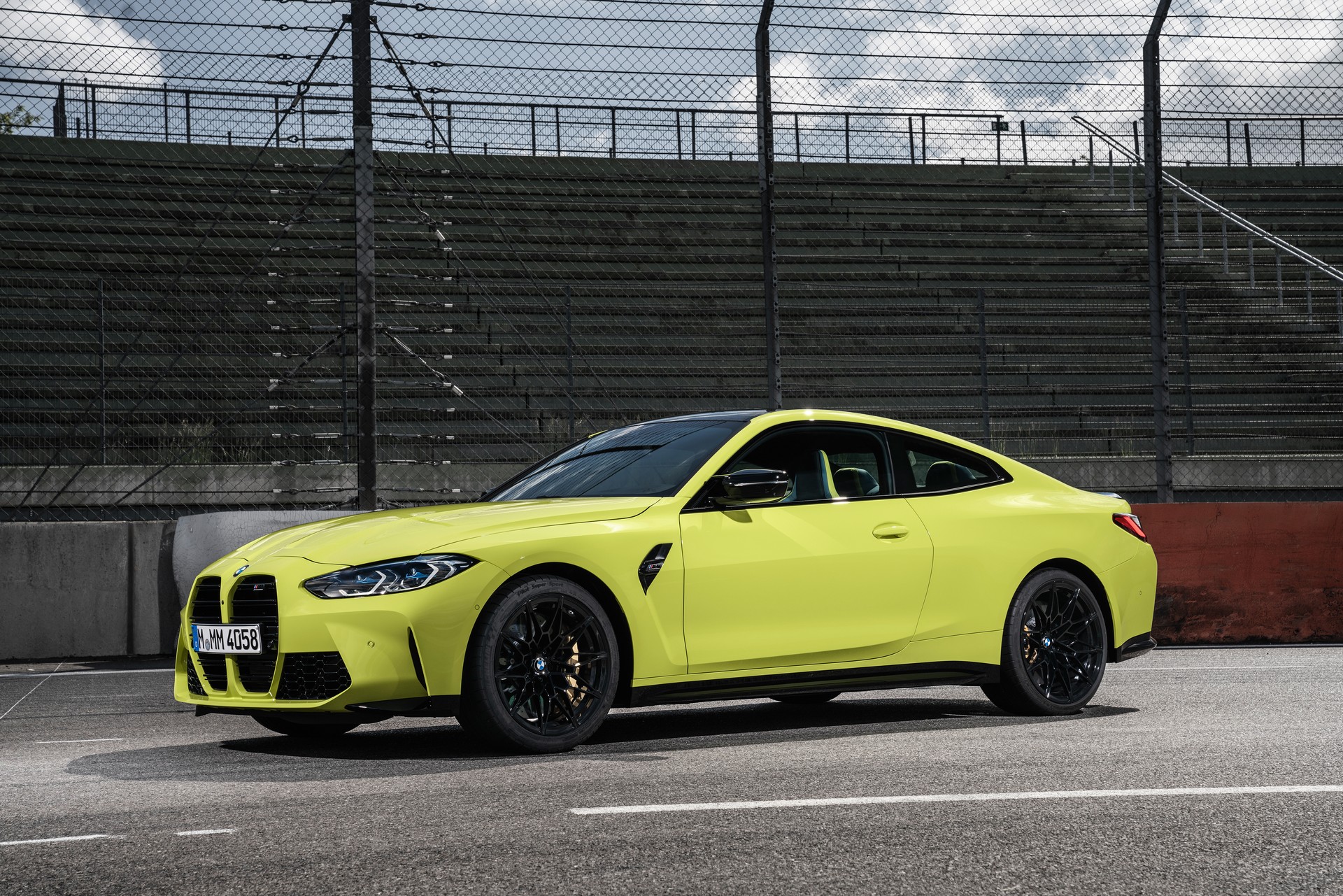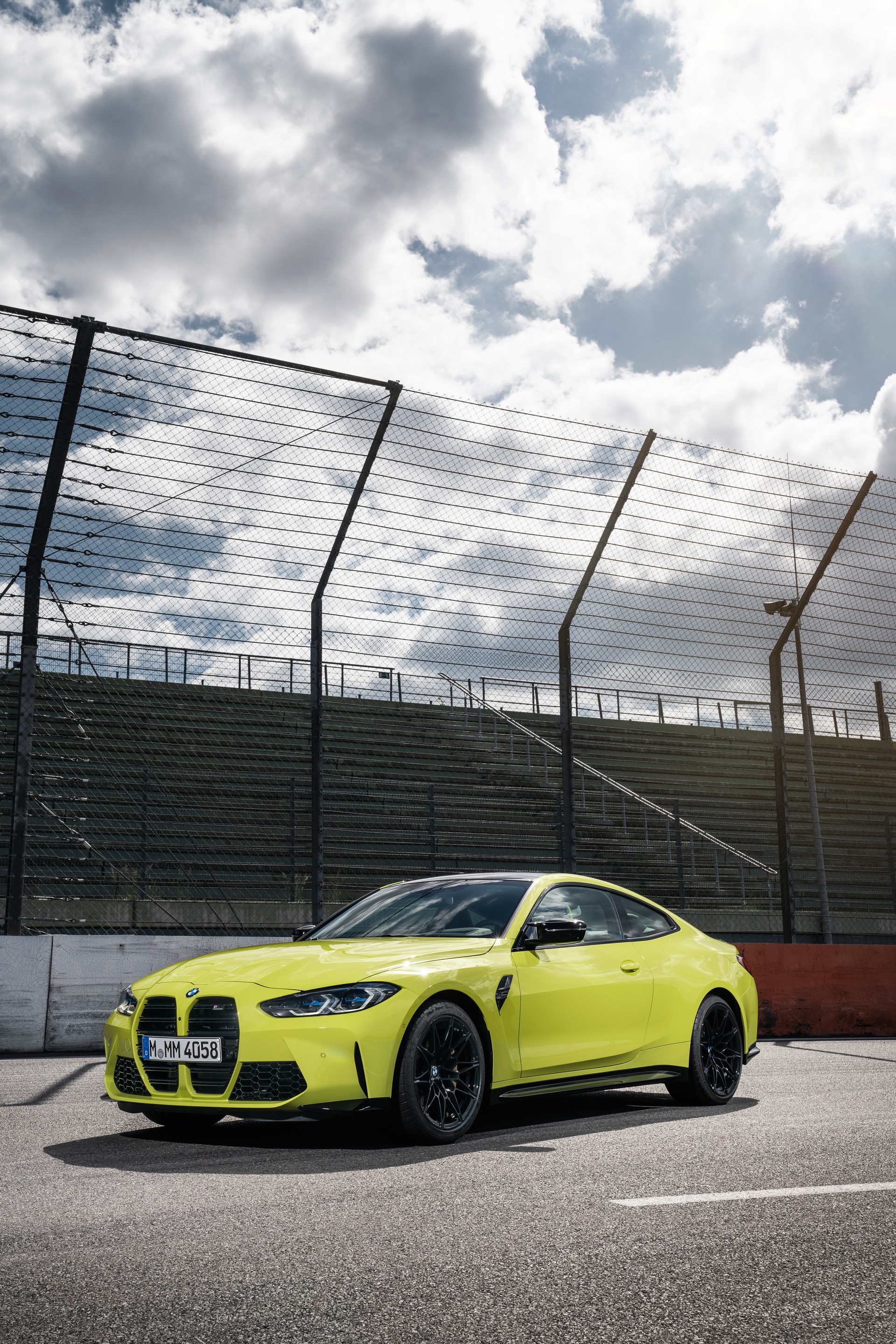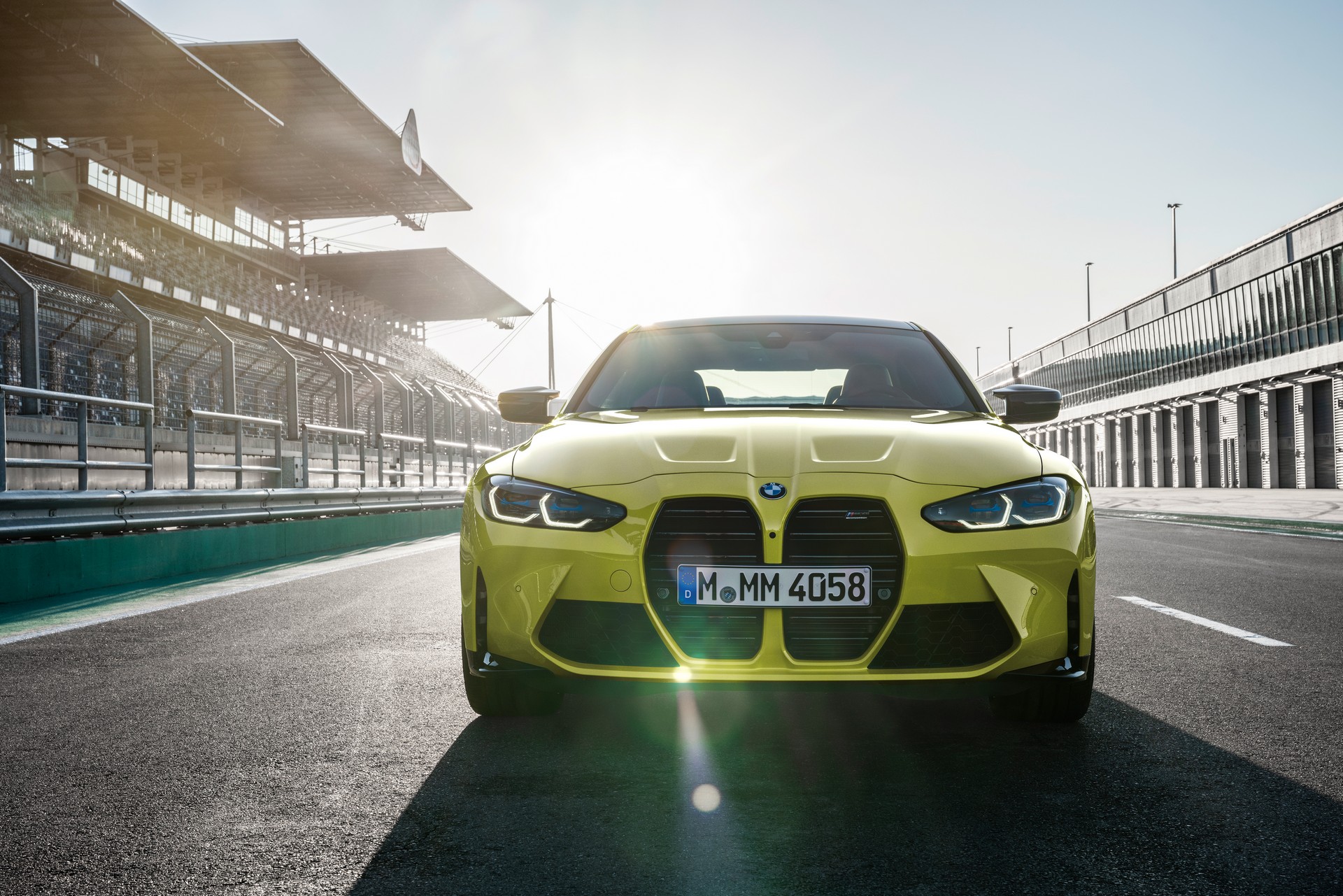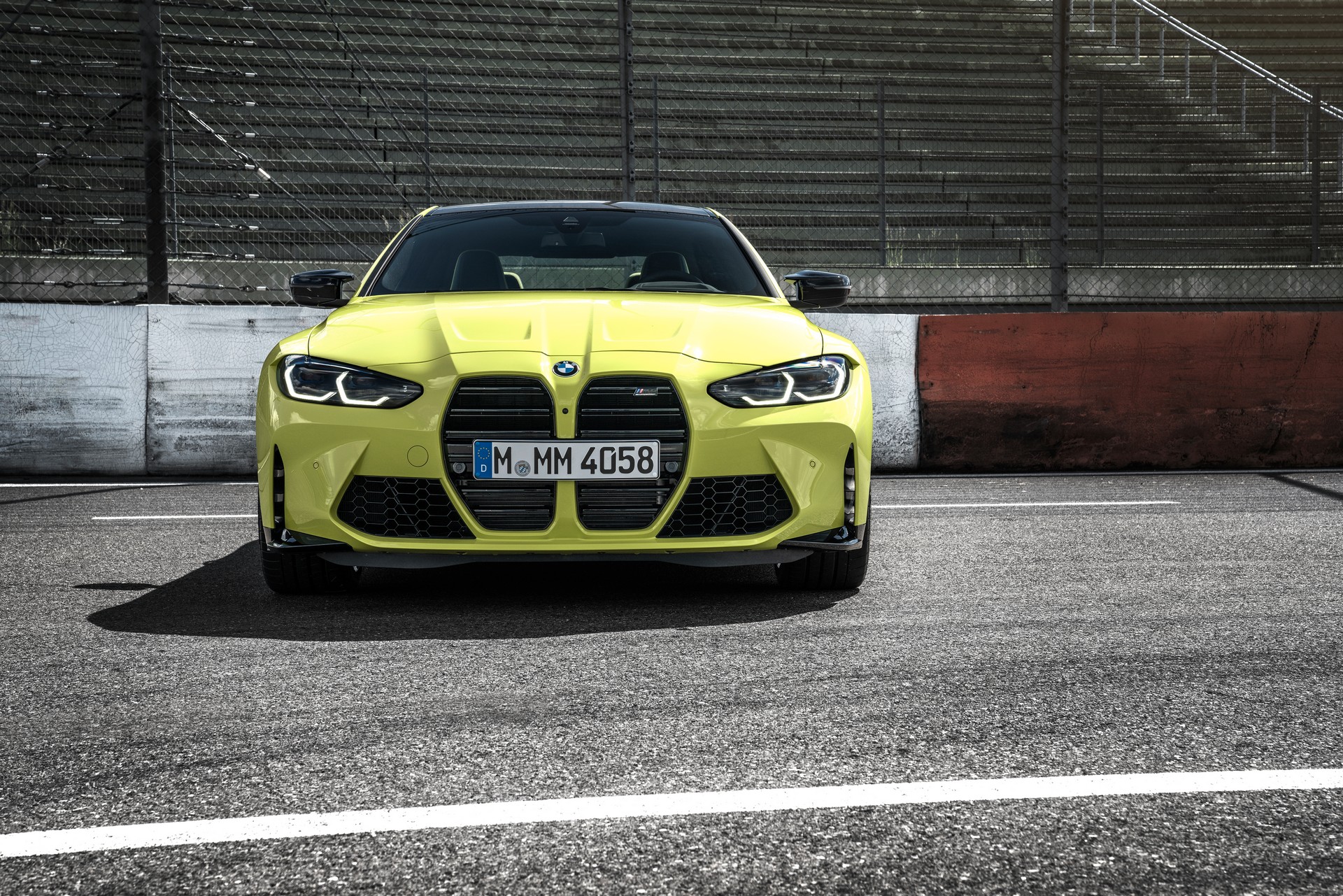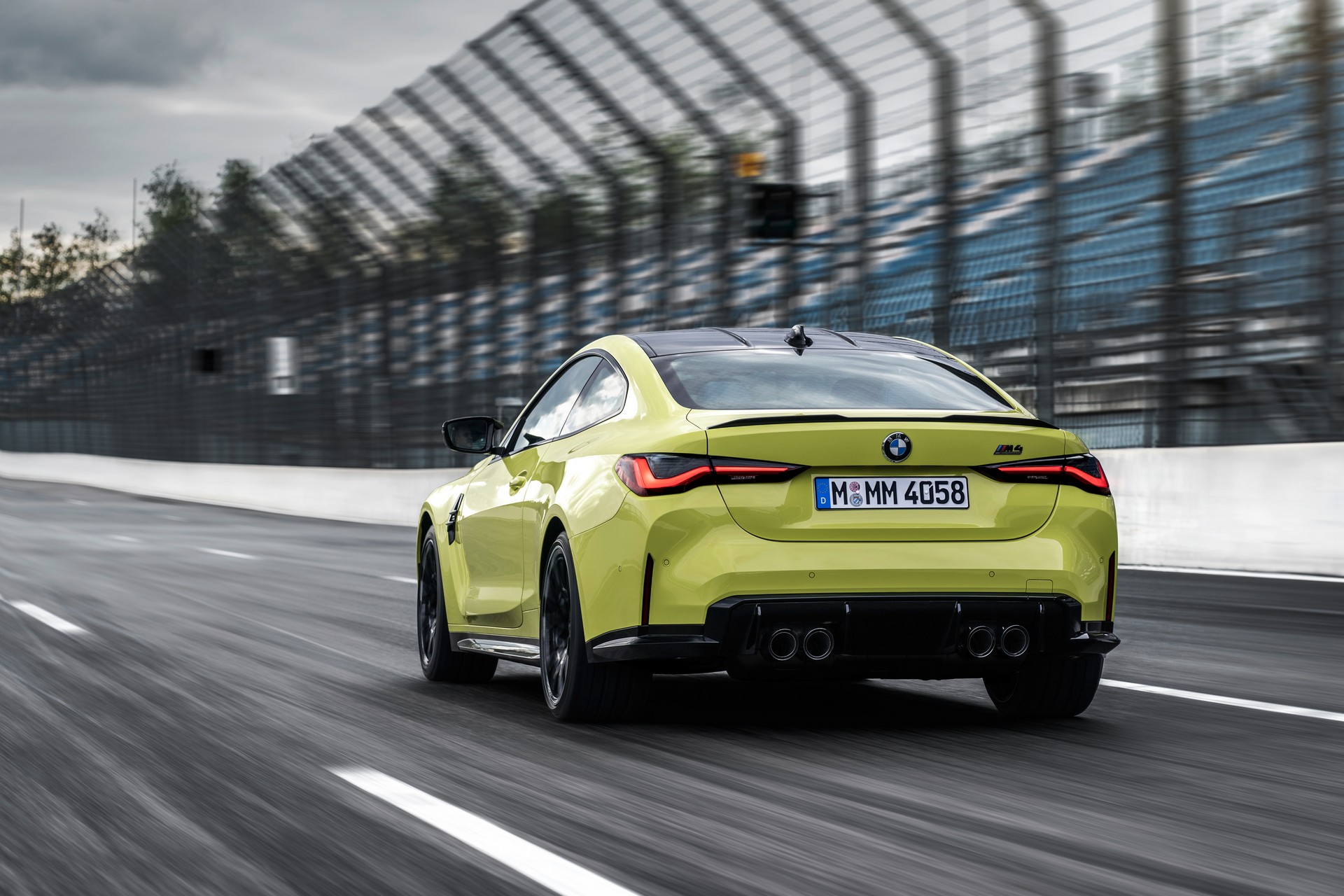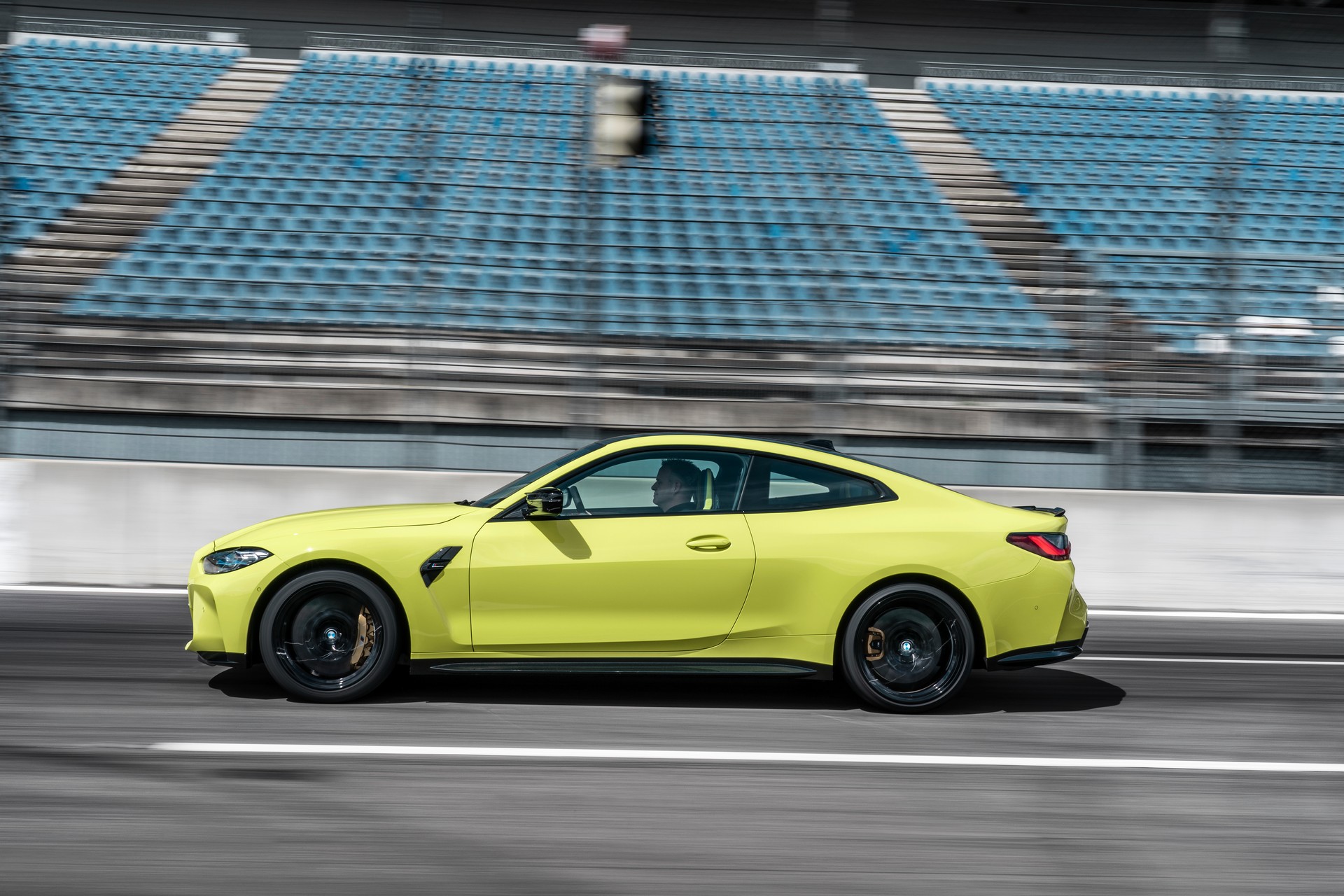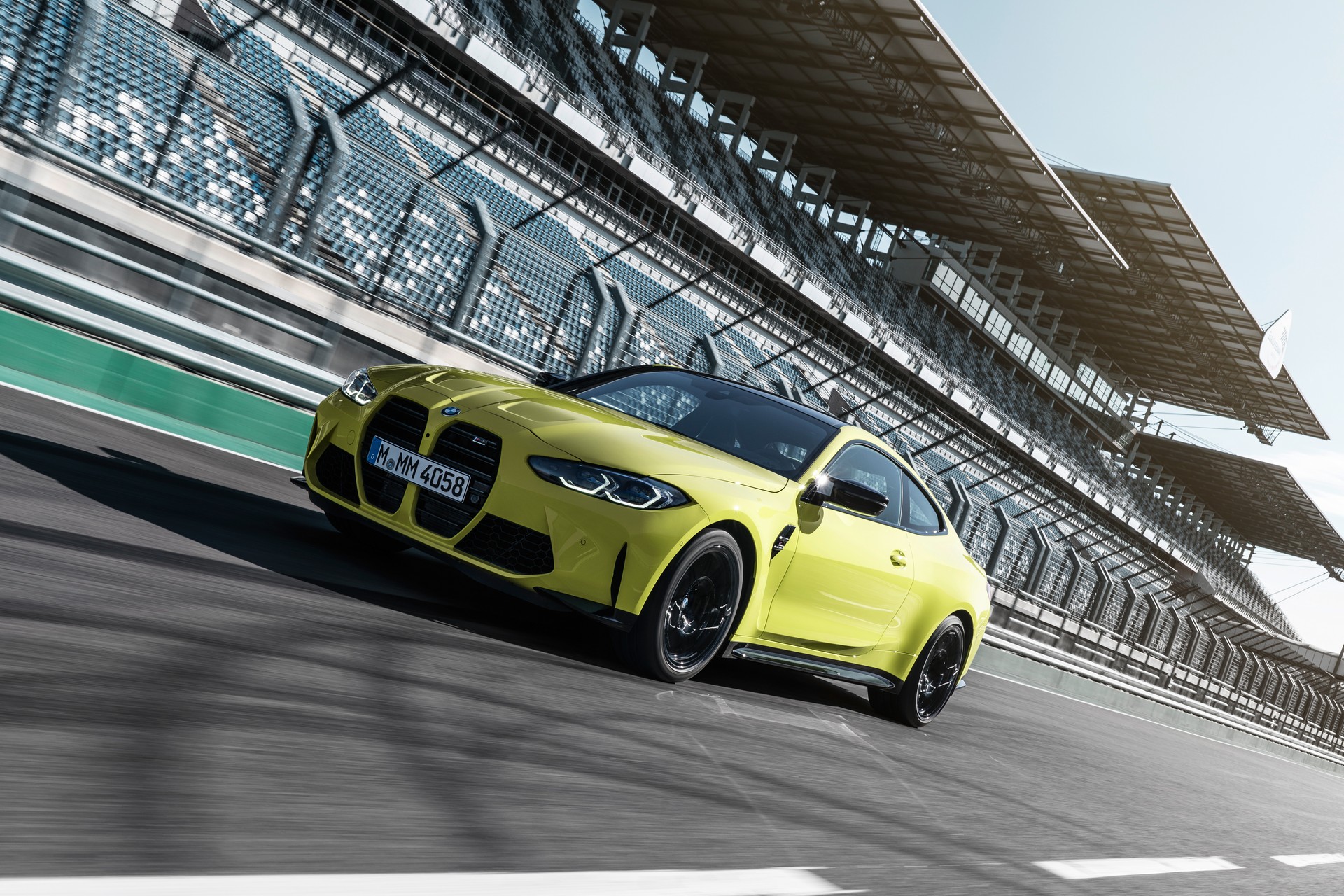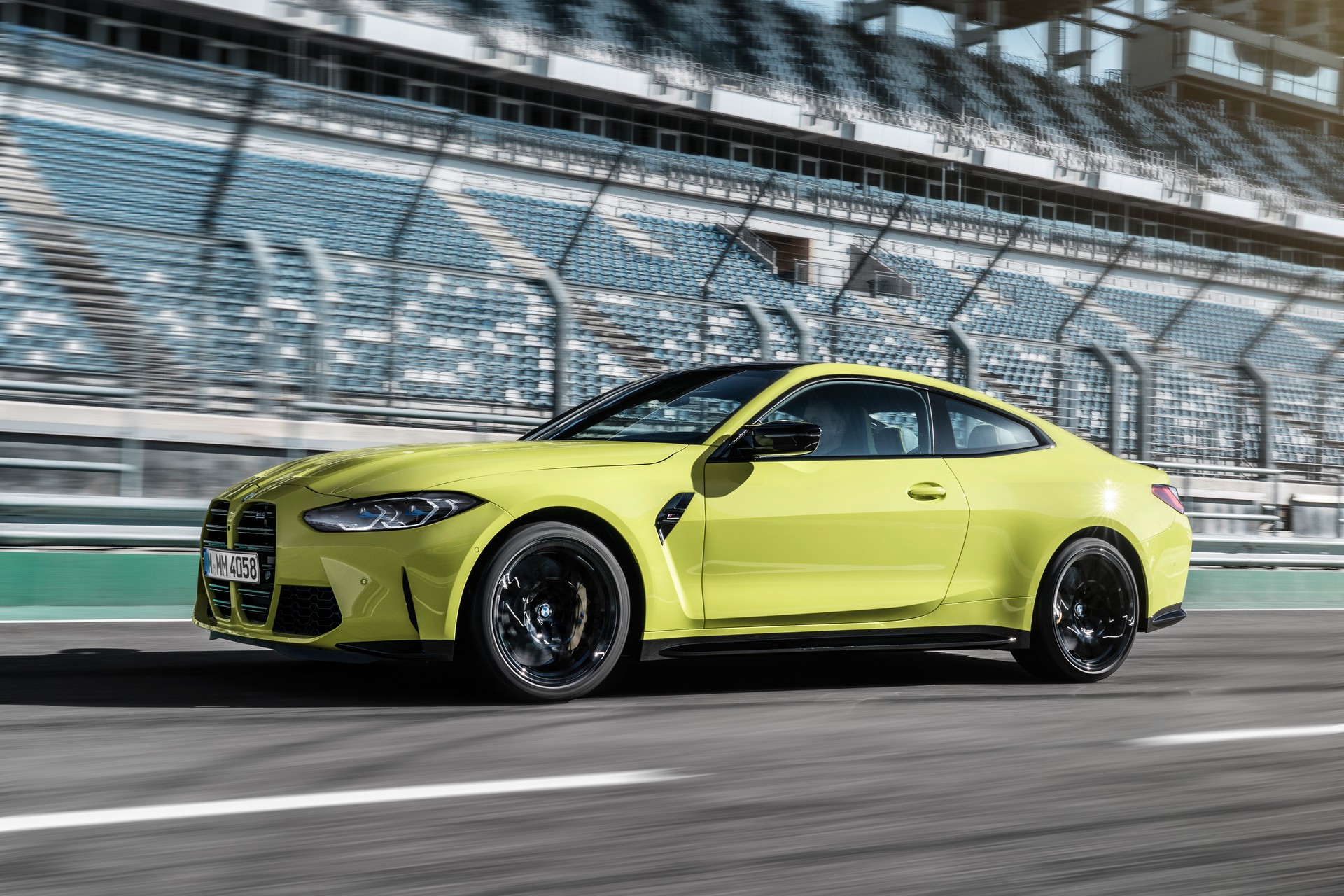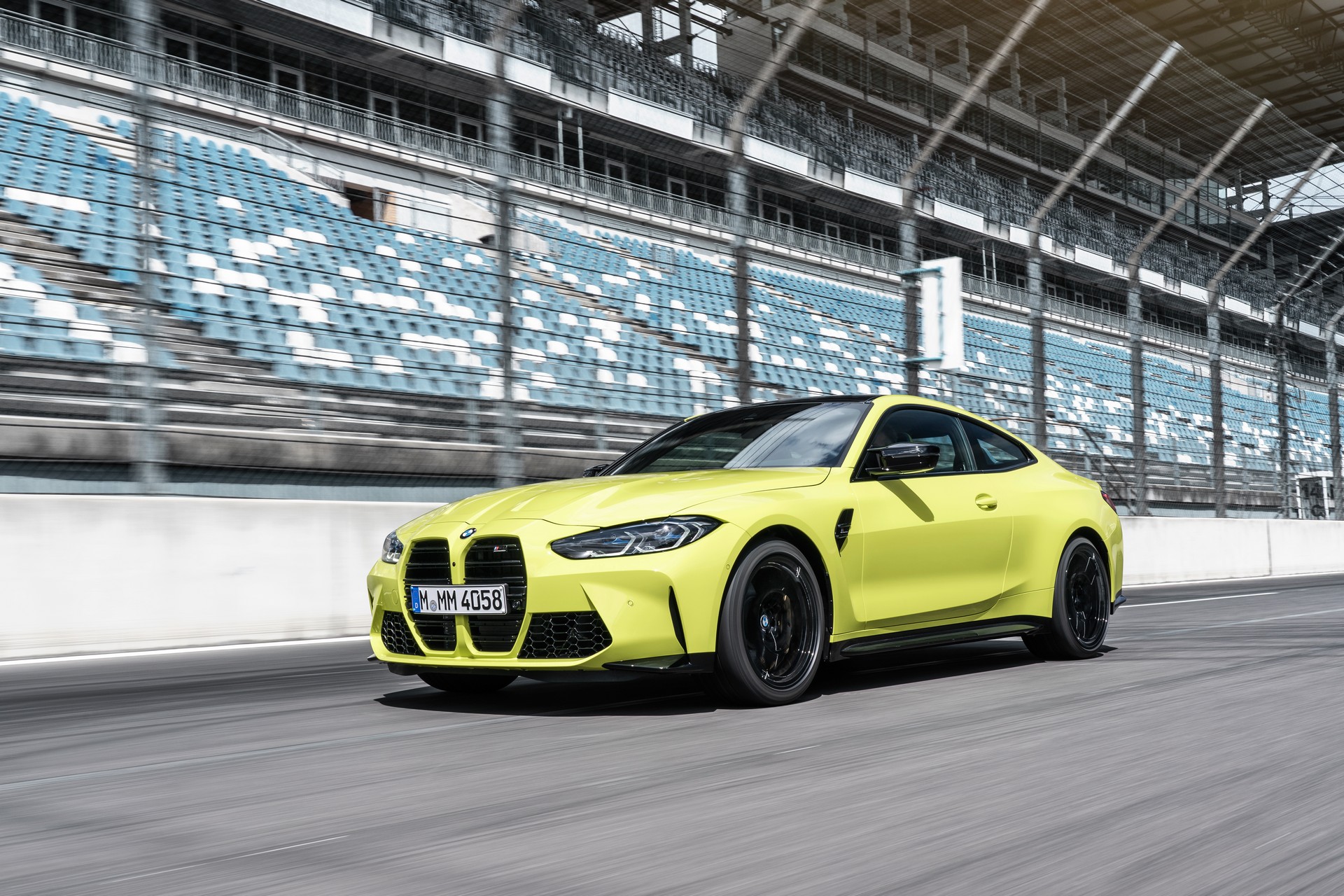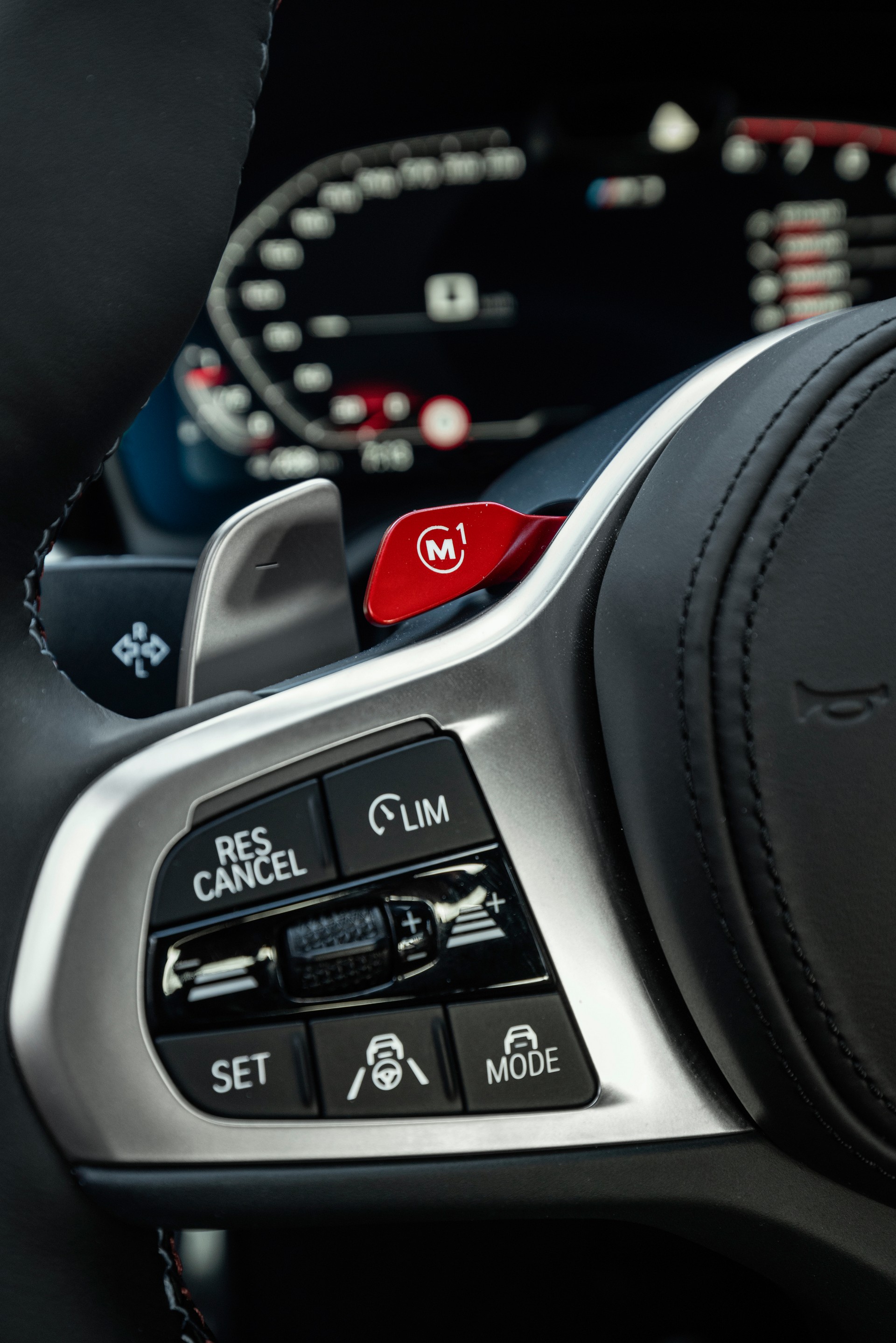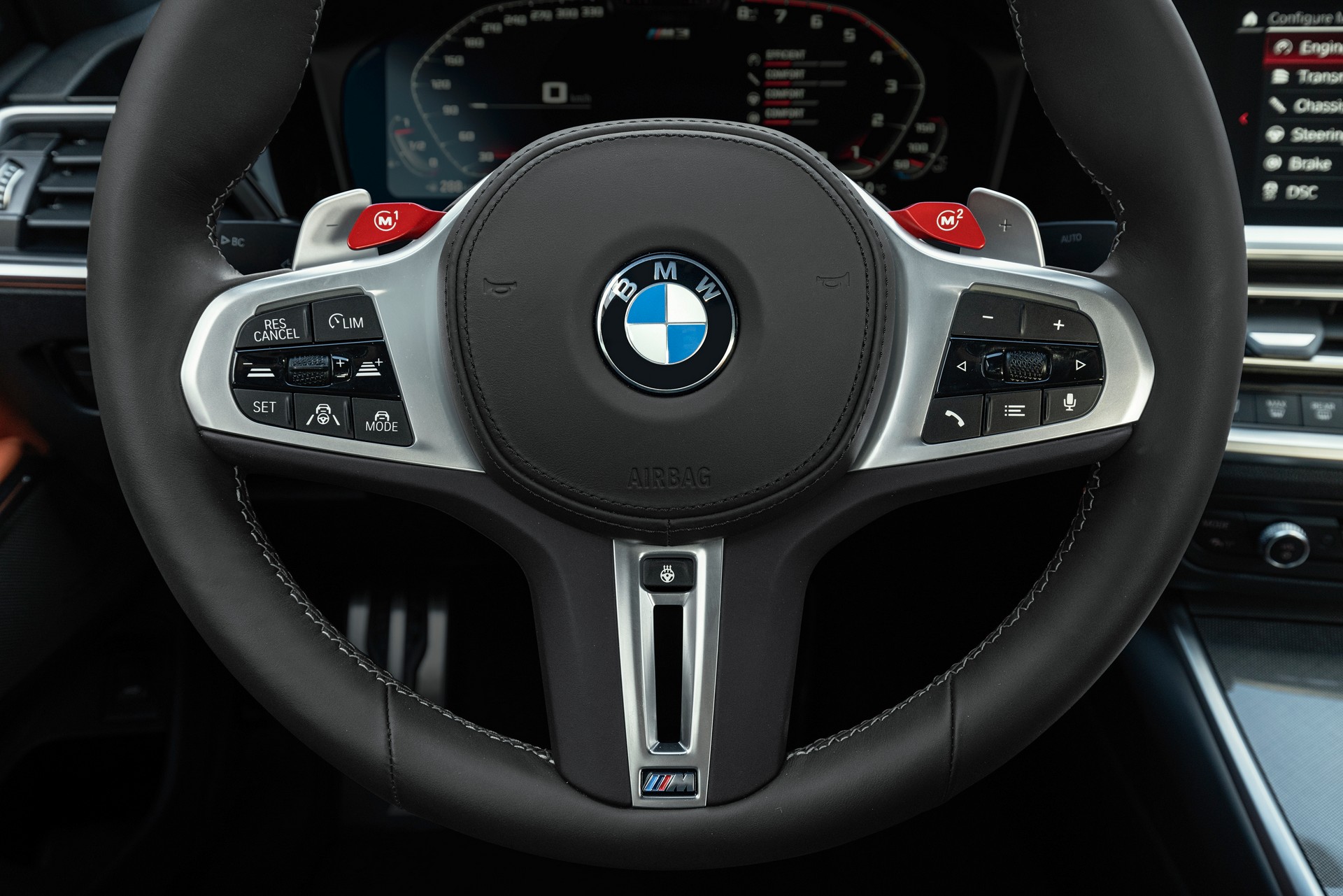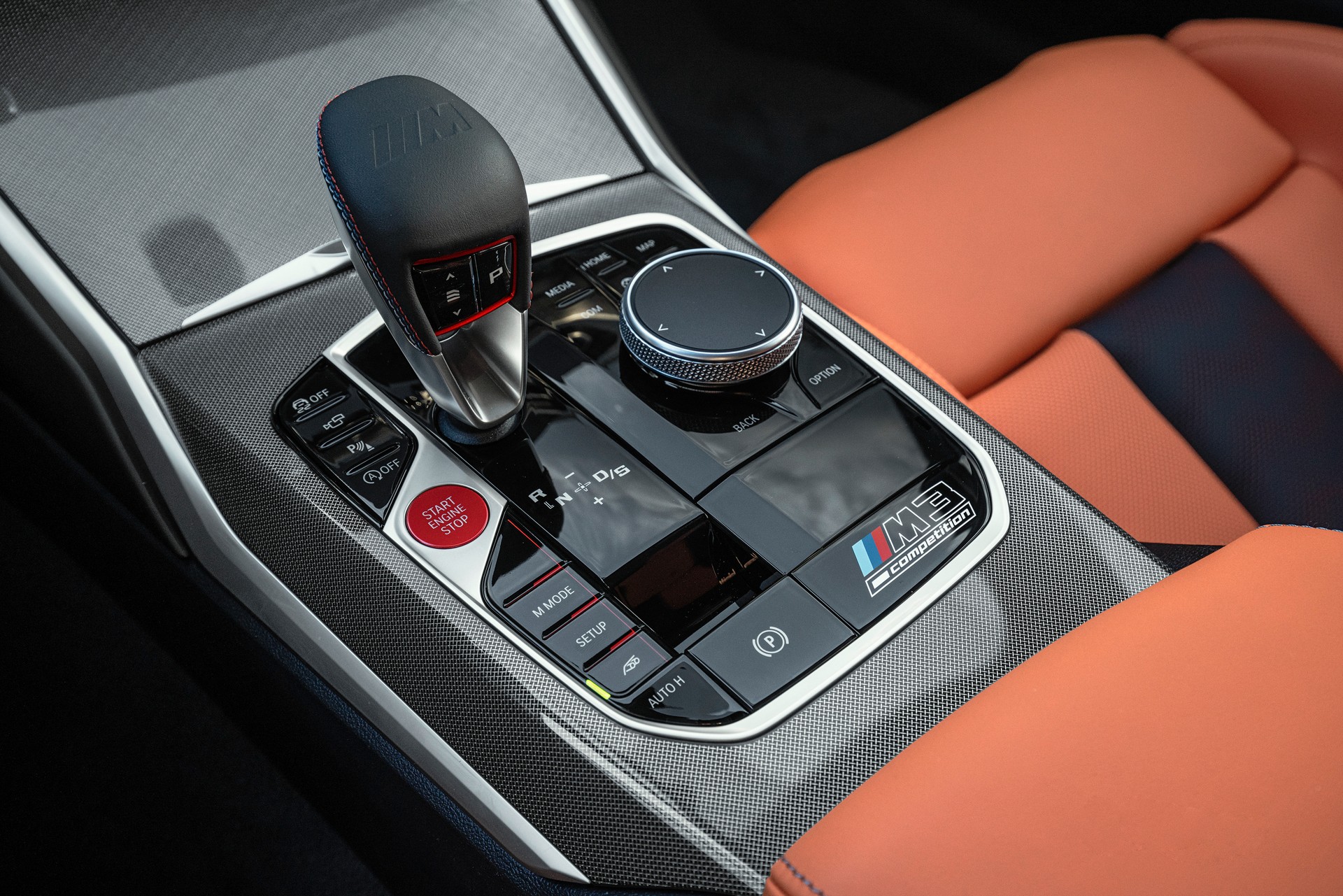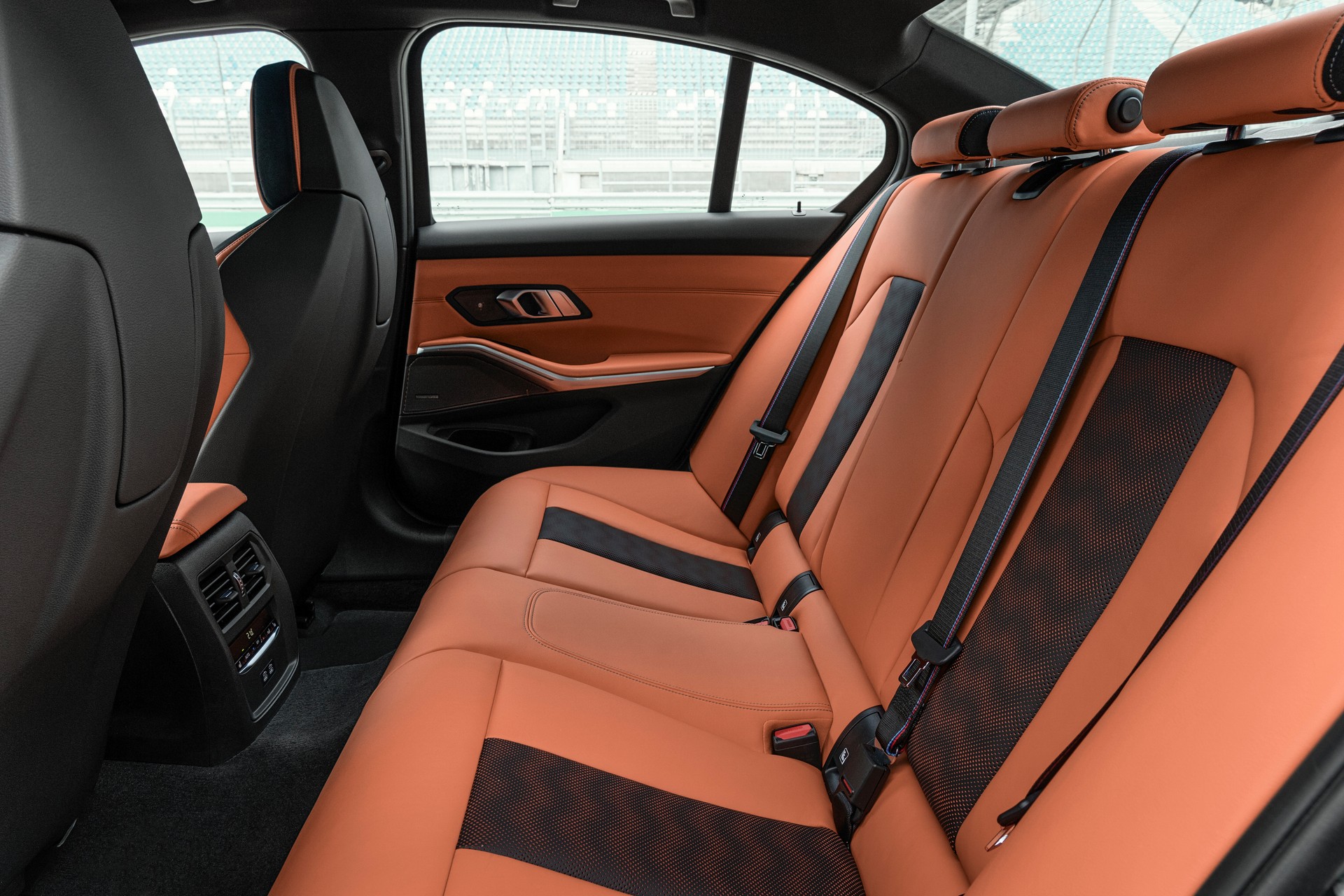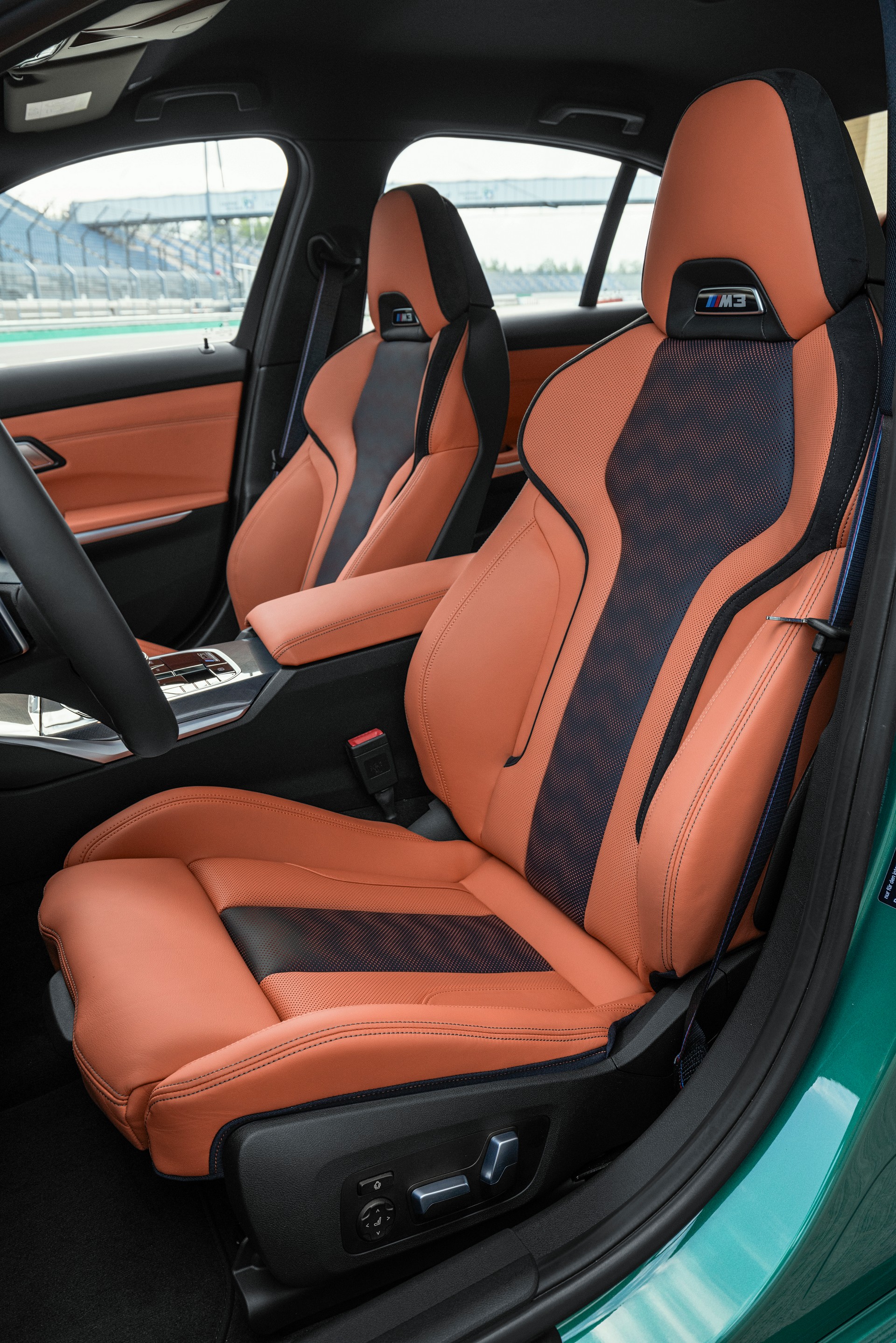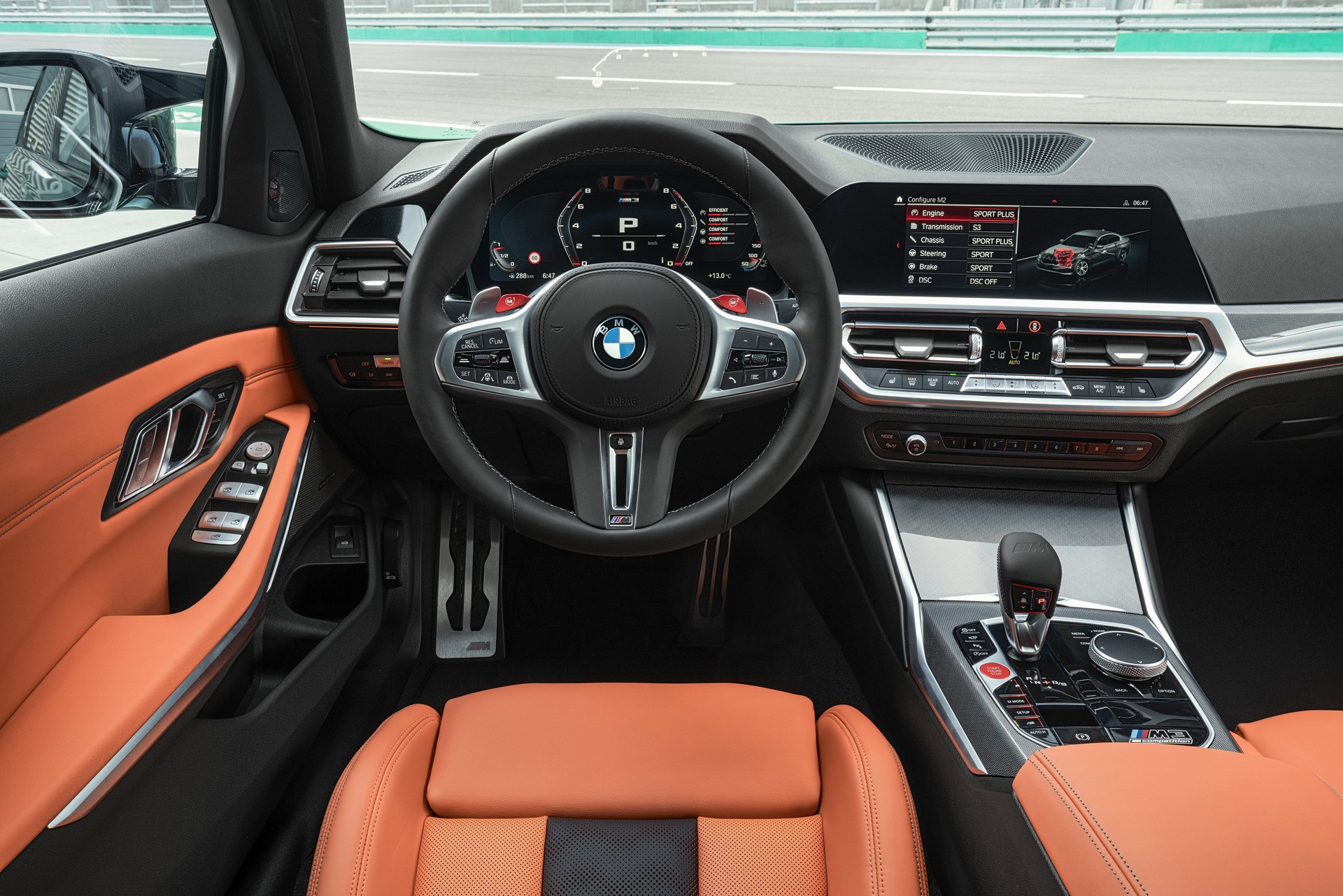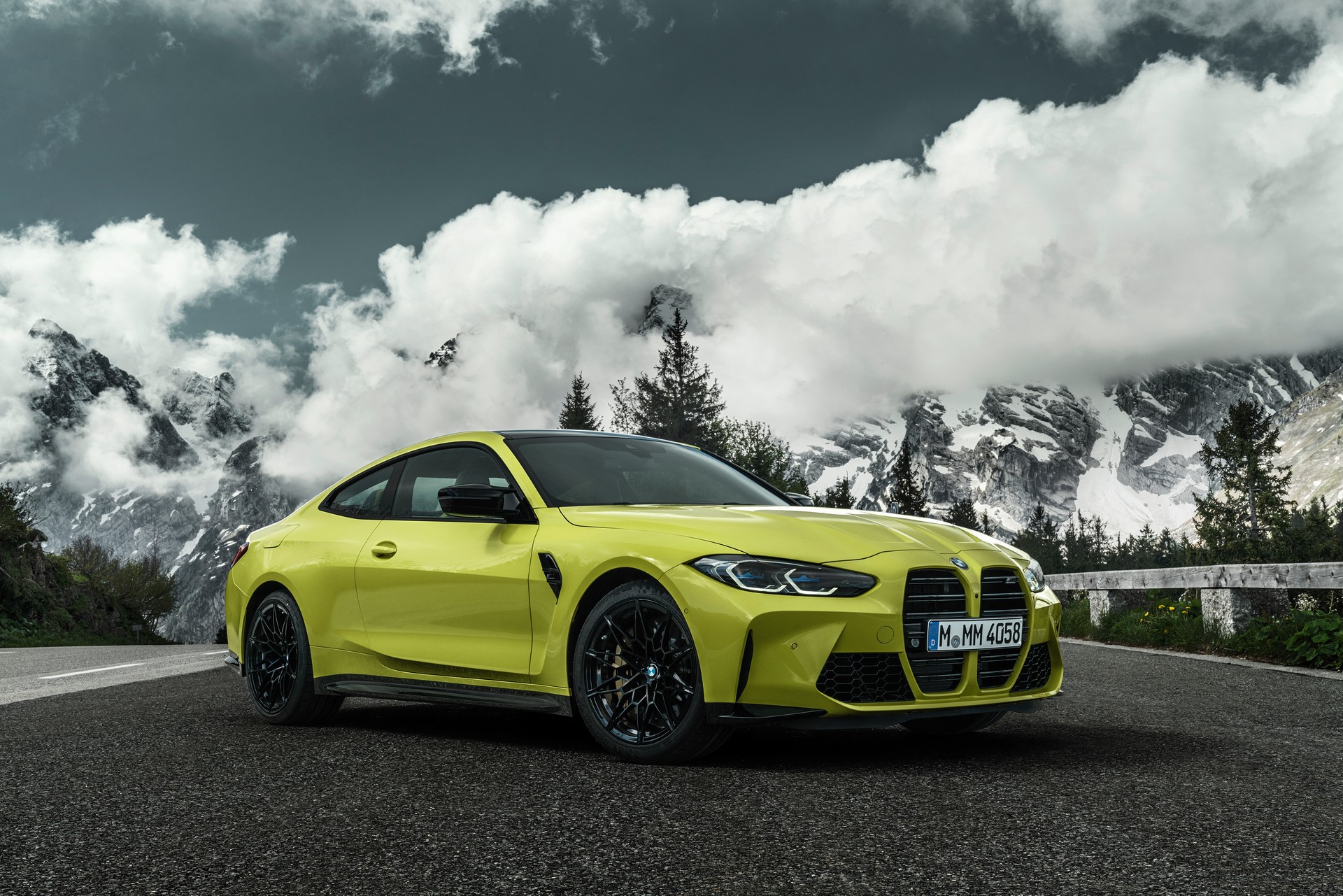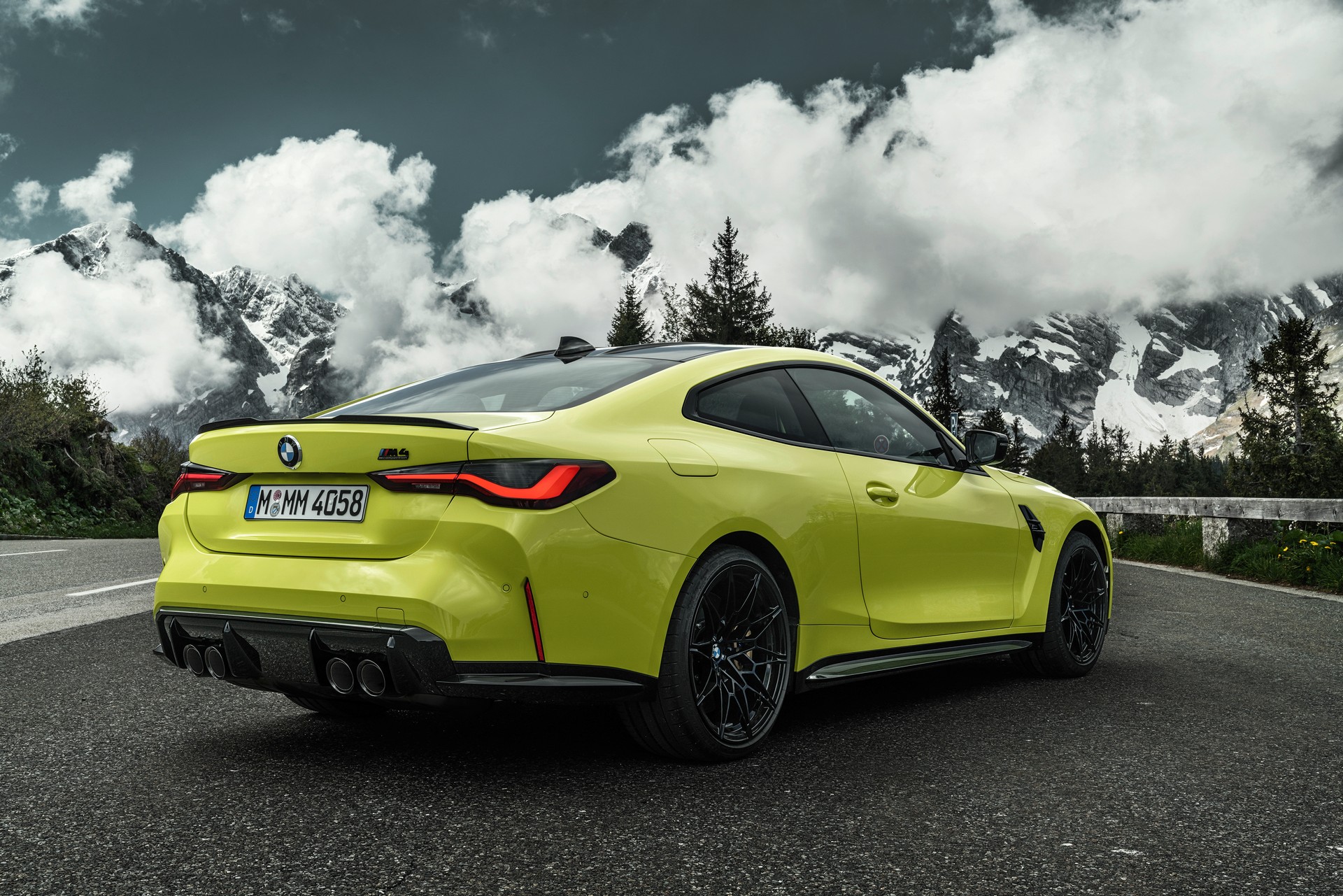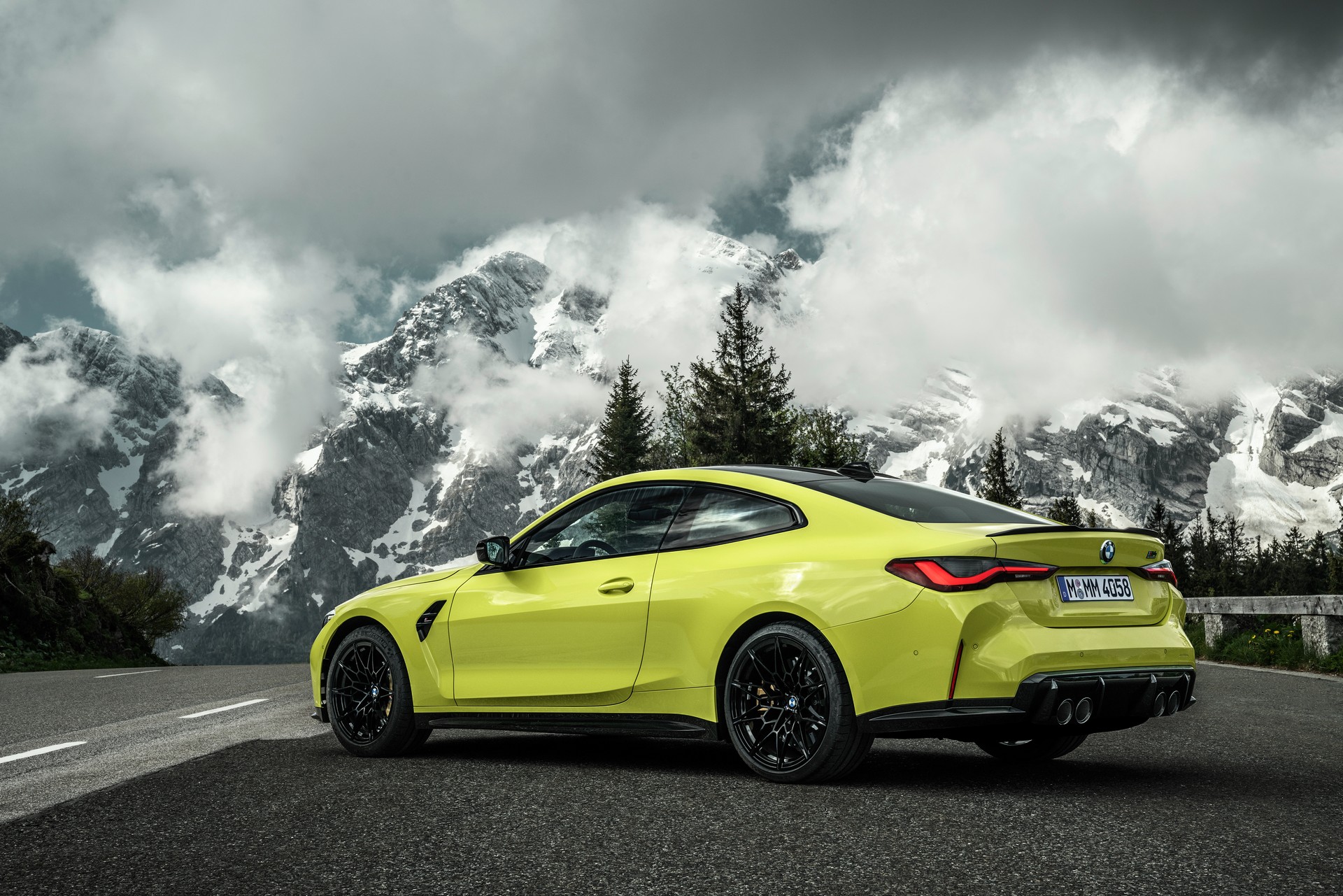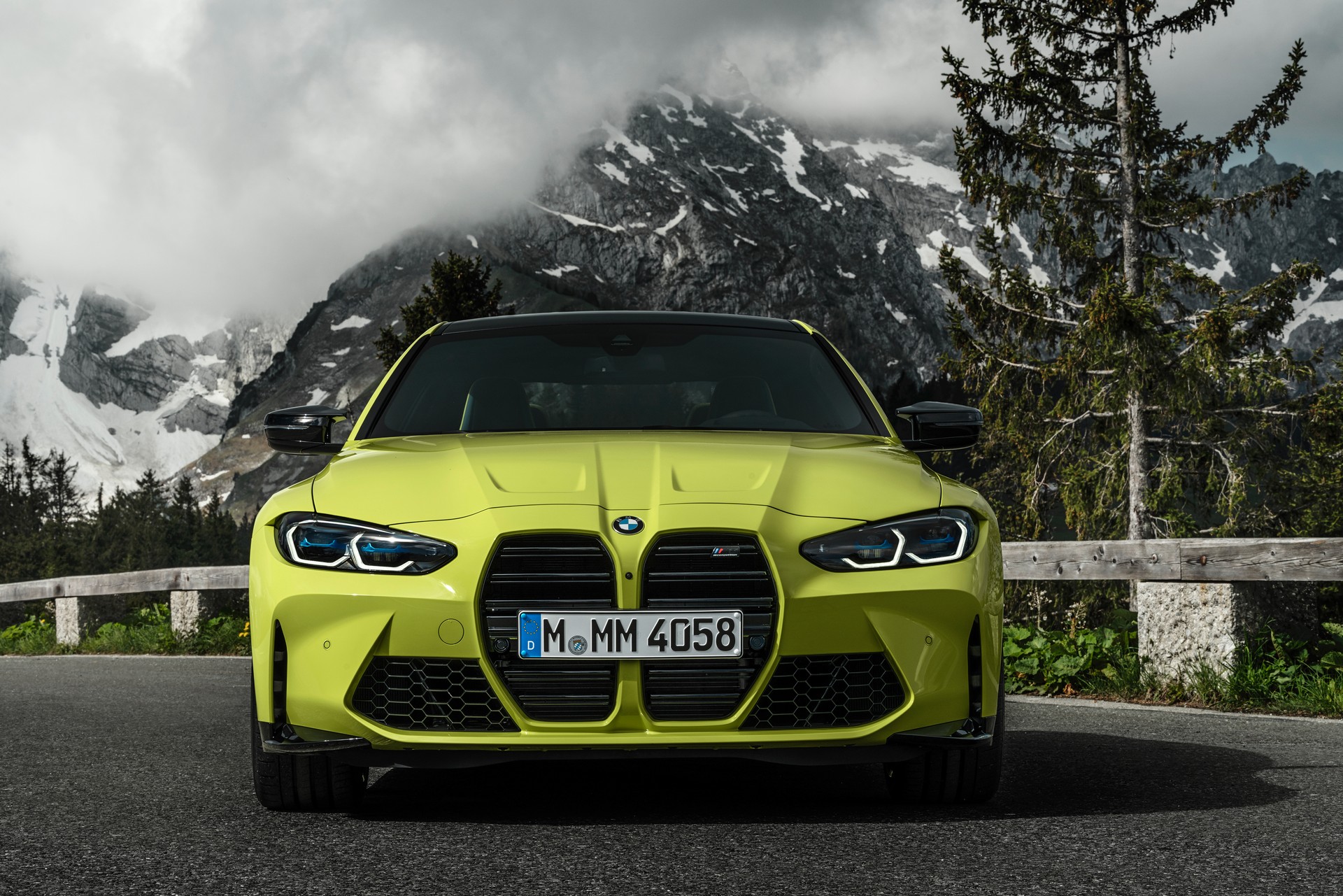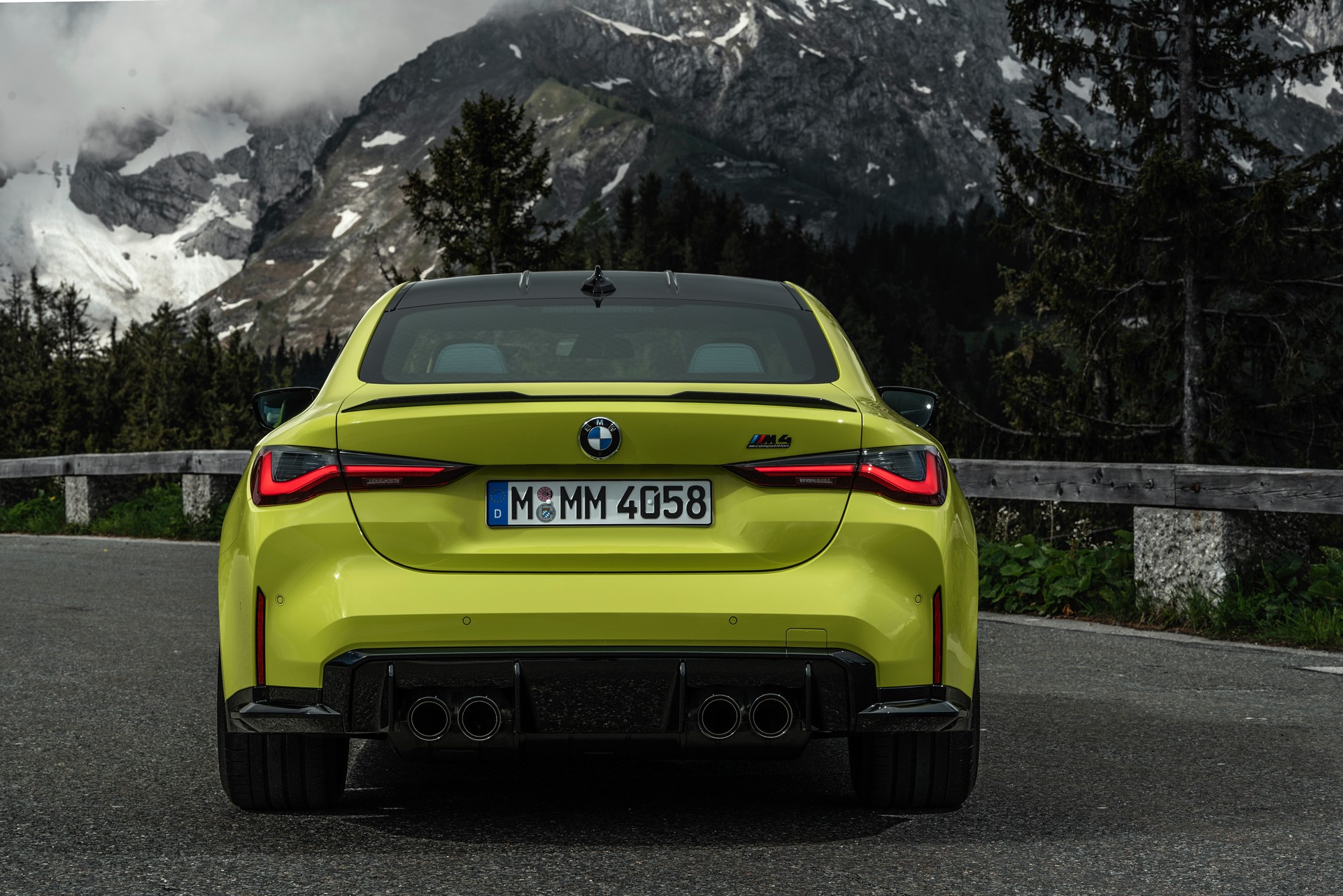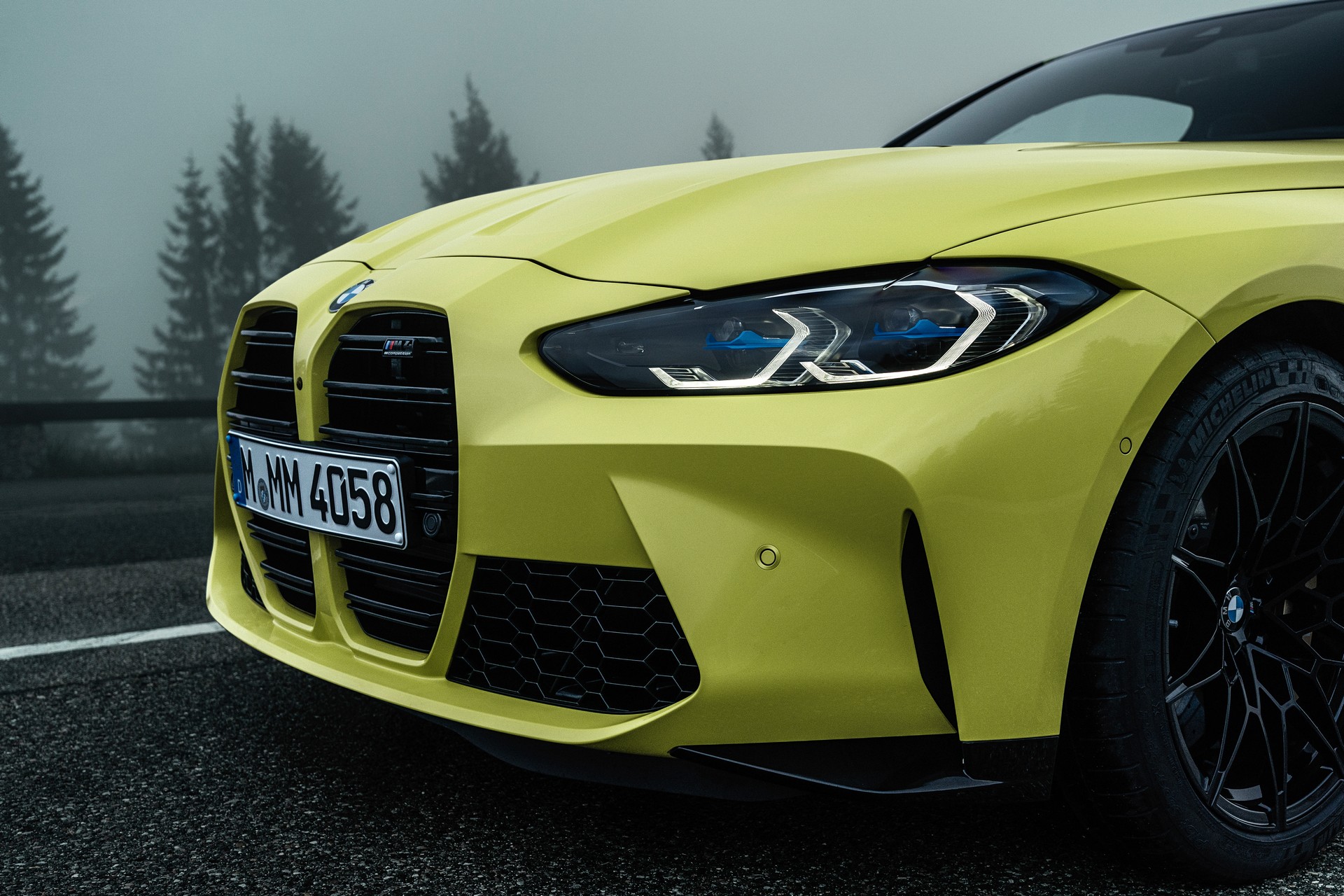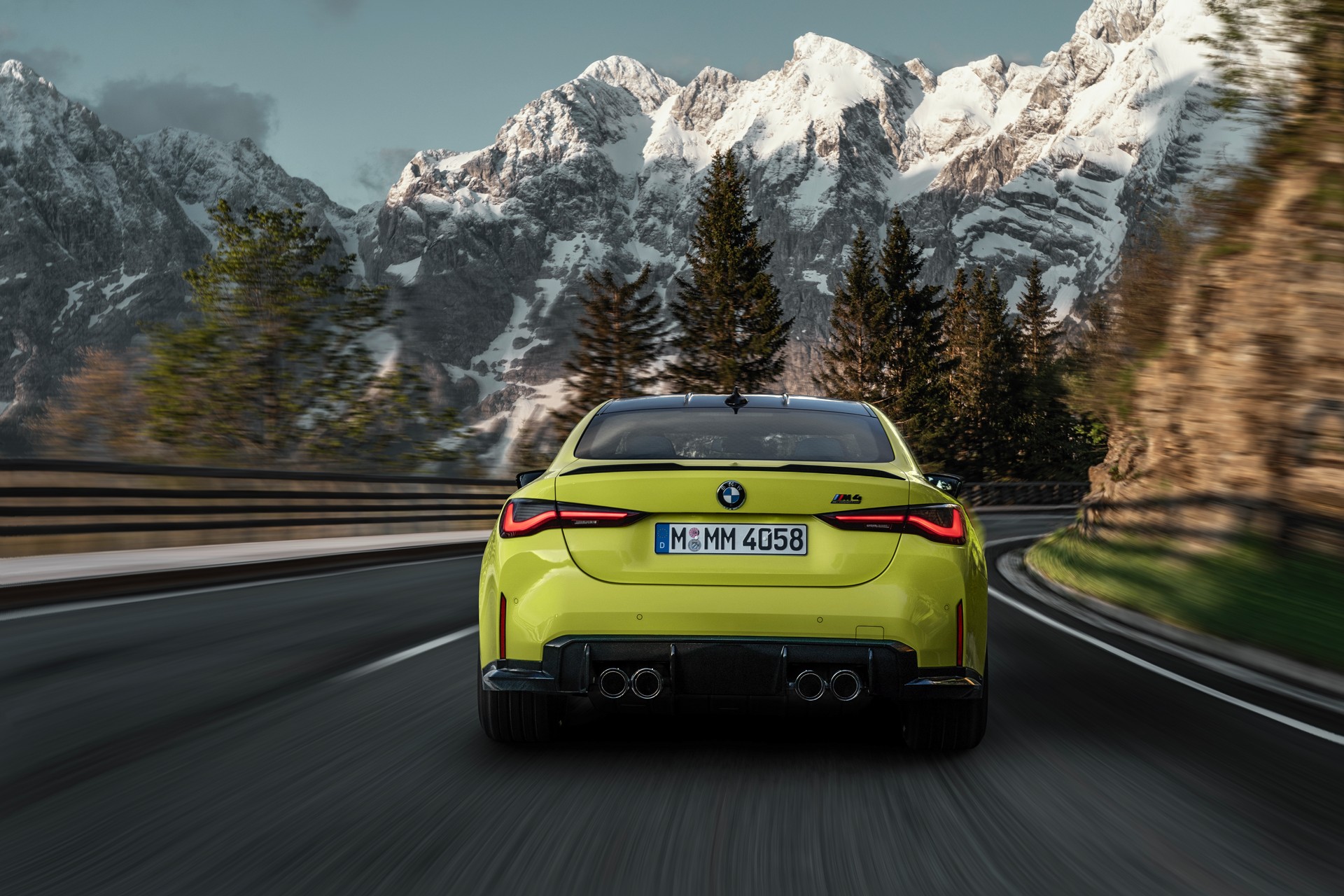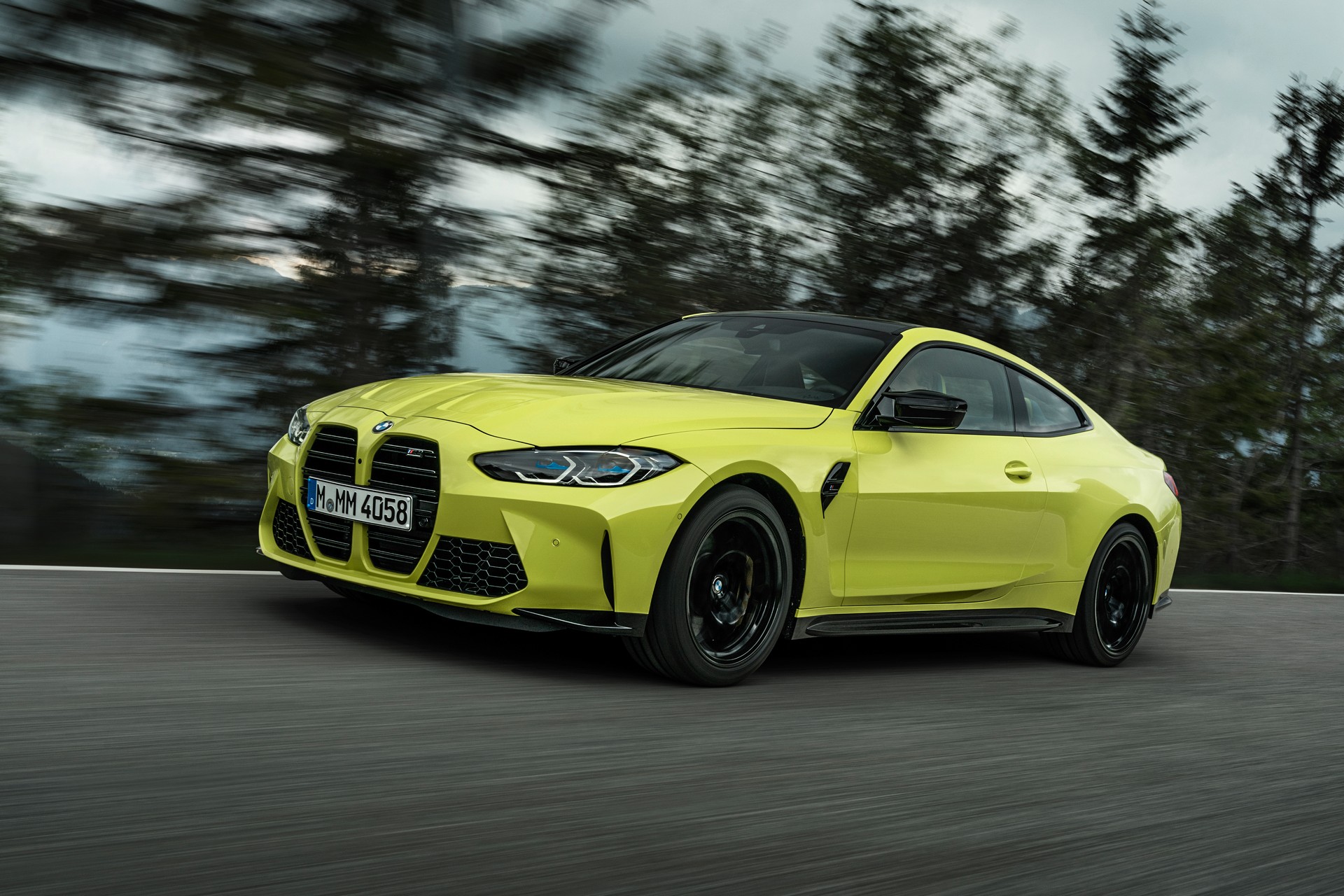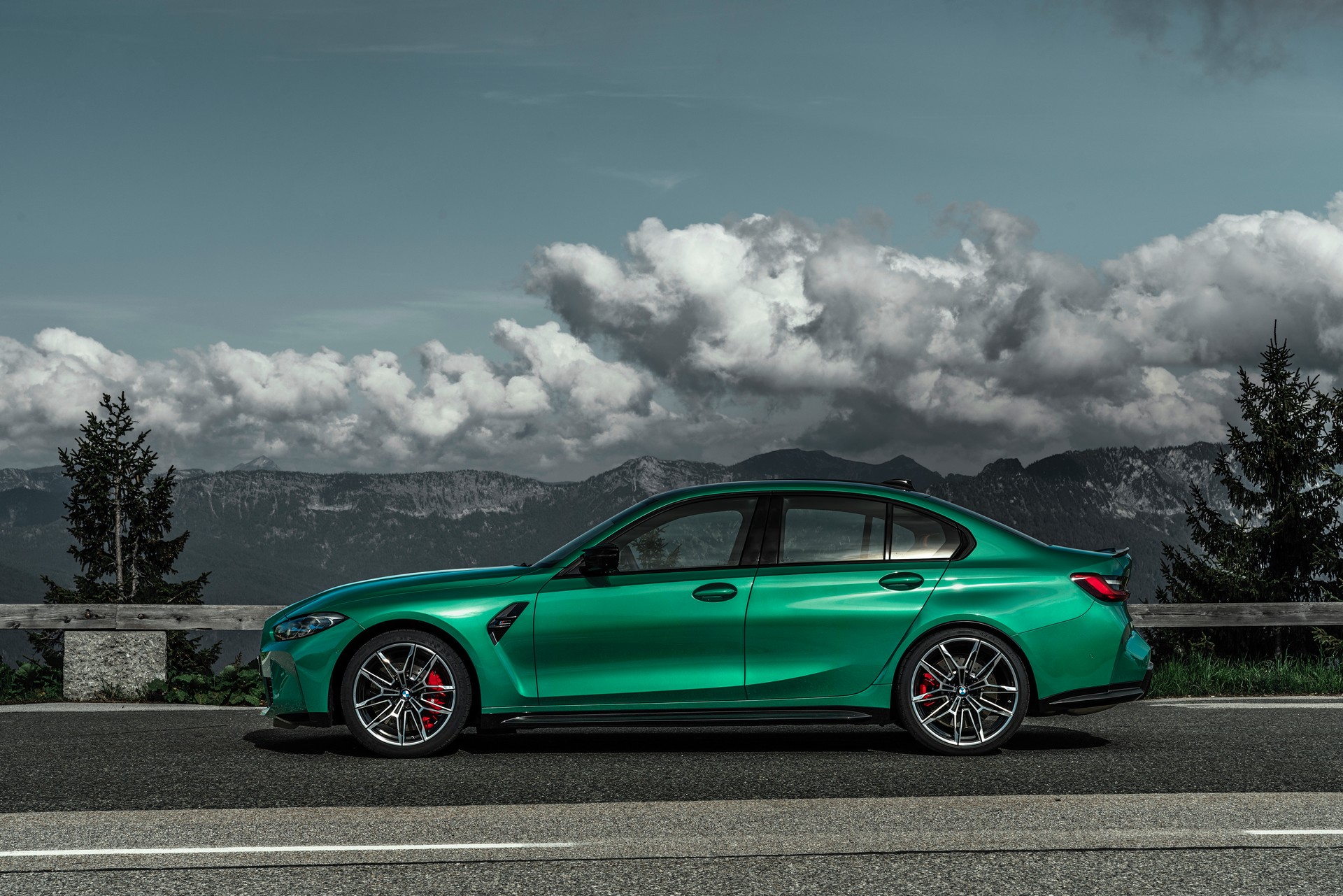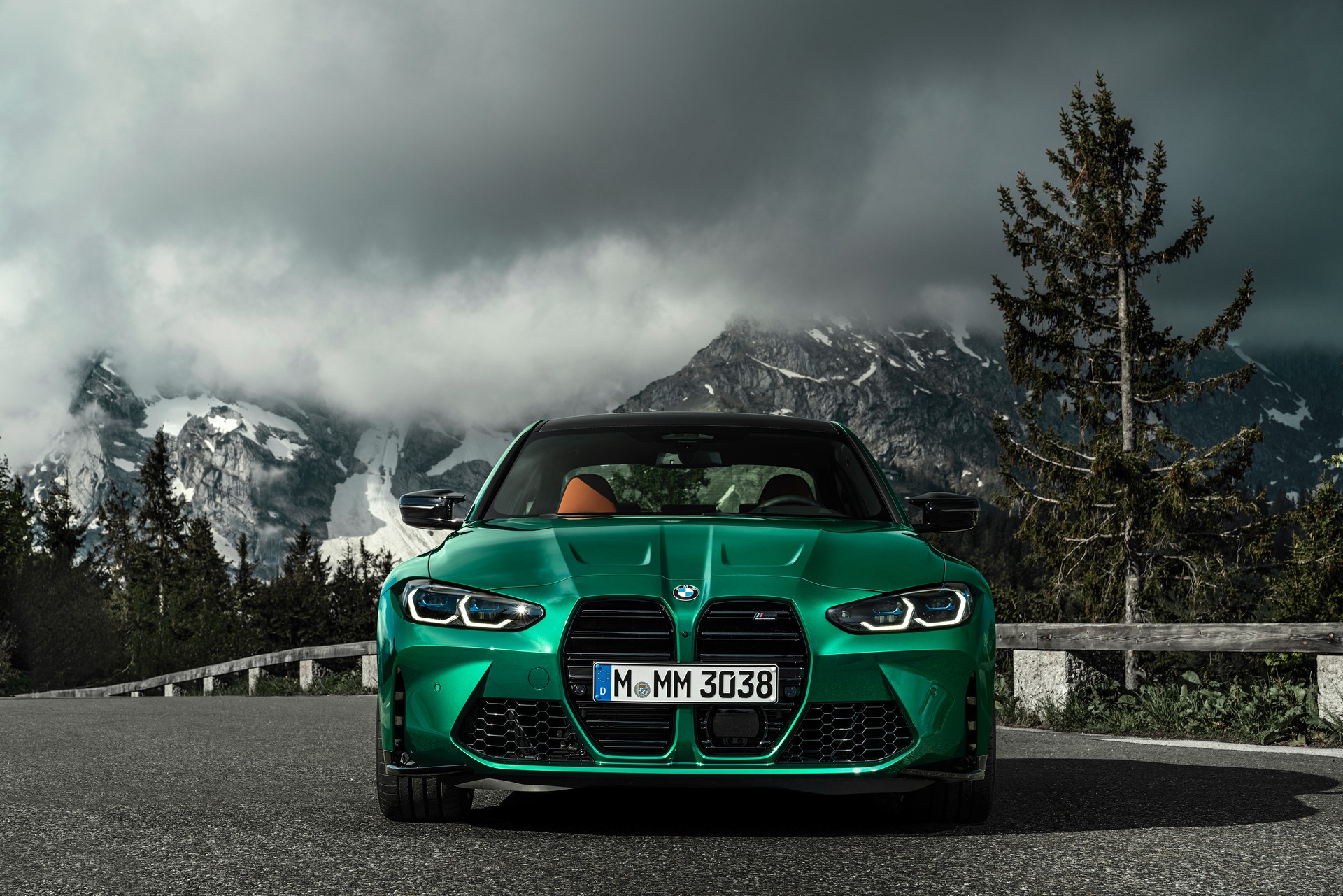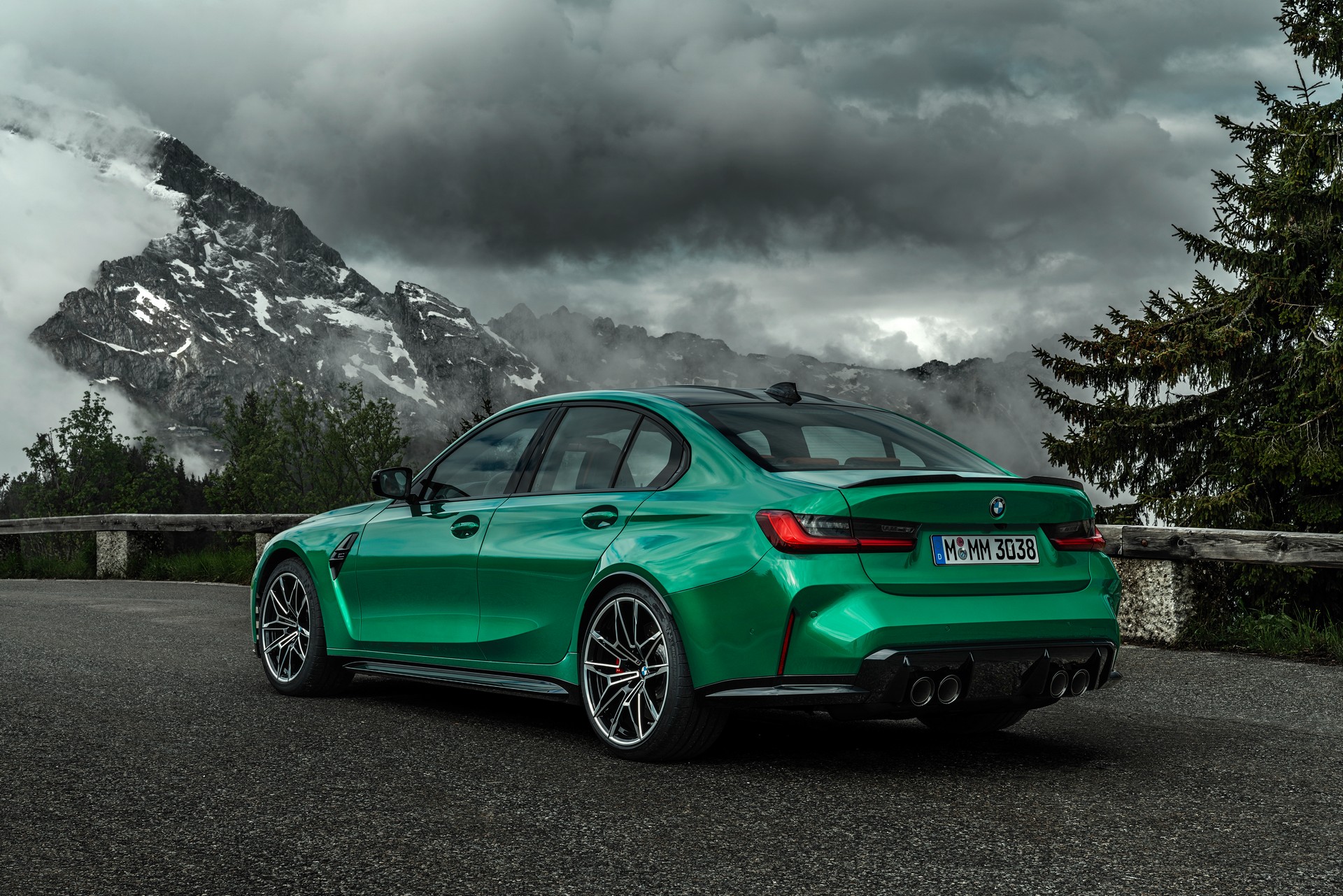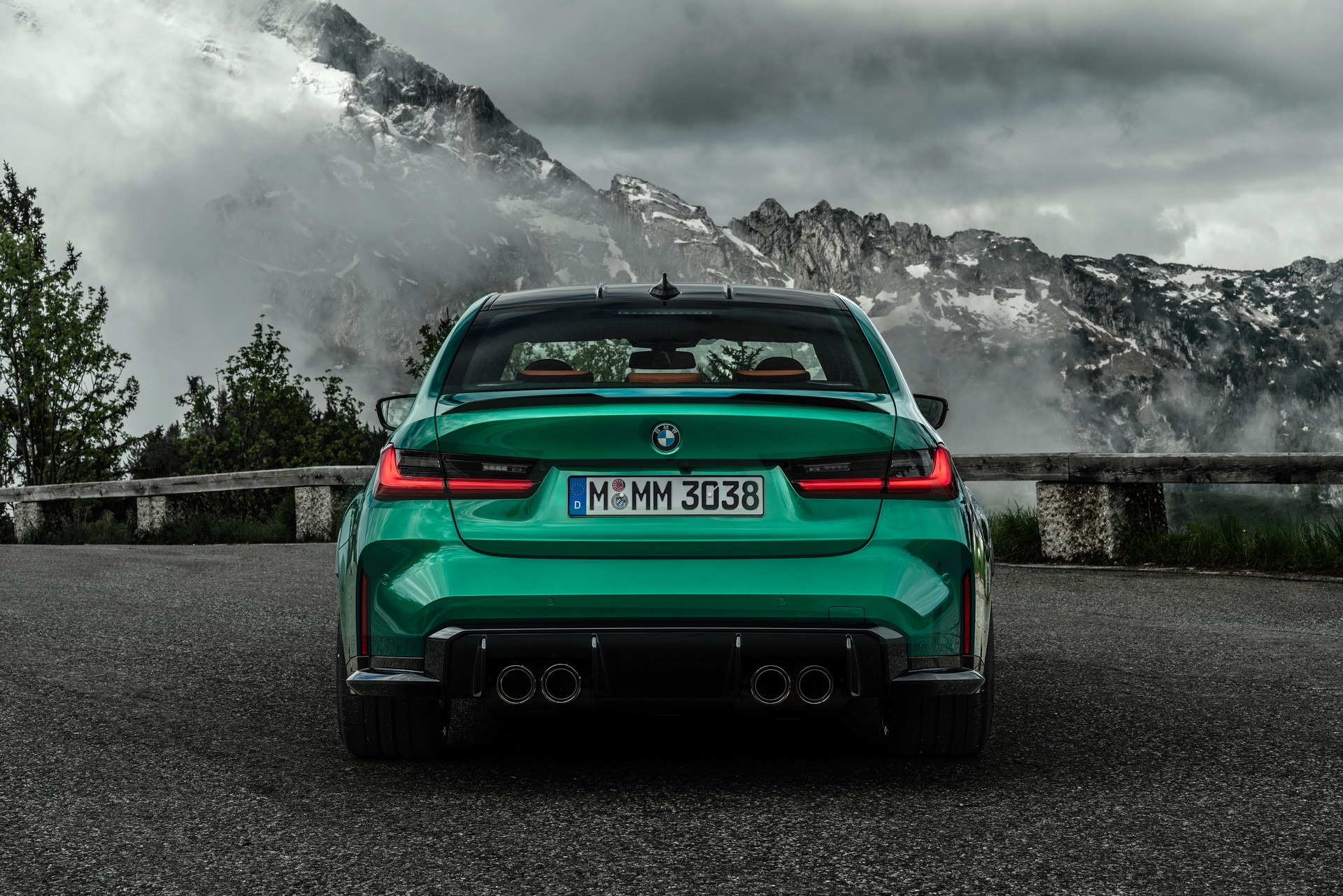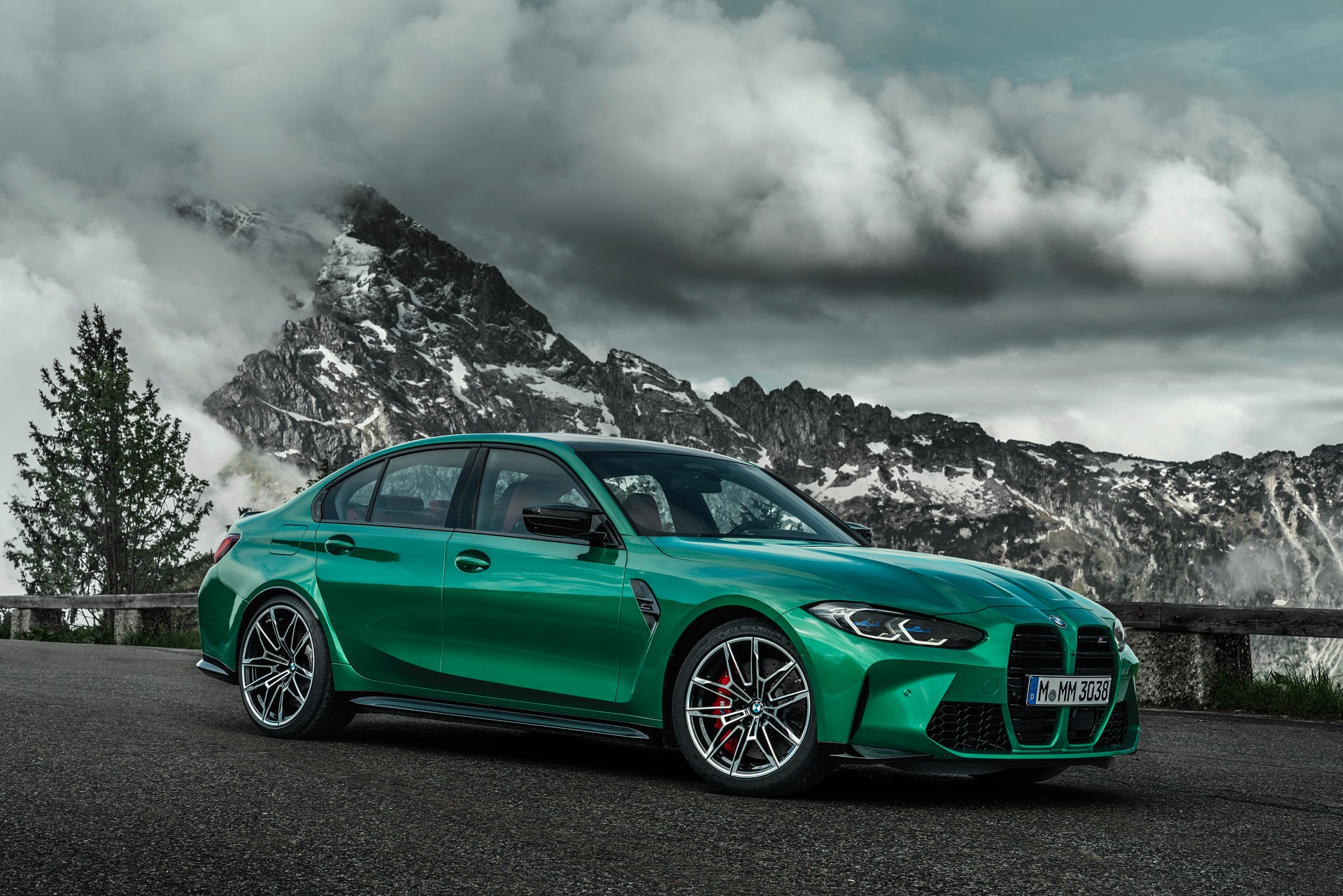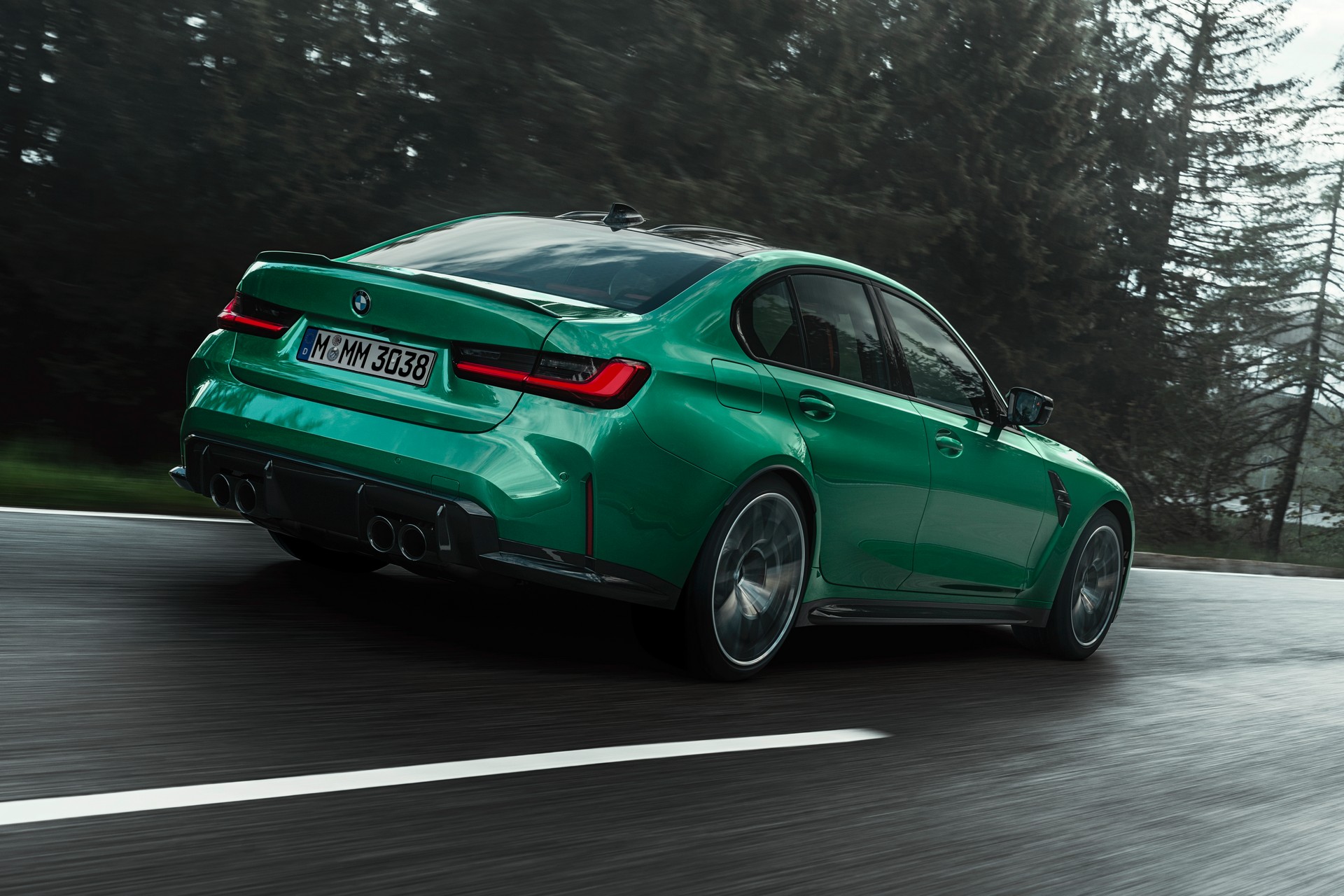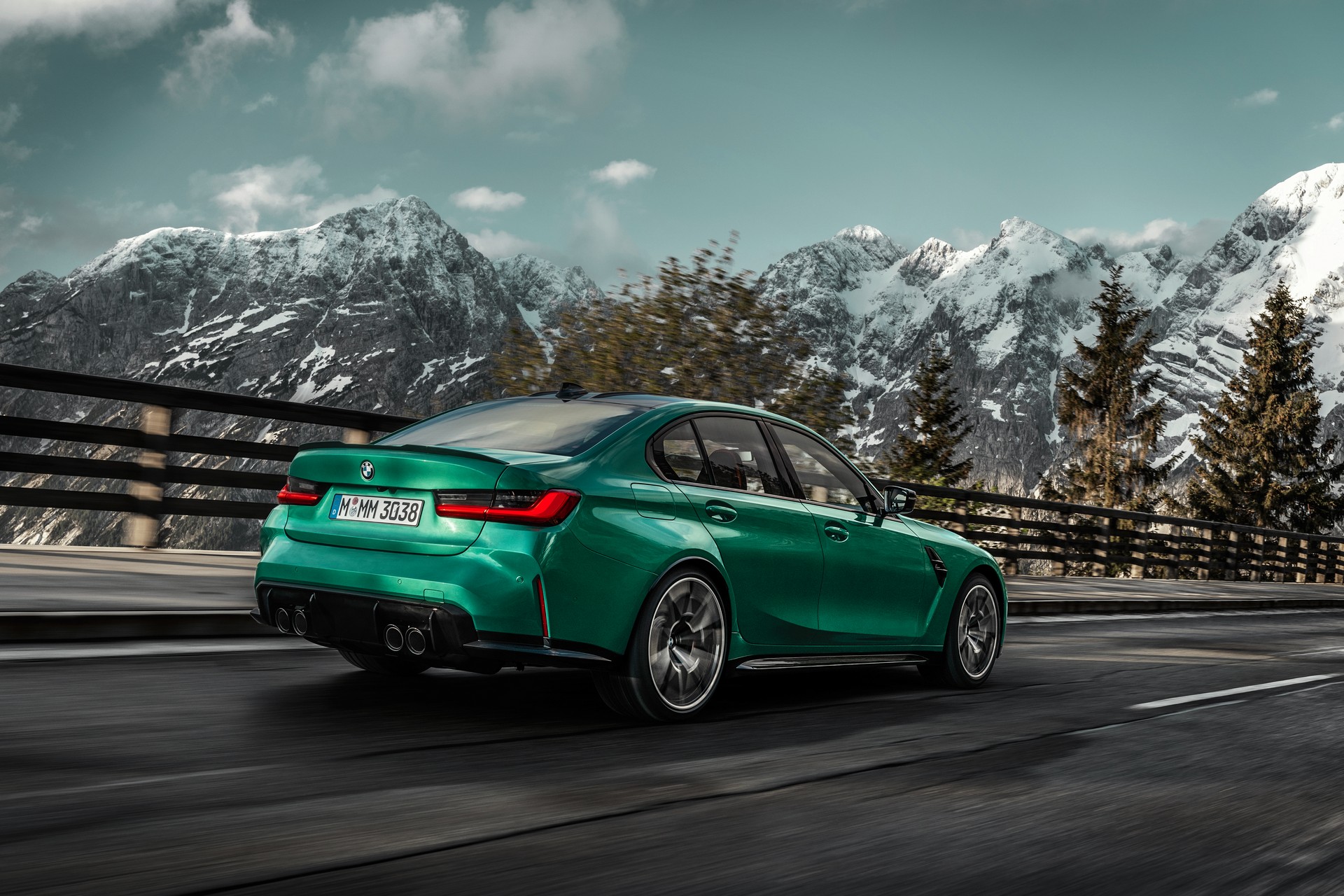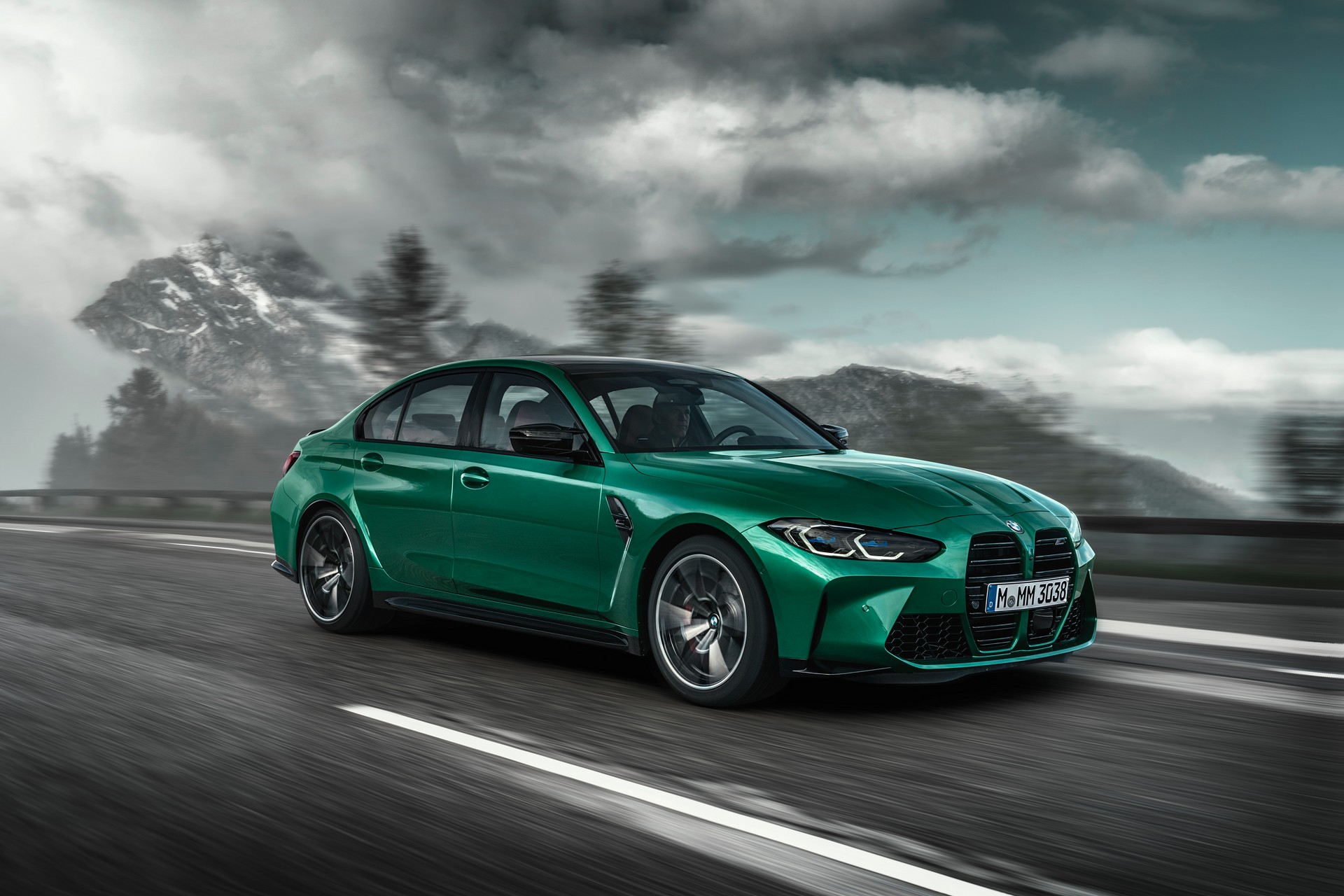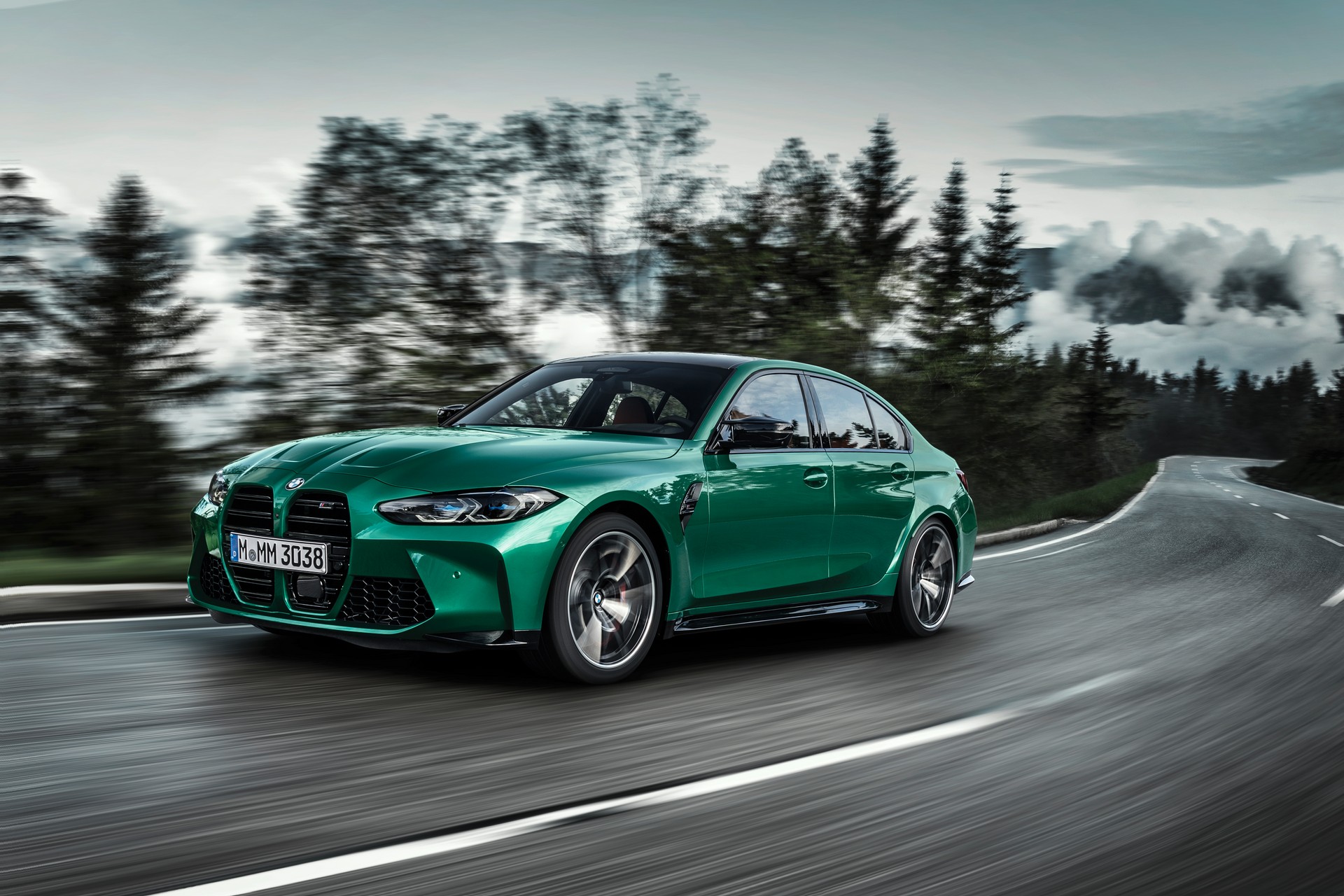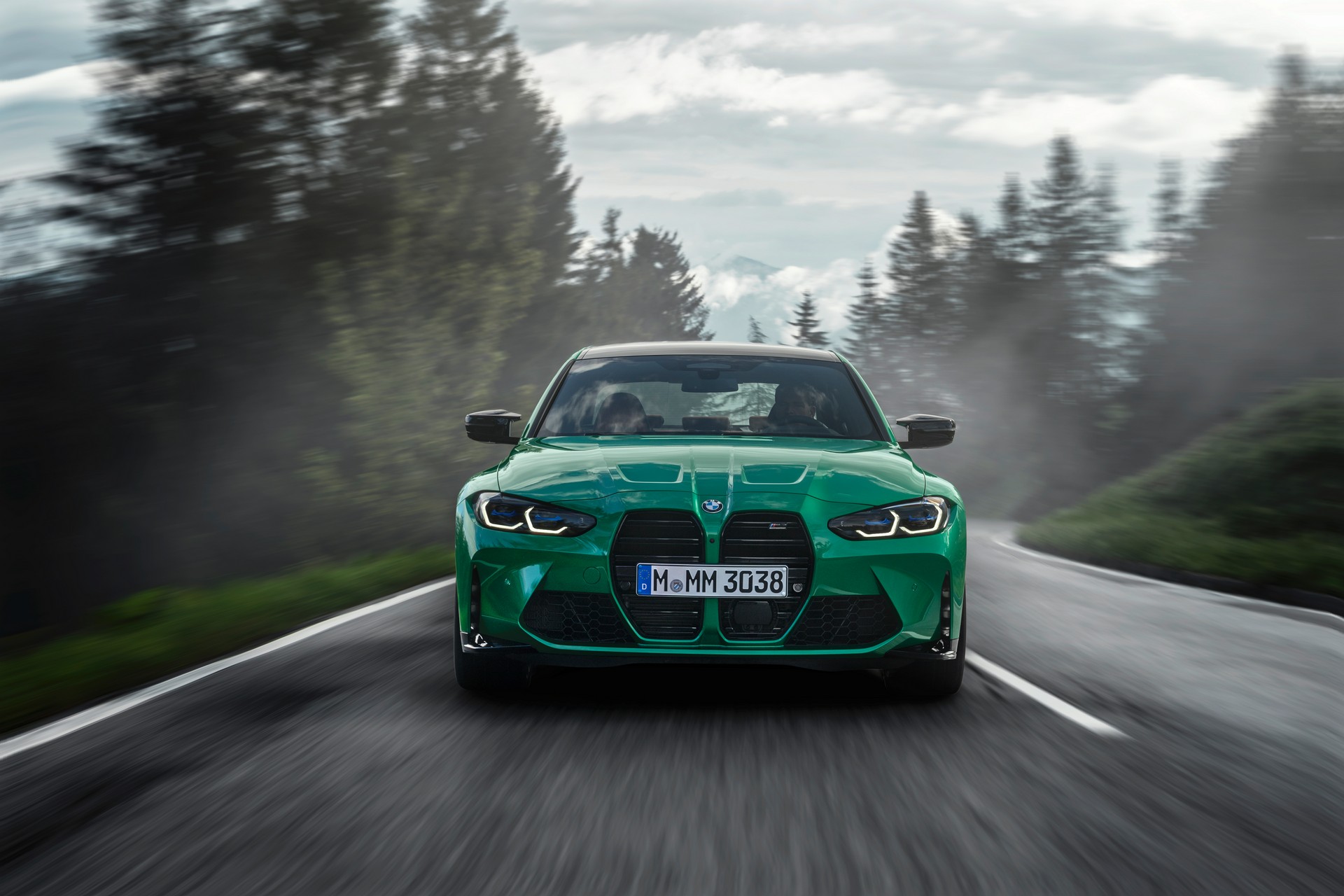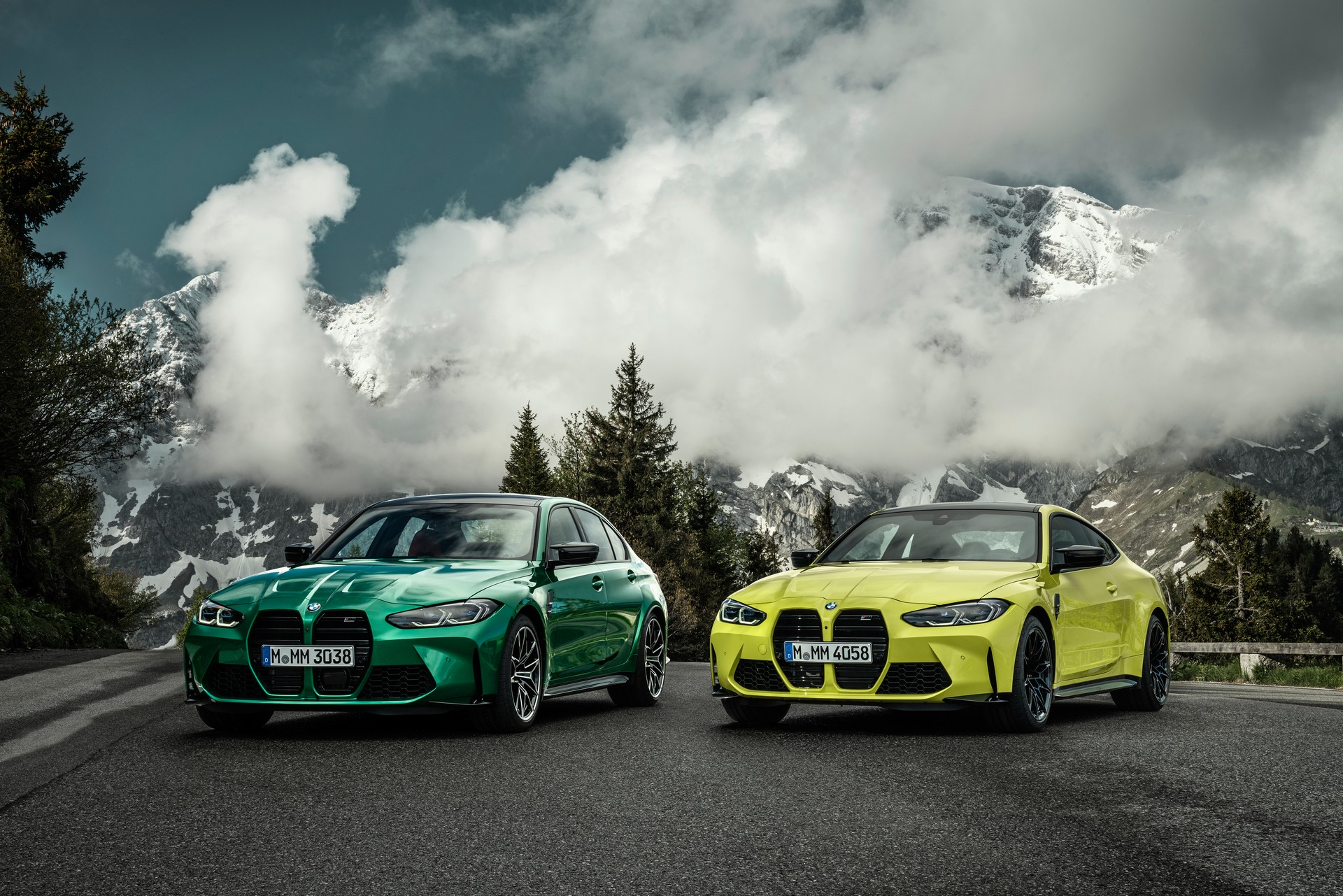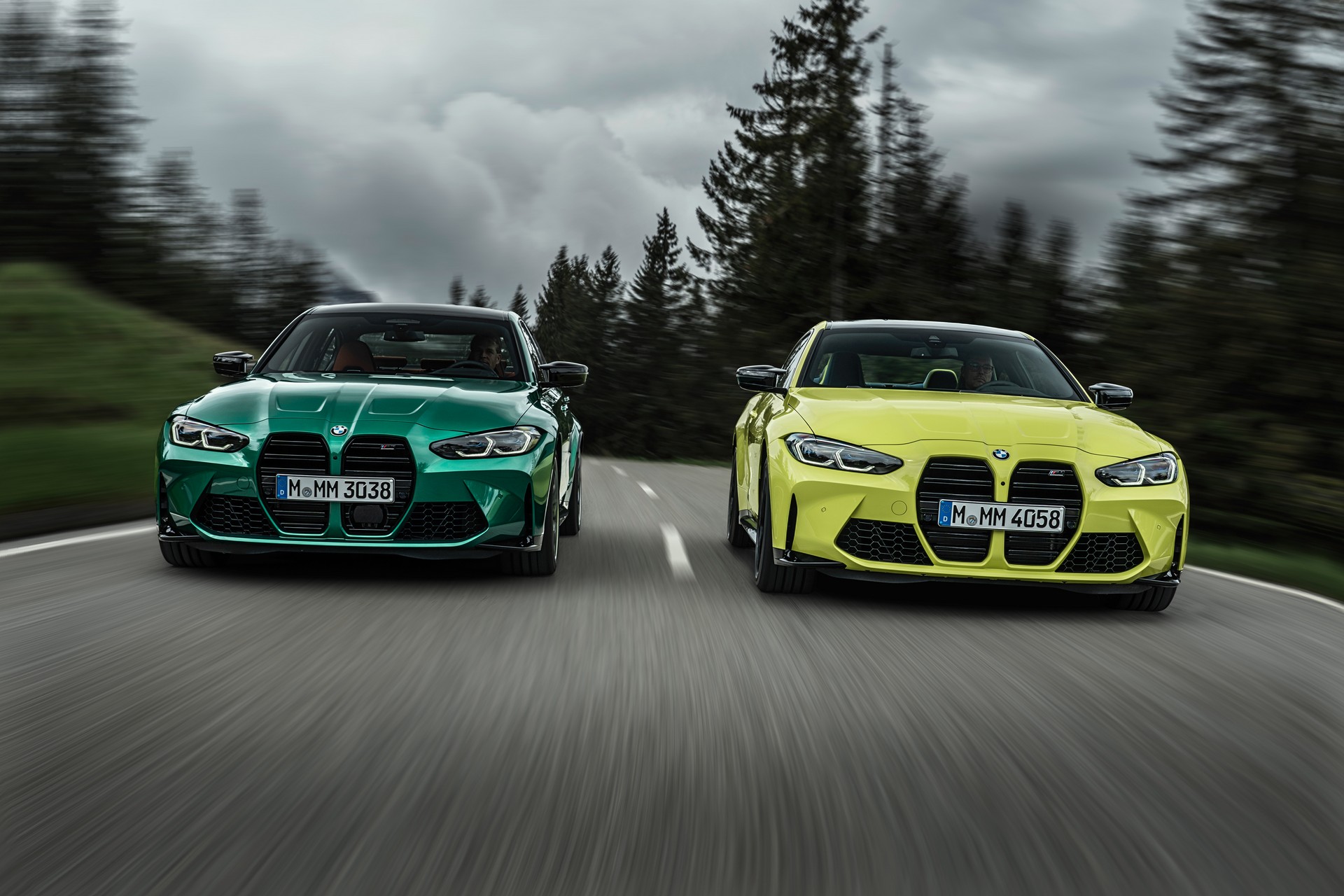BMW has long used the “ultimate driving machine” motto, but the messaging has been muddied thanks to front-wheel drive models such as the 2-Series Gran Coupe.
However, the M3 and M4 have always exemplified that slogan and the company is looking to build on their success with all-new versions which were introduced earlier tonight.
Starting under the hood, the cars have a twin-turbo 3.0-liter six-cylinder engine that produces 473 hp (352 kW / 479 PS) and 406 lb-ft (550 Nm) of torque. The Competition variants are a tad more powerful as they have 503 hp (375 kW / 510 PS) and 479 lb-ft (650 Nm) of torque.
Thanks to the added power, the M3 and M4 can accelerate from 0-60 mph (0-96 km/h) in 4.1 seconds, before hitting a top of 180 mph (290 km/h) when equipped with the M Driver’s Package. The Competition variants are even faster as the dash to 60 mph (96 km/h) is cut to 3.8 seconds, but the top speed remains unchanged.
Enthusiasts can breathe a sigh of relief as the company announced the standard M3 and M4 will be offered with a six-speed manual and rear-wheel drive. Besides keeping drivers involved, the gearbox weighs 50 lbs (22.7 kg) less than the eight-speed automatic and BMW says this helps to improve front-to-rear weight distribution.
Due to the extra torque, the Competition variants are automatic-only. To compensate, there’s a rev-matching downshift function and a manual mode that is controlled by steering wheel mounted paddle shifters.
Of course, the big news is the addition of all-wheel drive. Available exclusively on Competition variants, the M xDrive system is rear-biased and features an Active M rear differential.
To ensure the cars handle in a traditional BMW M fashion, torque is directed to the rear wheels during normal driving. When extra traction is needed, power is sent to the front wheels for added grip.
The all-wheel drive system has three different modes including the default 4WD setting. 4WD Sport directs more torque to the rear wheels during dynamic driving and is designed to work “particularly well” on the track. Customers can also select 2WD which switches off the dynamic stability control system and allows fans to enjoy a “pure rear-wheel drive experience without any system intervention.”
Speaking of handling, the cars come standard with an Adaptive M suspension and an M-specific double-joint spring strut front suspension. The latter features “newly developed aluminum wishbones with ball joints, an aluminum torque arm with new mounts, a forged swivel bearing with a unique spring strut clamp and lightweight wheel bearings with very a high camber range.”
The rear suspension uses a five-link setup with wishbone control arms that have been redesigned to provide “precise handling for the most demanding driver.” Last but not least, the front track grows by 1.5 inches (38 mm) to improve traction and directional stability.
The models have additional bracing as well as both feature a shock tower brace and vertical braces which connect the engine compartment to the front aluminum subframe. There’s also crossbar bracing and a brace which connects the rear subframe with the rear cargo area.
Other highlights include M Servotronic steering and an optional M Drive Professional package with M Traction Control. The latter feature is all-new and allows the driver to set the intervention threshold for wheel slip. Drivers can select from ten different settings and this enables them to find the “ideal balance of racing-car performance and directional stability.”
When it comes time to stop, drivers will be happy to know there’s a new high-performance braking system. It features six-piston calipers and 15 inch (380 mm) discs up front, as well as single-piston rear calipers which grab onto 14.6 inch (370 mm) discs.
Customers can also opt for a carbon ceramic braking system that has gold painted calipers as well as discs which measure 15.7 inches (400 mm) front and 15 inches (380 mm) rear.
Besides the impressive performance specs, the models have a bold front end that will undoubtedly prove controversial. A massive twin kidney grille dominates the front bumper and is flanked by sizeable air intakes with honeycomb inserts.
Moving further back, there’s a bulging hood and front fender vents. The models also have sporty side skirts, aerodynamic mirrors and a more aggressive rear bumper. The latter houses a black diffuser and openings for a four-tailpipe sports exhaust system.
The cars come equipped with LED headlights, a carbon-fiber-reinforced plastic roof and tinted taillights. Customers can also order an M Carbon exterior package which adds a number of carbon-fiber-reinforced plastic components including a rear spoiler, diffuser and mirror caps.
The standard M3 and M4 ride on forged alloy wheels which measure 18-inches front and 19-inches rear. Competition variants have larger 19- and 20-inch wheels with a polished rim that helps to accentuate their size.
Interior changes are relatively modest, but include a sport steering wheel, a red start/stop button and a special shifter in Competition variants. Aluminum tetragon trim is standard, but carbon fiber is also available and it even extends to the steering wheel.
Elsewhere, there are new sport seats which are wrapped in fine-grain Merino leather and available with ventilation for the first time. Customers can also order optional M Carbon bucket seats which are 21 lbs (9.5 kg) lighter and feature aggressive bolsters as well as an illuminated model badge.
Other highlights include a 12.3-inch digital instrument cluster and a 10.25-inch infotainment system with cloud-based BMW Maps as well as wireless Android Auto and Apple CarPlay. Unsurprisingly, there are a handful of M-specific features including an M Drift Analyzer and an M Laptimer.
Both models will arrive in the United States this March and pricing starts at $69,900 for the M3 and $71,800 for the M4 Coupe. The M3 Competition will retail for $72,800 while the M4 Competition will cost $74,700.




